Tiananmen Square
Forbidden City
Best Restaurants
Foods to Try
Nightlife in Beijing
Best Time to Visit
Weather & Climate
Beijing Airport Guide
Top Neighborhoods
Getting Around
Three-Day Itinerary
Things to Do
Shopping Streets
Great Wall of China

A Complete Guide to Visiting the Great Wall of China
bjdlzx / Getty Images
- How to Visit
Huanghuacheng
Jinshanling, tour or solo, how long to spend, where to stay.
The Great Wall of China stretches 13,000 miles over mountains, forests, reservoirs, and desert. It took a millennium to build, involved multiple dynasties, and pissed off a lot of Huns. Inextricably tied to the history of the country, to visit China without seeing it would cause you to be remiss not only with your friends and family at your homecoming, but somehow within yourself as well. To stand on its ramparts gives one simultaneously a sense of experiencing something collectively epic and individually infinitesimal.
Before you visit, decide if you want to go to an unrestored section, wild section or both. (“Wild” is a popular way to refer to the unrestored sections of the wall.) Consider physical ability and whom you’re traveling with (old people, kids, your sister who hates walking) when choosing a section.
This will be a workout. It’s not strolling on an elevated side walk. The Great Wall is stone waves steep and undulating. Grab your hiking boots and prepare for the walk of a lifetime.
How to Visit the Great Wall
Most visitors go to the Great Wall as part of a half or full day trip from Beijing. Visitors can choose from over 12 well-known sections and access them through a group tour, private driver, private tour, public transportation (sometimes combined with taxis), or by driving their own car. While the travel time from Beijing varies depending on section and traffic, it can take anywhere from one to three hours to get to there.
Worthwhile sections to visit in other provinces are the famous packed-earth Jiayuguan section in Jiayuguan, Gansu Province. It's a mere 4 miles (6 kilometers) from the city and easily accessible by public transport or a short taxi ride. Also, Ningxia Province’s Sanguankou section with its three passes is about 25 miles (40 kilometers) from the province's capital city of Yinchuan. It can be reached by hiring a private car.
If you want to hire a tour operator for a section near Beijing, Beijing Wonder Tour has affordable rates and English-speaking guides. Beijing Hiker’s offers hiking tours to the wild wall. If you want to hire a private car with an English-speaking driver but explore the wall on your own, you can choose from a number of options here . If you want to hire your own car, Hertz rents cars from the Beijing airport.
Best Parts of the Great Wall
The Great Wall spans nine provinces. The sections most commonly recommended are all close to Beijing. However, for less touristy and wilder parts of the wall, you can head to Gansu, Ningxia, or several other provinces less frequented by visitors. All of the ones listed below can be accessed from Beijing.
Popular among foreign tourists and easily accessible from Beijing, Mutianyu offers a well-restored wall with 23 watchtowers, replete with photo ops and views of the surrounding mountains and forests. You can hike, take a chair lift or cable car to the top, and toboggan down. It takes about two hours to walk the 1.4 miles of this section. If you go beyond tower 23, the wall is not restored, has no guardrails, and tourists are responsible for their own safety.
To get there hire a private driver or take the subway to Dongzhimen station. Walk upstairs to the North Bound Platform. Take the Express Bus 916 towards Huairou. After about an hour, get off at the Beidajie stop. Take bus H23 to Mutainyu or share a car with other tourists going there. Travel time is two to two and a half hours.
Simatai's main draw is night tours. Though Badaling is also open at night, Simatai has more ambient lighting and fewer crowds. You can take the cable car up and walk this 3-mile section for about one and half to two hours. Be aware that its grade increases rapidly (from 968 to 3,235 feet) and is super steep. The Simatai wall cuts through the Simatai Reservoir, and those who want to can zipline over it. For the day hikers, Heavenly Ladder and Sky Bridge are two extremely narrow and high parts of the wall with incredible views of mountain ridges.
To get there hire a private driver, or hop on the Airport Express subway line to Dongzhimen station. Take Bus 980 from Dongzhimen Long Distance Bus Station to Miyun Town and then take a taxi.
This section's surrounding countryside boasts a sea of yellow flowers in spring and summer. Other distinguishing features of Huanghuacheng include: boat rides on Haoming Lake, and fewer crowds than Mutianyu and Badaling. It can also be combined with Mutianyu for a day trip, as the two sections are only a 40-minute drive apart.
To get there hire a private car, or take the 916 bus or 916 express bus to Dongzhimen to Huairou Bus Station. Hop on the H21 bus to the Small West Lake (Lakeside Great Wall) Station, and walk north to the scenic area. By public transport, it will take at least two hours from central Beijing.
For those who can’t decide if they want to see a restored or wild section of wall, Jinshanling offers a beautiful mixture of both. Ideal for hikers, this section stretches 6.5 miles, runs along the Jinshanling Mountains, contains 67 watchtowers, five mountain passes, and very few tourists. If you hike in this section by itself, plan for two to five hours. You can also hike from this section to other sections, such as Simatai or Gubeikou.
To get there, hire a private driver or take the subway to Wangjing West Station. Hop on the bus to Luanping, and get off at Jinshanling Service Area. This bus will take about two hours to get to Jinshanling Service Area. Once you alight, you can take a free shuttle to the wall.
If you want to see the section of the wall closest to Beijing and can handle huge crowds, this will be your option. Though super touristy, Badaling has amazingly restored wide walkways and guardrails for its steeper parts. Like the Mutianyu section, it offers a cable car and toboggan rides for those who want to save their energy and feet. Plan for one and a half hours to visit this section of the Wall and walk the 2.3 miles of its restored path. Check out the 19 watchtowers along the way and be prepared for tons of hawkers.
To get there hire a private driver or take the subway to Jishuitan station. Go out exit B2 and hop on the 877 bus, a direct bus with a travel time of about one and a half hours to get there.
Tips for Visiting the Great Wall
Use these tips to make the most of your visit.
You do not need to book a tour to the Great Wall, though it can eliminate the stress of trip planning and language barriers. If you are traveling solo or with one or two other adults, hiring a driver or using public transport will most likely be your best options.
If you are traveling in a large group or with children or with elderly family members, a tour or private driver will be your best options. Some tours will take you to a government sponsored tea house or jade museum during the trip. Know what you’re buying if you go the tour route, and look for tours that state they do not do commissioned stops.
Weather-wise, spring and fall are the best times to see the Great Wall. Spring will provide beautiful verdant greens (and yellow blossoms around Huanghuacheng). In the fall, the rolling forested hills on either side of the wall will be dappled with red, orange, and yellow leaves. However, the best time to go to avoid crowds is winter.
Wear layers. It gets windy and most of the sections are exposed. Even the watchtowers have giant open window frames. If you go in the summer, take a hat and sunscreen.
Spend at least three to four hours on the wall, this is one of the Seven Wonders of the World and a UNESCO World Heritage site after all. Take some time to enjoy it. Sections can be steep (even if restored) and ascents slow. Stroll through the blockhouses and watch towers, sip water as you admire the surrounding hills, and zip down to the base in a toboggan (if you go to Badaling or Mutianyu).
If you want to experience the Great Wall early without leaving Beijing in the wee morning hours, consider staying at a hotel by the section you want to see. For Muitanyu, The Brickyard offers comfortable rooms, a restaurant, and a spa. Alternatively, if you want to go to the wall during the day, but also see it lit up at night, go to Simatai. Stay at Gubeishui Town Hotel and splurge on a luxury room with great views.
For intrepid explorers, it is possible to camp on the wall. However, you will need to do your own research and take all of your gear and provisions with you. There are no vendors in the wild sections. If you want to camp in a group tour, Great Wall Hiking offers what is sure to be a memorable experience of a night on the Great Wall.
The 12 Best Day Trips from Beijing
The Top 19 Things to Do in Beijing
Visitor's Guide to the Terracotta Warriors Museum in Xi'an
3 Days in Beijing: The Ultimate Itinerary
Beijing Guide: Planning Your Trip
How to Visit Los Angeles Without a Car
Getting To and From LaGuardia Airport in NYC
A Guide to Airports in Beijing
Great Activities for Kids Visiting China
How to Travel from Phoenix to Sedona by Bus, Shuttle, and Car
Your Trip to the Amalfi Coast: The Complete Guide
The Most Crowded Places in China
Interesting Facts About the Great Wall of China
The 10 Best Hikes in China
How to Travel From Cancun to Cozumel by Bus, Car, Ferry, and Plane
The Ultimate Guide to the Taj Mahal in India
- 86-19138970032 (GMT+8 18:00~09:00)

- Beijing Xian Tours
- Shanghai Beijing Tours
- Hong Kong Guilin Tours
- Hangzhou Suzhou Tours
- Kunming Lijiang Tours
- Shanghai Yangtze Cruise Tours
- Chengdu Tibet Tours
- More Short Stay Tours
- China Tours in January
- China Tours in February
- China Tours in March
- China Tours in April
- China Tours in May
- China Tours in June
- China Tours in July
- China Tours in August
- China Tours in September
- China Tours in October
- China Tours in November
- China Tours in December

- High Speed Trains
- China Yangtze Cruise Tour
- Photography
- Desert Adventure
- Ethnic Villages
- Biking Tours
- Kung Fu Tours
- Heritage Sites Exploration
- China Spring Tours
- China Summer Tours
- China Autumn Tours
- China Winter Tours
Notice! 2024 available cruise routes include 4~5 days Chongqing-Yichang(most classic) and 11~12 days Chongqing-Yichang-Shanghai(limited).

- Best-value Yangtze Cruises
- Top Family-friendly Cruise Ships
- Top 3 Luxury Yangtze River Cruises
- Yangtze River Highlights
- Yangtze River Cruise Routes
- Upstream or Downstream?
- Dining & Drinking
- Accommodations
- On-board Activities
- Yangtze Cruise Booking Steps

- Inner Mongolia

- Fanjingshan
- How to Plan Your First China Tour
- How to Plan Beijing Tour
- How to Plan Xian Tour
- How to Plan Shanghai Tour
- How to Plan Guilin Tour
- How to Plan Sichuan Tour
- How to Plan Family Tour
- 2024 China Travel Ideas
- Best Time to Visit China
- What to Pack for Your China Journey
- Make Payment in China
- Updated China Travel News
- Ultimate Chinese Visa Guide
- Chinese Visa Types
- Chinese Visa Requirements
- Do I Need a Visa for China
- Chinese Visa Application
- Chinese Visa Exemptions
- 144-hour Visa Free
- Shenzhen Visa on Arrival
- Hainan 30-day Visa Free
- Embassies & Consulates
- Invitation Letter
- Useful Visa FAQs & Tips
- Entry Regulations
- Baggage Allowance
- Customs Declaration
- Exit Regulation
- How to Book Train Tickets
- How to Collect Train Tickets
- How to Cancel & Alter Train Tickets
- How to Read Train Tickets
- China High Speed Train Types
- Seats Class & How to Choose
- Friendly Facilities on the Train
- The Train Station Departure Process
- Available Food and Drinks on the Train
- Western Toilets on the Train
- Luggage Racks & Baggage Allowance
- Beijing Train Stations
- Shanghai Train Stations
- Guilin Train Stations
- Xian Train Stations
- Chengdu Train Stations
- Hong Kong West Kowloon Railway Station
- Beijing - Xian
- Beijing - Shanghai
- Guangzhou - Shanghai
- Shenzhen - Shanghai
- Chengdu - Xian
- Shanghai - Hangzhou
- Shanghai - Xian
- Chengdu - Chongqing
- Kunming - Lijiang
- Beijing Capital International
- Beijing Daxing International
- Shanghai Pudong International
- Shanghai Hongqiao International
- Guangzhou Baiyun International
- Hangzhou Xiaoshan International
- Chengdu Tianfu International
- Chengdu Shuangliu International
- Xian Xianyang International
- Shanghai - Beijing
- Hong Kong - Shanghai
- Guangzhou - Beijing
- Chengdu - Lhasa
- Shanghai - Guilin
- Shanghai - Sanya
- Travel in Spring Season
- Travel in Summer Season
- Travel in Autumn Season
- Travel in Winter Season
- Weather in January
- Weather in February
- Weather in March
- Weather in April
- Weather in May
- Weather in June
- Weather in July
- Weather in August
- Weather in September
- Weather in October
- Weather in November
- Weather in December
- Top 10 China Destinations
- Top 15 Things to Do
- China World Heritage Sites
- Top 10 Best Natural Beauties
- Top 10 Museums in China
- Top 10 Old Towns & Villages
- Five Great Mountains in China
- Top 10 Monasteries & Temples
- Top 10 Ski Resorts
- Top 10 Beautiful Lakes in China
- 7 Best Beaches in Sanya
- Top 6 Beautiful Waterfalls
- Panda Volunteering
- Having fun on Ice and Snow Festival
- About Us Who We Are Our Team Why Travel with Us Feedback & Reviews Travel Stories Travelers' Gallery Payment Guide Customer Support Contact Us
- Tour Experiences
Destinations
- Travel Guide
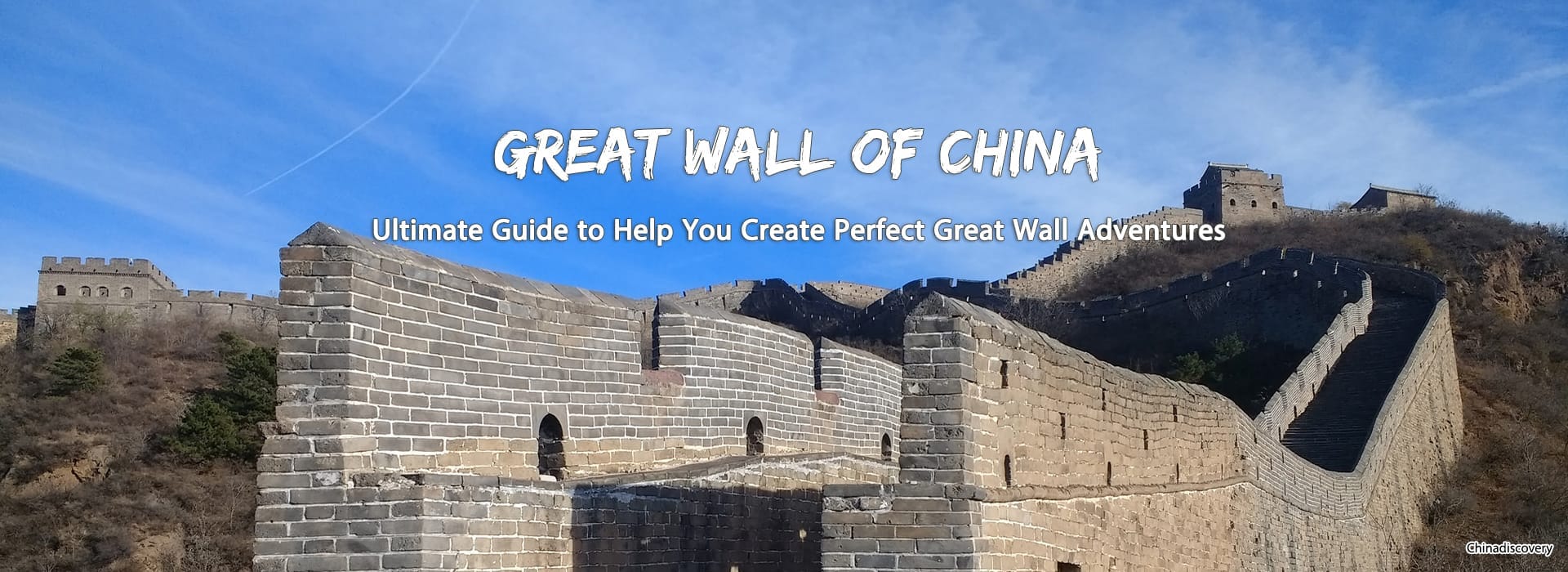
Ultimate Great Wall Travel Guide | Trip Planning Ideas 2024/2025
As one of the Seven Wonders of the World, the Great Wall of China is on almost everyone’s bucket list. There is nothing that can be compared with the experience of standing on the soaring watchtowers to see how this colossal ancient engineering project spanning across thousands of mile from west of China to its east. No matter how long you want to hike, and how wild scenery you want to see, there is always a section of the Great Wall for you. But how much do you really know about the Great Wall? Do you have idea where to start with your Great Wall tour planning? Which section of Great Wall suits you well? When is the best time to have a Greaet Tour? You will find there are so many things to learn and prepare before you go. Here we have complied this Great Wall of China Ultimate Guide which have synthesized the most useful insights and tips from our Great Wall researcher and Beijing local tour guide to help you plan the perfect Great Wall adventure.
A Beijing tour without Great Wall is not complete, is that true?
This is definitely true. Just as Beijing is the no. 1 destination in China, the Great Wall is also no doubt the No. 1 attraction in Beijing. It is on almost everyone’s bucket list as an essential stop on any trip to Beijing. The Great Wall is one of the World’s Seven Wonders, also one of the most impressive ancient structures on the planet. It boasts a history of overy 2,000 years, and stretches more than 5,500 miles from northwest to northeast of China. There are many featured sections location near Beijing. You only need a half day to see, walk, climb and experience one highlighting section of the Great Wall. If time allows, you are suggested to spend 1 or 2 full days to enjoy an in-depth hiking to one or 2 wild sections of the Great Wall.
Recommended Beijing Tours including Great Wall:
- 2 Days Beijing Layover Highlights Tour (Highlights of Beijing) - 3 Days Beijing Essential Short Stay Tour (Transit Visa Free) - 4 Days Classic Beijing Tour Package (Ancient and Modernity Contrast)
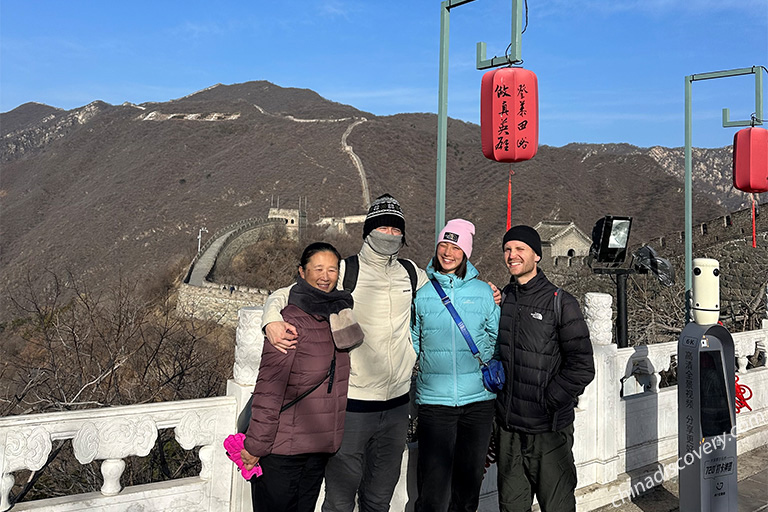
Mutianyu Section of Great Wall in July
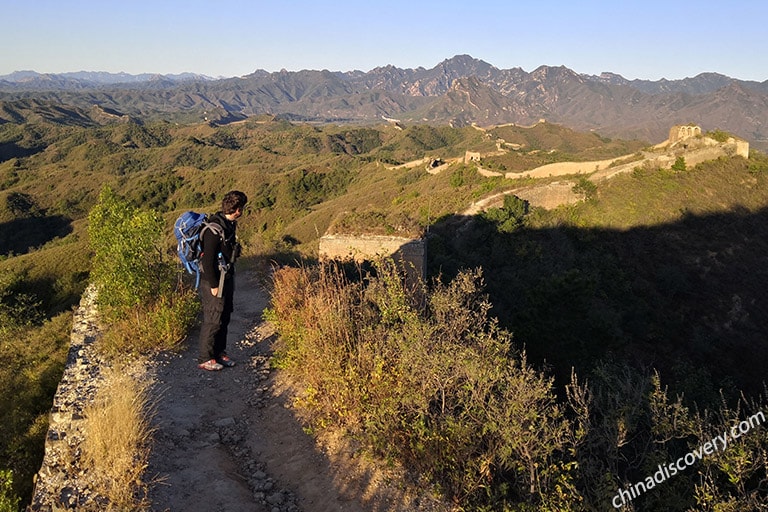
Gubekou Section of Great Wall
Always Consider Traveling with a Guide and Tour Package
The best way to visit the Great Walll is to travel with a private tour. Most of costs, including tickets, cable cars, meals and hotels, on the tour are covered. More importantly, you will be accompanied by the experienced guide, which is very important and necessary when you are going to visit the remote and wild sections of Great Wall, such as Jinshanling, Simatai, Gubeikou, etc. You guide will give you many helpful advice on the right and safe routes to hike. As you may know, some wild sections of the Great Wall are very dangerous to hike, and hard to rescue as well if an accident occurs. You will also get many handy tips and useful knowledge during your Great Wall visit. Traveling with a private tour, you will save a lof of time and get rid of the crowdedness of public transportation. Besides, some sections of Great Wall can only be reached by private cars, such as Gubeikou.
Best Selling Beijing Tour including Mutianyu Great Wall:
- 4 Days Classic Beijing Tour Package (Ancient and Modernity Contrast)
Can I Do The Great Wall on a Layover?
You can visit the Great Wall on a layover, but you must have at least 8 hours to spend before your flight departing. You will need about 1 hour to exist the airport, then 2~3 hours to find transportation and transfer to the Great Wall, and 2~3 hours to visit and walk the Wall, then get back to the airport to catch your flight. You also have to pray for not having traffic jams. Currently there is no public transportation from the airport to the Great Wall. You have to hire a taxi or book a private transfer from travel agencies. Generally speaking, if you have about 8~12 hours for layover, you can go to visit one section of Great Wall, such as Mutianyu, Huanghuacheng, Badaling or Juyongguan. To visit Jinshanling, Simatai, Gubekou section, you need at least a full day (24hrs).
Currently you can enjoy a visa-tree stay up to 144 hours in Beijing if you meet the Beijing 144-hour Transit Visa Free Policy . It time allows, you are strongly suggested to have a longer stay in Beijing to explore the Great Wall with other Beijing highlights, such as Forbidden City, Summer Palace, Temple of Heaven, etc., at a slower leisure pace.
Recommended Beijing Visa Free Tour Package starting from the airport:
- 3 Days Beijing Essential Short Stay Tour (Transit Visa Free)
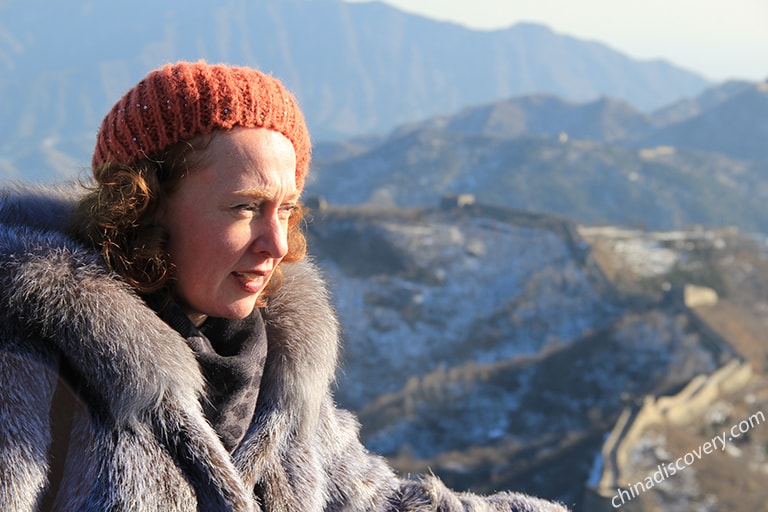
Badaling Section of Great Wall (65km from Beijing)
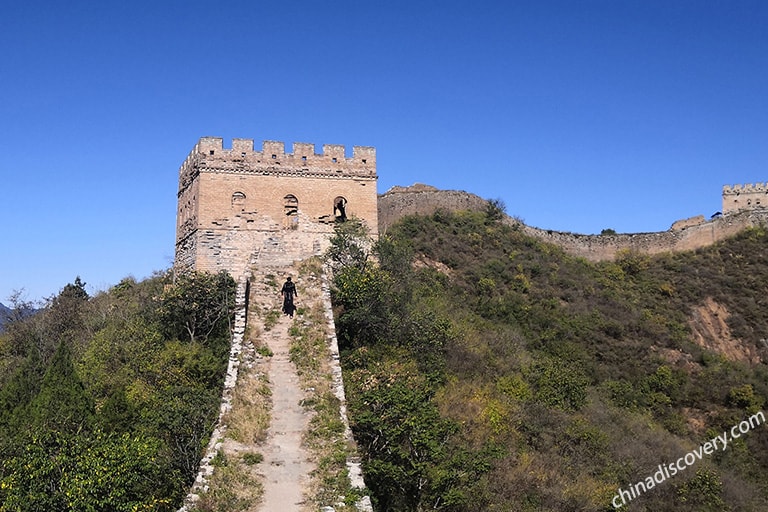
Hiking on the Great Wall
Is the Great Wall a Kid-Friendly Destination?
The Great Wall has many sections. Some are kid-friendly, and some not. Walking on the Great Wall is physical demanding. You should choose the sections of Great Wall which are easier to walk and not too far away from the city. Generally speaking, Mutianyu and Huanghuacheng are two most kid-friendly destination. They are both only about 1.5hrs’ driving from central Beijing. Both two sections provide cable cars to transport to the top of the Great Wall. Mutianyu also has an exciting toboggan ride for you and your kids to slide down the great wall like an adventure. While in Huanghuacheng section of Great Wall, you can take a boat on the lake whiling enjoying the magnificent great wall landscape. If your kids are over 12 years ago, you can also plan a hike trip to Jinshanling, Simatai or Gubekou sections of the Great Wall.
Keep Reading: - Top Beijing Family Tours
What Are the Best Sections of the Great Wall to Visit from Beijing?
There are more than 10 sections of Great Wall located in the northern area about 60~160km from central Beijing. Mutianyu is the best option if you travel with kids, or want to enjoy a leisure and scenic hike. If you are a hiker, choose 1 or 2 sections among Jinshanling, Simatai and Gubekou to hike 1 or 2 days. If you are the second-timer, maybe Huanghuacheng section will be very attractive to you. Its lakeside walls are very stunning.
Keep Reading: - Complete Guide on Which Section of Great Wall to Visit
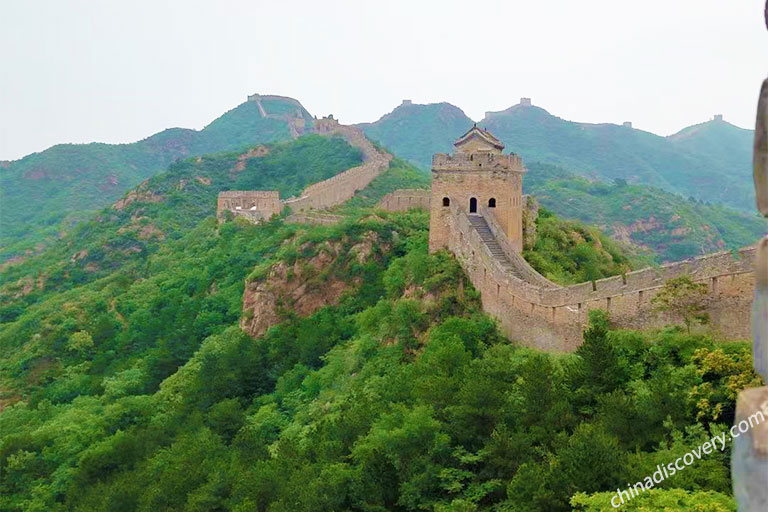
Magnificent Jinshanling Great Wall Landscape
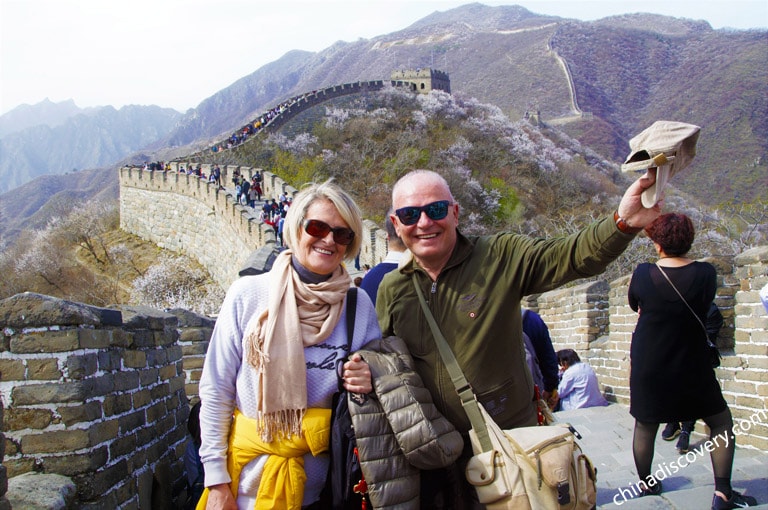
Mutianyu Great Wall in Spring
When is the Best Time to Visit the Great Wall?
You’d better not visit the popular sections of the Great Wall, such as Badaling and Mutianyu, during Chinese holidays and festivals to avoid the crowds, including the Spring Festival(usually in Febuary), National Day(1st to 7th, October), Middle Autumn Festival (usually in later September), etc. If your time is not flexible, try to visit the not crowded sections of Great Wall, such as Simatai, Jinshanling, Gubeikou, etc.
How do I get to the Great Wall of China?
The location of each section of Great Wall varies greatly so is the available transportation. Some sections, which are closer to Beijing, can be reached easily, such as Badaling, Mutianyu, Juyongguan and Huanghuacheng. These sections of Great Wall provide flexible choices of transportation, including private car, train, tourist bus and public buses. Some sections of Great Wall are much further away from Chengdu, including Jinshanling, Simatai, Gubekou. Travellers can only get there by private car or public buses (usually takes much longer, and need to change bus for several times).
Keep Reading: - Complete Guide on How to Get to Great Wall from Beijing
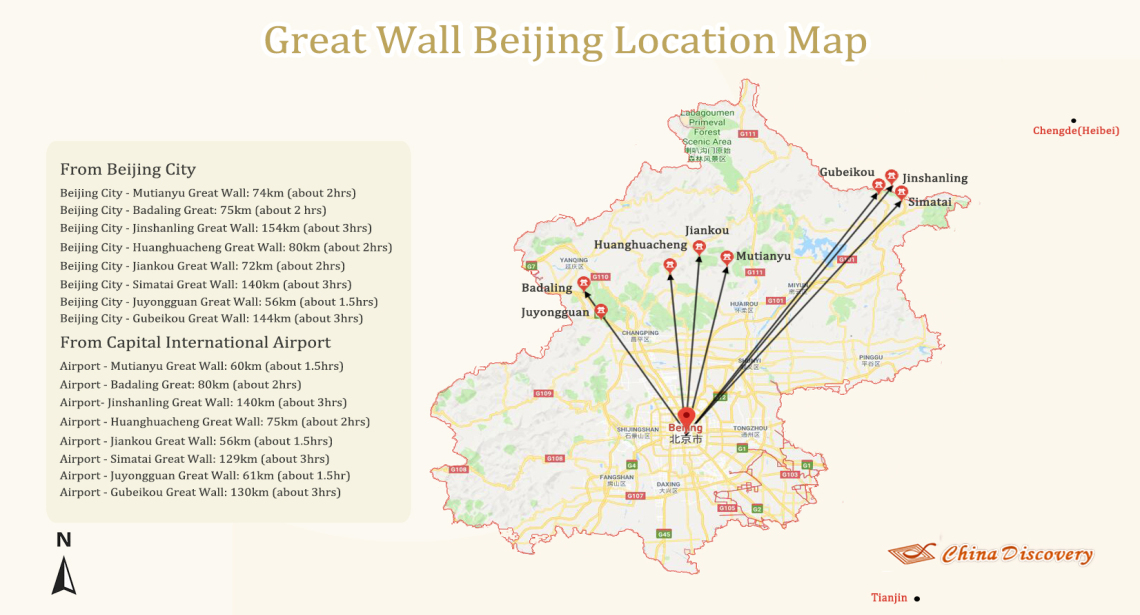
Beijing Great Wall Location Map
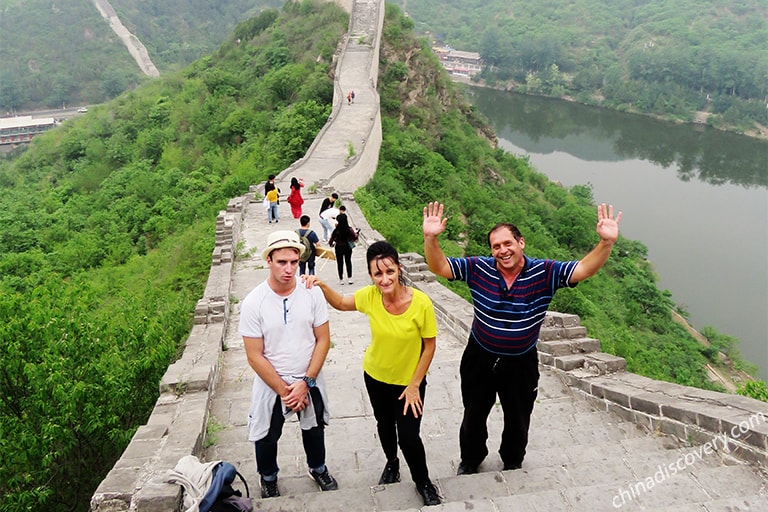
Huanghuacheng Great Wall with Waterscape
Are There Some Unique Ways to Explore the Great Wall of China?
There are many ways to explore the charms of the Great Wall. You can plan your Great Wall visit according to your interest (hike, photography, history, landscape), time (2hours, half day, 1 day, 2 days) and physical condition. Below are Top 5 Great Wall Experiences:
Hiking the wild section of Great Wall - the in-depth way to explore the Great Wall. It’s adventurous, hidropoietic and scenic. You have to pack well for the hiking as there is no restaurant and shops on the Great Wall. Some basic trekking gears are required. Learn more about Great Wall Hiking .
Visiting the Great Wall at Night - Simatai section of Great Wall is the only section of Great Wall, which is open for tourist in evening. It will be lit up during 17:30~21. 00. Simatai Great Wall is about 3hrs’ driving from Beijing. You are suggested to take a full day tour which include Simatai night visit with Jinshanling Great Wall daytime hiking. 4 Days Beijing Essence Tour with Simatai Great Wall Night Sightseeing .
Picnic on the Great Wall – having a picnic in a watchtower on the Great Wall is a part of the Great Wall hiking on these wild unrestored sections of Great Wall. But only some of the wild sections of the Great Wall allow tourists to have a picnic, such as Gubekou, Jinshanling, etc.
Ride a Toboggan down the Great Wall - it’s a very fast and exciting way to descend the Great Wall. Currently, only Mutianyu and Badaling operate Toboggan ride. Mutianyu Great Wall Taboggan | Badaling Great Wall Taboggan .
Taking a boat to see the Great Wall - very recommended for the second Great Wall visit if you already visited Mutianyu or Badaling. Taking a boat leisurely cruising on the lake while enjoying the Huanghuacheng Section Great Wall hanging over the mountain near the lake is best way to recover from the tough Great Wall hike.
Can I Visit the Great Wall of China at Night?
Yes, you can visit the Great Wall of China, but only the Simatai section is open to tourist in the night, usually from17:30 to 21:00. Badaling section of Great Wall is sometimes lit up in the night, but not allow tourists to get onto the wall.
How to visit Simatai Great Wall in the night?
Simatai section of Great Wall is located close to Gubei Water Town, Miyun District, 150 kilometers (94 miles) from Beijing, approx. 2.5~3 hours' drive. Please note all visitors who visit Simatai section of Great Wall during daytime must exit the scenic area before 17:00. Then it will reopen for night visitors at 17:30 after getting lights on. If you want to visit the Wall in both daytime and night, you have to buy tickets twice. Night visitors have to take cable car up to the Great Wall, and take cable car down as well. The night visit is around 1 hour. Currently only the part between No. 5 tower and No.6 tower is open in the nighttime. Our suggestion is to visit another section of Great Wall nearby in the daytime, such as Jinshanling or Gubeikou, and visit Simatai in the night so that you don’t have to visit Simatai for twice.
After the Great Wall night tour, you can choose to transfer back to the city Beijing, or stay a night at Gubei Water Town at the foot of the Great Wall.
Recommended Simatai Great Wall Night Tour - 4 Days Beijing Essence Tour with Simatai Great Wall Night Sightseeing
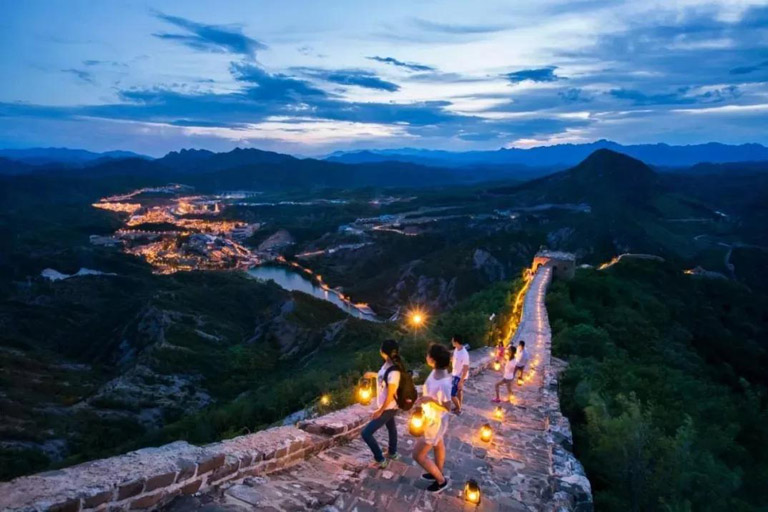
Simatai Great Wall is the Only Section of Great Wall Open and Lit Up in the Evening
Can I Camp on the Great Wall of China?
Available camping season is from late March to June, and from September to early October. July and August are not recommended as it takes much risk of disruption by thunderstorms, heavy rain, or extreme hot. It is also not recommended to camp during winter days. It’s very cold and windy especially during nighttime.
Accessibility at the Great Wall of China
The Great Wall is not very wheelchair friendly because most sections of the Great Wall were constructed on treacherous ridge of up-and-down mountains, and the grounds on the wall are mostly made by stone steps. Some wild sections of Great Wall even don’t have a road to walk as the walls and towers are broken. But this doesn’t mean the wheelchair travellers or the elderly can not visit the Great Wall. Actually, the lower paths of most sections of Great Wall are accessible by wheelchair, and some sections are generally wheelchair friendly. In Badaling Section of Great Wall, wheelchair travellers can take the ramps to get to the first north watchtower. The scenic area also offers elevator service. In Mutianyu Section of Great Wall, wheelchair travellers can take a cable car directly up to the Wall. The fortress of Juyongguan section is accessible by wheel chair.
Keep Reading: Mutianyu Great Wall Cable Car | Badaling Great Wall Cable Car
Best Great Wall Trips for 2024
No matter it is your first, or the second or the third trip to the Great Wall, China Discovery will always find a suitable tour package for you to see and experience the Great Wall in the best way. If you are one of the first-timers, you are suggested to visit Mutianyu section of Great Wall or Jinshanling Great Wall. If you are the second-timers, it's time to take a memorable hike to those wild section of Great Wall, such as Simatai, Gubeikou, Huanghuacheng, etc. If you still have no idea where to start, you can contact us to design a tailor-made Great Wall trip for you.
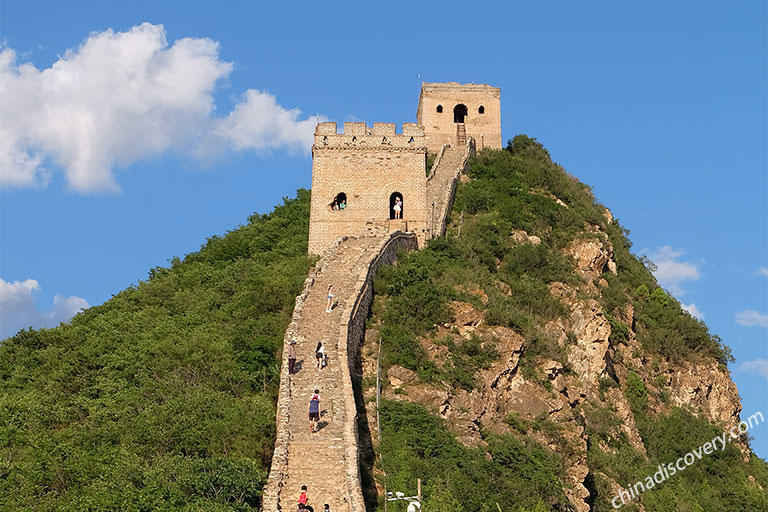
Jinshanling Great Wall, Simatai Great Wall

Great Wall Section(s): Mutianyu/Huanghuacheng
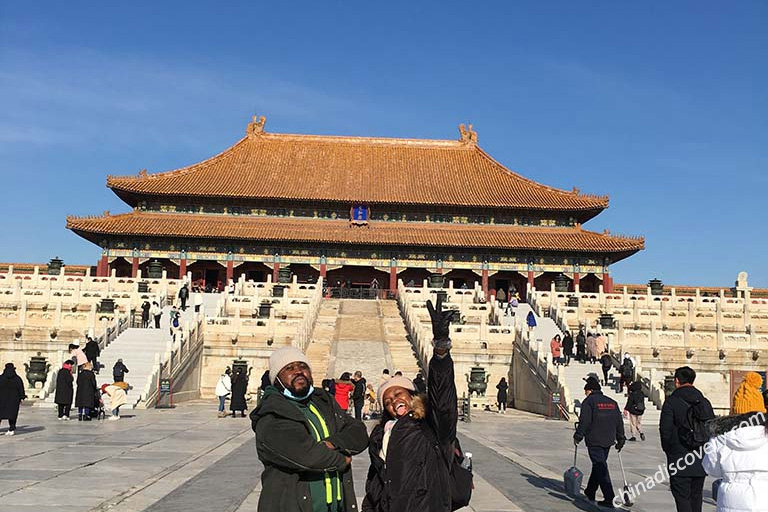
Forbidden City, Jingshan Park, Mutianyu Great Wall, Hutong, Bird's Nest, Water Cube
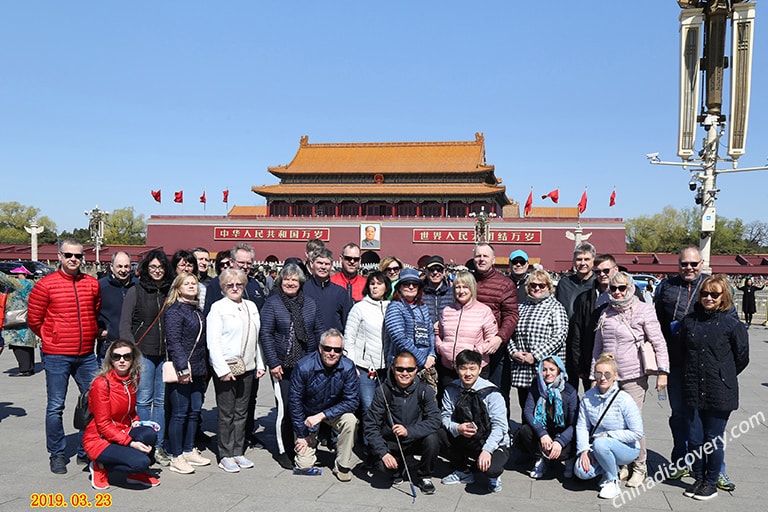
Great Wall Section(s): Jinshanling
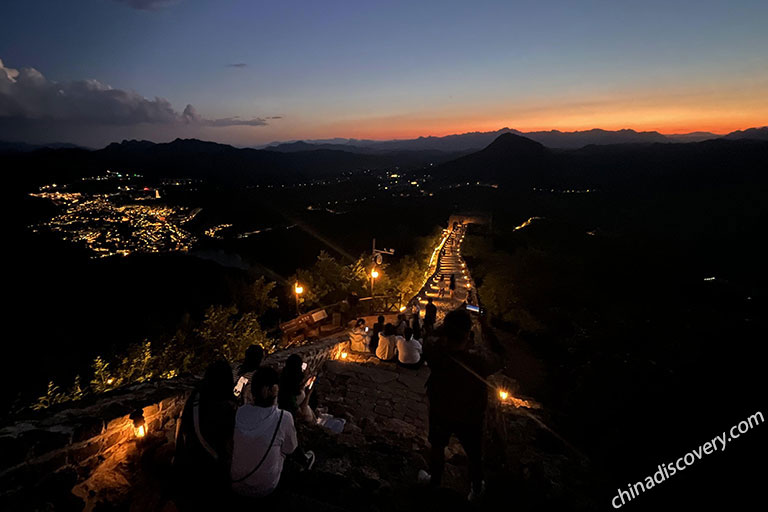
Great Wall Sections: Jinshanling + Simatai
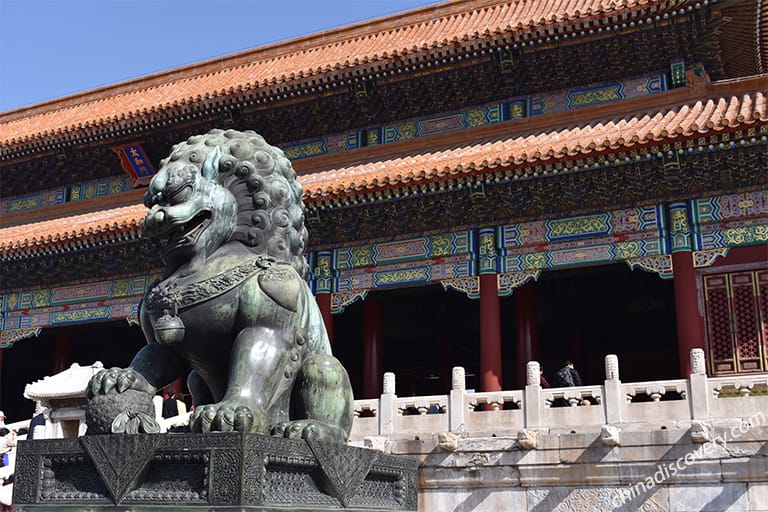
Great Wall Section(s): Mutianyu
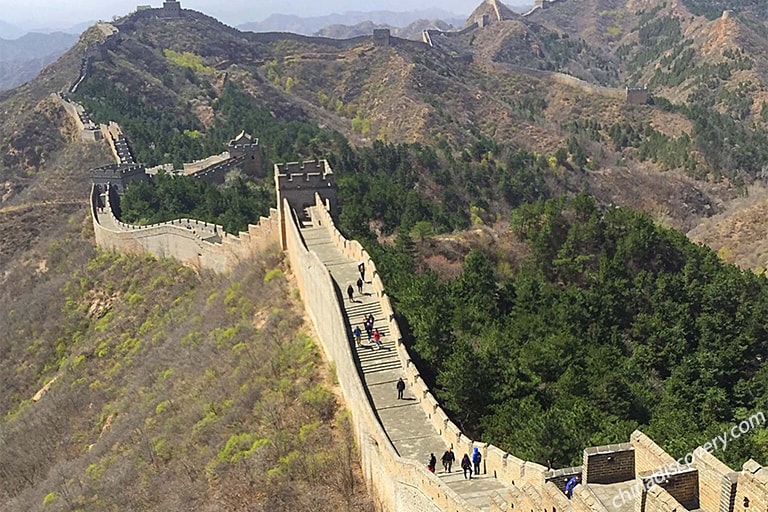
Forbidden City, Terracotta Warriors, Jinshanling Great Wall hiking, Mount Huashan hiking
Start planning your tailor-made holiday to China by contacting one of our specialists. Once inquired, you’ll get a response within 0.5~23.5 hours.

Have a question? Get answers from our travel experts or guests
- Your Question:
- Your Email:
- Affordable and valuable price
- 100% tailor-made packages
- Highly rated customers reviews
- Efficient customer support
China Tours
- Top 10 China Tours
- Classic China Tours
- China Tours from Beijing
- China Tours from Shanghai
- China Tours from Hong Kong
- China Tours from Chengdu
- Short China Trips
- Customize China Tour
- China Panda Tours
- Family Tour with Kids
- High-Speed Train Tour
- Silk Road Travel
- Yangtze River Cruise
- Hiking & Trekking Tours
- Photography Tours
- China Minority Travel
- Beijing Shanghai Tours
- Shanghai Yangtze Tours
- Chengdu Jiuzhaigou Tours
- Chengdu Lhasa Tours
- Suzhou Hangzhou Tours
- Guilin & Yangshuo
- Zhangjiajie
“Very good experience”
“WONDERFUL 25 DAYS IN CHINA - PRIVATE TOUR”
“Awesome China tour from northeast to southwest”
Any questions, please email us at: [email protected] or call us at: 86-19138970032 (Monday-Friday 9 a.m. to 6 p.m. GMT+8)
- Terms & Condition
- Privacy Policy
- Customer Support
Copyright © 2011-2024. All rights reserved.
Cookie policy
We use cookies to give you the best experience on our website. Continue using our website means you agree with our cookie policy. For more info, please read here .
Beijing Tour Guide’s Insider Tips for Best Way to See the Great Wall
Welcome to Beijing, the gateway to one of the world’s most extraordinary wonders – the Great Wall of China. As a local tour guide, I am excited to share my insider tips on making your visit to the Great Wall an unforgettable experience. In this comprehensive guide, I’ll reveal the best ways to see and appreciate this architectural marvel, ensuring you leave with incredible memories to cherish.
Selecting the Perfect Section
With numerous sections of the Great Wall , selecting the one that matches your preferences and travel goals is essential. I’ll provide an overview of popular sections like Badaling, Mutianyu, Jinshanling, and Simatai, highlighting their unique characteristics, accessibility, and crowd levels. This will help you choose the ideal section that meets your expectations.
Recommend No. 1 Choose Jinshanling Great Wall!
Jinshanling , a section of the Great Wall located in Hebei rather than Beijing, is often overlooked by tourists. However, its stunning views, peaceful atmosphere, and flexible visiting hours make it a hidden gem. Don’t just take my word for it; check out the photos and videos online. Even other sections of the Great Wall use images from Jinshanling in their advertisements. Unlike the more popular sections, Jinshanling offers the opportunity to schedule sunrise or sunset tours and has consistently fewer visitors due to its distance from Beijing. Explore this captivating destination and create unforgettable memories amidst its remarkable landscape.
Recommend NO. 2 Mutianyu Great Wall
For a layover or limited time (half-day trip), the nearest Great Wall to Beijing city is Juyongguan. It’s just 60 km away and can be reached within a one-hour car ride. If you have more time, consider visiting Mutianyu , less crowded than Badaling. For those on a layover trip from Beijing airport, Mutianyu is the closest option, approximately 55 km away, requiring about 1 hour and 20 minutes of travel time. With limited time, Mutianyu is your best choice.
Everything you need to know before visit Mutianyu Great Wall
With kids or Seniors who want a leisure trip
A cable car is crucial for traveling with kids or seniors seeking a leisurely trip. Four sections of the Great Wall offer cable cars: Badaling, Mutianyu, Simatai, and Jinshanling. However, I recommend Jinshanling or Juyongguan Great Wall for convenience and ease. The path to the cable car is flat, allowing for a comfortable walk or transportation assistance. On the other hand, Mutianyu’s toboggan ride is an exciting highlight for kids. However, traveling during the high season or the Chinese holiday can be busy.
Exploring Off-the-Beaten-Path
For those seeking a more adventurous and authentic experience, I’ll introduce you to lesser-known sections of the Great Wall that offer unique insights and stunning views. These hidden gems provide an opportunity to immerse yourself in the untamed beauty of the wall and escape the tourist crowds. Uncover secret trails and less-explored sections for a truly memorable adventure.
How to choose an excellent wall hike tour?
There are many hikes you can choose to hike the Great Wall, but there are two most famous hikes you can choose from:
A. Jiankou to Mutianyu
B. Jinshanling to Simatai west
C. Gubeikou to Jinshanling Hike
These hikes are hard to decide as they are all great and offer an excellent view of the Great Wall. However, if you like a stricter hike, Jiankou to Mutianyu with 11kms beats the Jinshanling. If you want a more peaceful hike, choose Jinshanling to Simatai West, as Mutianyu is always busy.
Jinshanling to Gubeikou Great Wall Hiking with Gourmet Picnic
Jiankou to Mutianyu Great Wall Private Hiking Tour
Capturing Unforgettable Moments
Preserving your memories of the Great Wall is essential. I’ll share tips on capturing stunning photographs, including the best vantage points, lighting conditions, and composition techniques. Whether you’re a professional photographer or an amateur enthusiast, I’ll help you frame the wall’s magnificence in unforgettable images.
Private Great Wall Sunset Tour at Jinshanling and Gubeikou
1. Is it better for the Great Wall sunrise or sunset at Jinshanling?
Sunset is easier. It is a 2.5-hour drive, so you have to wake up early, but fewer people in the morning.
You can stay at the hotel nearby in the evening and go up the wall for sunrise.
2. How hard is it to get there?
It is a 1-hour walk at average speed from the entrance to this point. But it can be challenging if you are not ok with the steps. The steps are all rebuilt, so it is not dangerous.
3. What should I bring?
Regular hiking equipment is necessary. (comfortable shoes, water, snacks, winter cold, so dress warmly). It is better to have a wide-angle lens.
4. Is it ok to fly a drone on the Great Wall?
Fly drones are not officially allowed, but no one controls them when they are early or late. I have flown drones there many times without any trouble.
Leave a Reply
This site uses Akismet to reduce spam. Learn how your comment data is processed .
- Other Sights in Beijing (39)
- World Heritage (19)
- Beijing Food (6)
- Beijing Surrounding (13)
- Beijing Travel News (3)
- Jiankou Great Wall (7)
- Jinshanling Great Wall (10)
- Mutianyu Great Wall (10)
- Other Sections (8)
- Photo Gallery (12)
- Reviews (1)
- Stories (6)
Hi, I am Leo Kui . Your new friend from Beijing. I’m a Beijing local with my finger on the pulse of the city and a passion for sharing the real Beijing with travelers from around the world. Allow me to help make your stay in Beijing extra special , and help give you the tools, tips, and tricks you’ll need to explore this wonderful city with confidence.
Beijing travel FAQS
- The Ultimate Guide to Visit The Forbidden City
- How to visit the Mutianyu Great Wall on my own?
- All You Should Know Before Visiting Beijing Summer Palace
- Ultimate Jinshanling Great Wall Travel Guide
- 12 Fantastic Facts Of The Great Wall
- Six Places To See Incredible Views Of The Beijing Skyline
- A Grief Guide to Beijing Layover Tour
Quick Inquiry
Tour and Subject * :
Message * :
please answer 7-5=?
Beijing Walking Tours delivers an uniquely authentic tour experience. Be immersed in authentic Beijing with stories and people you'll remember.
TripAdvisor Excellence
Beijing travel tips.
Which is the best section of the Great Wall to visit? Badaling, Mutianyu or Jinshanling?
Top 10 things you must know before you visit Beijing
Hike from Jiankou to Mutianyu Great Wall on your own!
Tangjialing New Town T09-1502, Haidian District, Beijing, China Tel(whatsapp): +86 13581665548 Wechat: Beijingwalkingtours Email: [email protected]
Stay Connected
Copyright © 2012. All Rights Reserved to Beijing Walking Tours.
Privacy Policy Contact Us Sitemap

- Tibet Train Book
- Beijing to Lhasa
- Shanghai to Lhasa
- Chengdu to Lhasa
- Xining to Lhasa
- Guangzhou to Lhasa
- Hong Kong to Lhasa
- Chongqing to Lhasa
- Xian to Lhasa
- Lanzhou to Lhasa
- Xining to Shigatse
- Golmud to Lhasa
- Lhasa to Shigatse
- Tibet Train Tour
- Tibet Train Small Group Tour
- Beijing Tibet Train Tour
- Shanghai Tibet Train Tour
- Chengdu Tibet Train Tour
- Xining Tibet Train Tour
- Guangzhou Tibet Train Tour
- Hong Kong Tibet Train Tour
- Xian Tibet Train Tour
- Tibet Train Ticket Class
- Soft Sleeper
- Hard Sleeper
- Life Onboard
- Oxygen Supply System
- Dining Car onboard
- Luggage Restrictions
- Medical Service onboard
- Safety and Security
- Lhasa Express Train
- Qinghai-Tibet Railway
- Tibet Train FAQs
- Tibet Travel Permit
- China Visa for Tibet Tour
- Mount Everest Travel Permits
- Mount Kailash Travel Permits
- Apply Tibet Permits from China
- Apply Tibet Permits from Nepal
- Tibet Small Group Tour 2022
- Lhasa and Surrounding Tour
- Everest Base Camp Tour
- Mount Kailash Tour
- Tibet Trekking Tour
- Tibet Overland Tour
- Tibet Cycling Tour
- China Tibet Tour
- Beijing Tibet Tour
- Shanghai Tibet Tour
- Chengdu Tibet Tour
- Guangzhou Tibet Tour
- Hong Kong Tibet Tour
- Tibet Nepal Tour
- Tibet Nepal Bhutan Tour
- Tibet Nepal India Tour
- India Nepal Bhutan Tibet Tour
- Beijing Tibet Nepal Tour
- China Tibet Nepal Tour
- Enquire Now
- Travelogues
- Travel Blog

Ultimate Guide to Visiting the Great Wall from Beijing
Last updated: October,18 2018
Stretching almost the entire length of China, the Great Wall of Beijing is one of the Seven Wonders of the World, and the only man-made structure that can be seen on the surface of the planet from space. However, while it may be known as the “Great Wall” in the west, it is not actually one wall, but lots of them, constructed over a period of around 2,400 years. These huge feats of construction and engineering work stretched from Dandong in the east of China, close to the current border with North Korea, to Jiayuguan in the west, in the area of what is now the western end of Xinjiang Uyghur Autonomous Prefecture.
Since most foreign tourists plan to start their Tibet tour from Beijing , how to spend the days in Beijing before departing for the Tibet tour is a big question. No Beijing tour will be complete without a trip to the Great Wall. To help you plan a better Great Wall tour, here we offer you the detailed information about the Great Wall of Beijing.
Major Sections of Great Wall in Beijing
The first parts of the Great Wall, known in China as the Long Wall, were constructed to the south of Beijing, to protect the warring states from invasion by their neighboring warlords. Later, around the 3 rd century BC, the wall was constructed to the north of Beijing, after the unification of China by Emperor Qin, to secure the northern border of the new country. The walls above Beijing were added to during the Han Dynasty, and then rebuilt or restored during the Ming Dynasty, which are the walls we can see to the north of Beijing today.
Badaling Great Wall
The Badaling Great Wall is the largest and most popular section of the Great Wall . It has been open to the public since 1957, and has been visited by some of the world’s greatest leader, including United States presidents Nixon and Reagan, the former British Prime Minister Margaret Thatcher, and even the British monarch, Queen Elizabeth II.

In Chinese, the name of the wall means “eight reach ridge”, and it is located around 60 kilometers to the northwest of central Beijing. Constructed in 1505 by the Emperor Hong Zhi of the Ming Dynasty, the wall has 30 watchtowers, and stretches for 7.6 kilometers. At around 7.8 meters tall and 5.7 meters wide, the wall is normally accessed by cable car to the North Eighth Tower, at the top of the “Good Man Slope”, though you can walk along paved paths and steps all the way to the top.
Mutianyu Great Wall
The longest fully-restored section of the Great Wall is the one at Mutianyu, known in China as “Admire Fields Valley”. At around 73 kilometers from the center of Beijing, it takes around 1.5 hours to drive there and is open all year round. With 23 original-style restored watchtowers, the Great Wall at Mutianyu lies in the Huairou County to the north of Beijing.
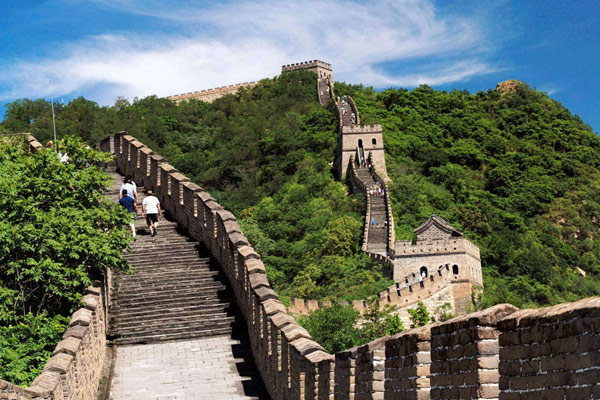
The wall at Mutianyu connects the sections at Jiankou to the east and the Baima Pass section in the west, and is just 2.5 kilometers long. The wall was constructed by the Northern Qi Emperor more than 1,400 years ago, and was strengthened and fortified by general Xu Da of the Ming Dynasty in the 14 th century. During the second year of the reign of Emperor Yongle, the Mutianyu Pass was fortified to form a triangular formation with three linked watchtowers. Constructed in 1404, these three watchtowers for a triangle and are a rare formation along the sections of the wall.
The closest section of the Great Wall to Beijing , the Juyongguan Great Wall Fort lies just 60 kilometers to the northeast of central Beijing, in the Changping District. Located in the guangou Valley, this section of the Great Wall protected the most vulnerable access to Beijing, the Chinese capital, and was built during the Ming Dynasty, under Emperor Zhu Yuanzhang in the late 14 th century.
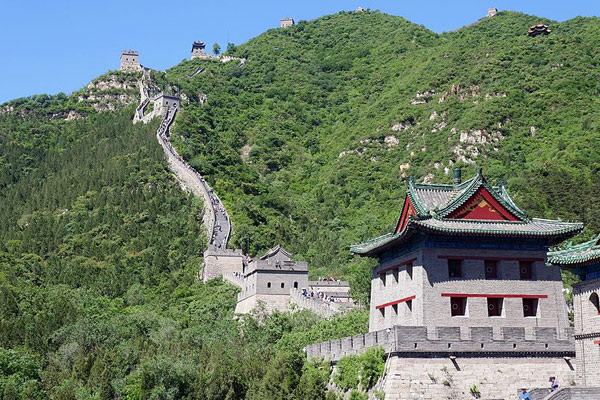
One of the greatest of the forts that defended Beijing, it was instrumental in holding back the Mongol army that was constantly trying to recapture its former territory in China. Considered to be one of the most important passes in the entire Ming Dynasty Great Wall, the fort at Juyongguan defended Beijing from attacks by the Jurchens, as well as the Mongols, and was the site of a huge battle against the Japanese in WWII. The site of the fort lies on fortifications that date back to the Yan Kingdom, which spanned the period from 770-476 BC, and the Warring States Period (476–221 BC). During the Yuan Dynasty, in the 13 th -14 th centuries, three large towers were built, which were destroyed in an earthquake in the middle 1300s.
Jinshanling
One of the most well-preserved sections of the Great Wall , Jinshanling still has many of its original features and is known in Chinese as “Gold Mountain Ridge”. Named because it was built on the ridges of the Greater and Lesser Jinshan Mountain Ranges, known as the Gold Mountains, this amazing section of the Long Wall lies around 130 kilometers to the northeast of Beijing, and is one of the most popular sections for tourists due to its unique preservation.
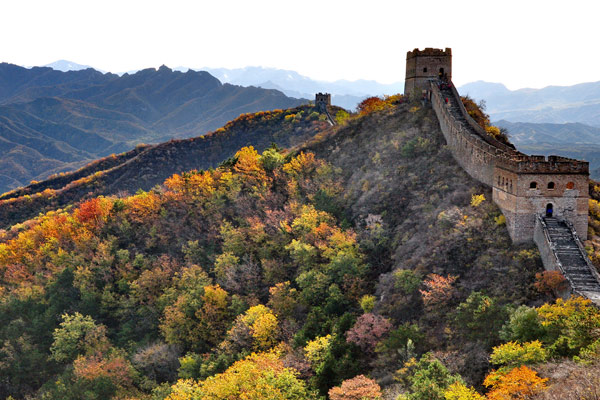
The wall at Jinshanling connects the Simatai Section in the east to the Gubeikou Section in the west and extends from Longyukou in the west to Houchuankou in the east. The original construction of the wall began in 1368, during the Ming Dynasty, and was rebuilt after damages in the mid-16 th century. The wall also contains tablets that have poems and writings etched into them, which were left at the time of the rebuilding. 31 watchtowers are spread along this 5.1-kilometer section of wall, which are built in a variety of different shapes and sizes.
Jinshanling is also the most popular section for those wishing to hike along the great Wall , and the trek along the entire section to Simatai takes around four hours. Three paths run from the entrance gate to the wall, and a cable car to a fourth path which runs for the final 200 meters to the Little Jinshan Tower.
The section of the Great Wall at Simatai lies around 120 kilometers to the northeast of Beijing, connected to the western end of the Jinshanling Great Wall. It remains one of the few sections of the entire Great Wall of China to retain most of its original appearance , and it has many varied features and characteristics that other sections do not have.
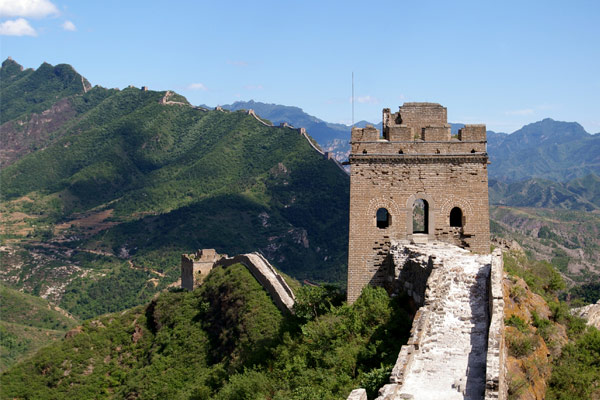
The Great Wall at Simatai is just to the north of the town of Miyun, and is close to the Great Wall of Gubeikou, which is an important and significant pass for the military in their protection of Beijing. The Simatai Section is just 5.4 kilometers long, divided by the Simatai Reservoir, with 23 towers to the west of the reservoir and 16 towers to the east. The reservoir is spanned by a chain-link bridge, although these days crossing by zip-line is more popular.
Constructed in the time of the Northern Qi Dynasty (550-577 AD), the wall was rebuilt and extended during the Hongwu period of the Ming Dynasty, and underwent repairs under the supervision of General Qi jiguang in the middle of the 16 th century.
One of the most perilous of the sections of the Great Wall, the elevation of the wall goes up by more than 600 meters in a short distance, and the narrowest part of the section is just 40 centimeters wide at the top. Known as the Sky bridge, this narrow section of the wall runs for around 100 meters up the side of the mountain, and during its construction, goats were used to ferry the bricks up to the wall.
Simatai is the only section of the wall that can be visited at night, and is lit up by lanterns along its entire length, making an amazing spectacle from afar.
Join in our classic 15-day Beijing Xian Lhasa Kathmandu tour by train to enjoy a wonderful visit to the Great Wall in Beijing.
Best Time to Visit the Great Wall in Beijing
While it may rest in northern China, the Great Wall sections at Beijing can be visited at almost any time of the year, as long as there is not too much snow in the winter. The best times to visit the Great Wall for the best views and the scenery are in the spring and autumn. In the early mornings, from the top of the Great Wall, you can see the remarkable early morning mists known as the “Cloud Sea”, that stretch out from the wall in all directions for miles.
May and June are the best times to visit the wall for the green scenery of the mountains , when the new growth of the trees and grasses has come through from the spring. Summers can be hot on the top of the Great Wall, and it is not recommended to spend too much time in the heat. Sun cream, lip balm, sunglasses and a hat are recommended if you are walking along the wall in the summer months, especially in late August.
There are times when it is NOT advisable to visit the Great Wall , mainly during the major Chinese holidays, as there are huge numbers of local tourists that clamor to get onto the wall during their short breaks. The national Day Holiday, from the first to the seventh of October is the main period to avoid, as well as the Labor Day Holiday from May 1 to 3. The Spring Festival, however, is not as popular for local visitors, as it is a time for people to come together as families, so is a great time to get onto the Great Wall, with less tourists than at other times of the year.
Travel Tips for Visiting the Great Wall in Beijing
Group tours operate from Beijing , which take you to the different sections of the Great Wall, and while they are cheaper than a private tour, many of the tours stop at the factory shops and expensive tourist-oriented restaurants. Private tours are much more flexible with where you want to go, and can be individually catered for the client. Tickets are normally arranged in advance for tours, to save you queuing and the guides are experts on the history of the Wall and where to get the best photos.
Traveling to the Great Wall is normally done as a day trip , and it is important to bring along plenty of water and snacks , especially since the majority of the restaurants close to the Wall can be expensive. Rain gear is handy to bring with you, as it can rain at any time in the areas of the Wall, and a good pair of strong shoes or hiking boots is best to wear for better traction. If you are traveling in the winter months, then you need to dress up warm, as it can get very cold on the Wall in winter. Snow can often be seen dusting the surfaces of the Wall, and the temperatures are usually around freezing, so bring warm fleece jackets to protect from the cold.
Related Readings:
How to Get from Beijing Airport to Railway Station?
How to get from Beijing Airport to Railway Station? Read this passage to find out the best way to get from Beijing Capital International Airport to differnt railway stations in Beijing, either by airport express, metro, or bus.
What are the Beijing Bullet Train Stations That Offer High Speed Trains in Beijing?
Beijing Railway Station, Beijing West Railway Station and Beijing South Railway Station are the three bullet trains in Beijing which offers bullet train or high speed train to various city across China. Follow our guidance to get details of each railway station like train schedules, as well as some tips on taking high speed train at Beijing bullet train station.
Beijing Train Guide
Here, we offer the useful information about major trains available from Beijing to other cities in China like Lhasa, Xi'an and Shanghai. And we will tell you how to get to Beijing train stations.
How to Get around Beijing during Your Beijing Tour
For travelers visiting Beijing, it might be daunting to get around at the hugely populated city. Here is some basic information about how to get around Beijing with the most popular transportation: metro, taxi, and public bus, as well as renting a bike.
How to Travel from Beijing to Lhasa on a Budget
How to travel from Beijing to Lhasa on a budget? Is traveling by train more affordable than traveling by airplane? Check the guidance to see the tips on enjoying a budget Beijing Tibet tour by diffrent methods.
When is the Best Time to Visit Beijing
Traveling to Beijing can be done at any time of the year, but there are respectively top things to do at each seson. Check this guidance to choose the best time to visit Beijing for yourself according to your own travel plans.
Ultimate Guide on Hong Kong to Beijing Train
Check the ultimate guide on teh train from Hong Kong to Beijing to experience a wondeful train journey connecting the two attractive cities.
Have a Question? Ask below or call + 86-28-81754631
Question Summary *
Please fill in your contact information, we will send you the answer by email
Country * :
SUBMIT Cancel
0 Comment ON "Ultimate Guide to Visiting the Great Wall from Beijing"
Your Full Name:
Your Email Address:
Train Route From:
Tell us more about your trip:

How to Visit the Great Wall of China from Beijing
Article by Lost Plate Food Tours
- Beijing , China
The Best Great Wall Tours
The Great Wall is a must-visit for everyone visiting China, but that doesn’t mean it’s easy to do on your own. Navigating Beijing and far-away places like the Great Wall is not simple even if you speak Chinese. Eliminate the hassle of figuring everything out by yourself – sometimes tours are the best way to see things! Trust us.
We’ve visited The Wall more times than we care to admit publicly on a website, so we’ve learned a thing or two about where to go and what to do through a combination of research, trial, and error. So we’ve worked with a local Great Wall guide to put together three itineraries that we can personally vouch for. Keeping in mind that a round-trip taxi plus ticket for one is already around 300 RMB, taking a tour is also a great deal for your wallet. We promise you’ll be in good hands, and more importantly, you don’t have to worry about researching anything else. Take a look at the options below, choose the one that fits your schedule, and know that you’re going to have the best Great Wall experience possible!
Trip 1: Mutianyu Section by Private Car
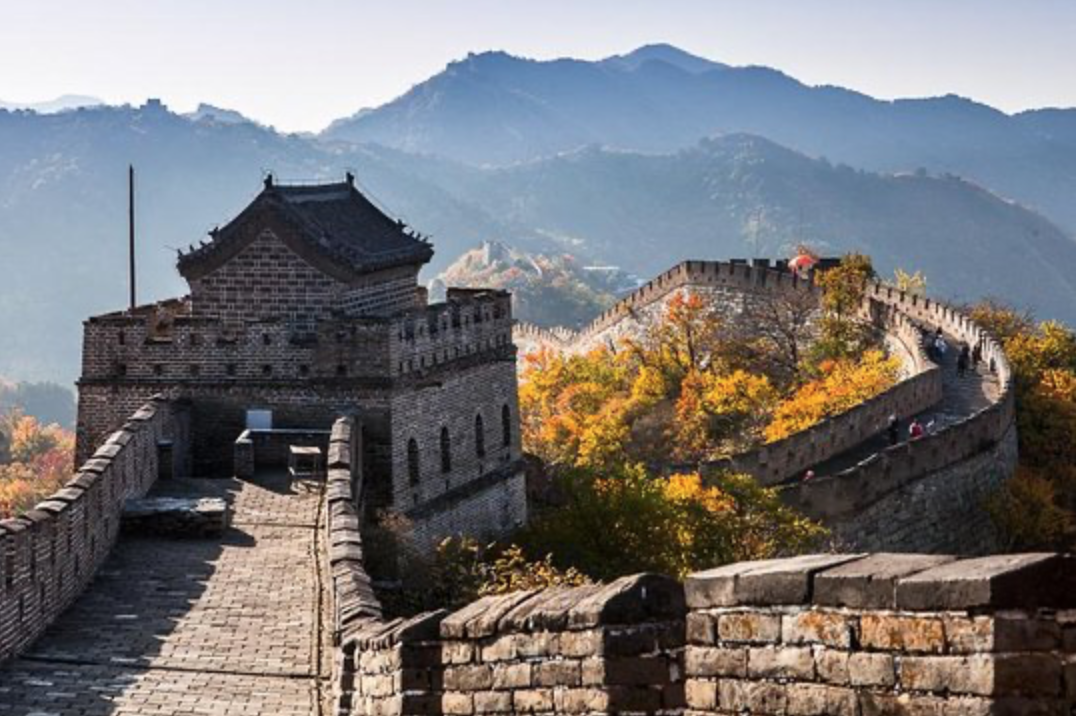
There are a lot of sections of the Great Wall to visit (it’s pretty big after all,) and Mutianyu is our favorite. It has incredible views as far as the eye can see with densely placed watchtowers along a sweeping 2.5km stretch. If you’re feeling ambitious, you can climb the 500+ steep stairs to one of the areas highest points. If you’re looking for something a bit more relaxing, take the cable car and slowly explore the watchtowers as you stroll along the wall to the toboggan slide- perfect for all ages. Multiple ways up and down from the wall make it very easy to create a loop without needing to turn around and retrace your steps to go back down, so you can maximize your time up there!
Combine all of this with a personalized experience that includes comfortable private transportation, a private English-speaking driver, and ample time to explore the wall on your own. It’s literally the perfect way to see the Great Wall, and totally customizable.
What Your Day Looks Like:
- Get picked up at your hotel or at the airport by your English-speaking driver at the time of your choice.
- Upon arrival at the Great Wall, your driver will assist you to purchase tickets and help you plan your day.
- Explore the Great Wall on your own, at your leisure.
- Get dropped off back at your hotel or the airport in your private car.
- 2 People: $92 USD per person
- 3 People: $73 USD per person
- 4 People: $68 USD per person
Price Includes: Hotel pick-up & drop-off, private car with English-speaking driver, admission tickets to the Great Wall (optional Cable Car and Toboggan tickets are not included), bottled water. Airport pick-up/drop-off have an additional surcharge due to the further distance.
Inquire Now!
Enter your details below to start your reservation. We’ll follow up with you right away to answer any questions you have and confirm your trip!
Trip 2: Great Wall Hiking From Jiankou to Mutianyu Sections

If you’re looking for the ultimate Great Wall experience, this can’t be beat. This route is almost impossible to access unless you speak Chinese, and the hike is considered the most precipitous and beautiful stretch in the entire region. The hike begins in an un-restored, less visited area that offers ancient ruins, soaring views and photos that you can’t get anywhere else. During the hike, your private guide provides stories about the wall’s history and construction. This one is a bit more adventurous, if you’re into hiking this is probably the one for you!
- Get picked up at your hotel in Central Beijing in your private car.
- Upon arrival at the Great Wall, your private guide will lead you through the forest, up to the un-restored section of the Great Wall. You’ll finish the rest of the way on your own- just follow the wall!
- Explore the Great Wall with your private guide during your hike. Hiking experience is recommended.
- Enjoy a post-hike lunch at a local restaurant.
- Get dropped off at your hotel.
- 2 People: $218 USD per person
- 3 People: $158 USD per person
- 4 People: $138 USD per person
Price Includes: Hotel pick-up & drop-off, private car, professional English-speaking guide, post-hike lunch, Great Wall admission tickets (optional Toboggan tickets are not included), bottled water.
Trip 3: Mutianyu Section + Summer Palace Day Trip
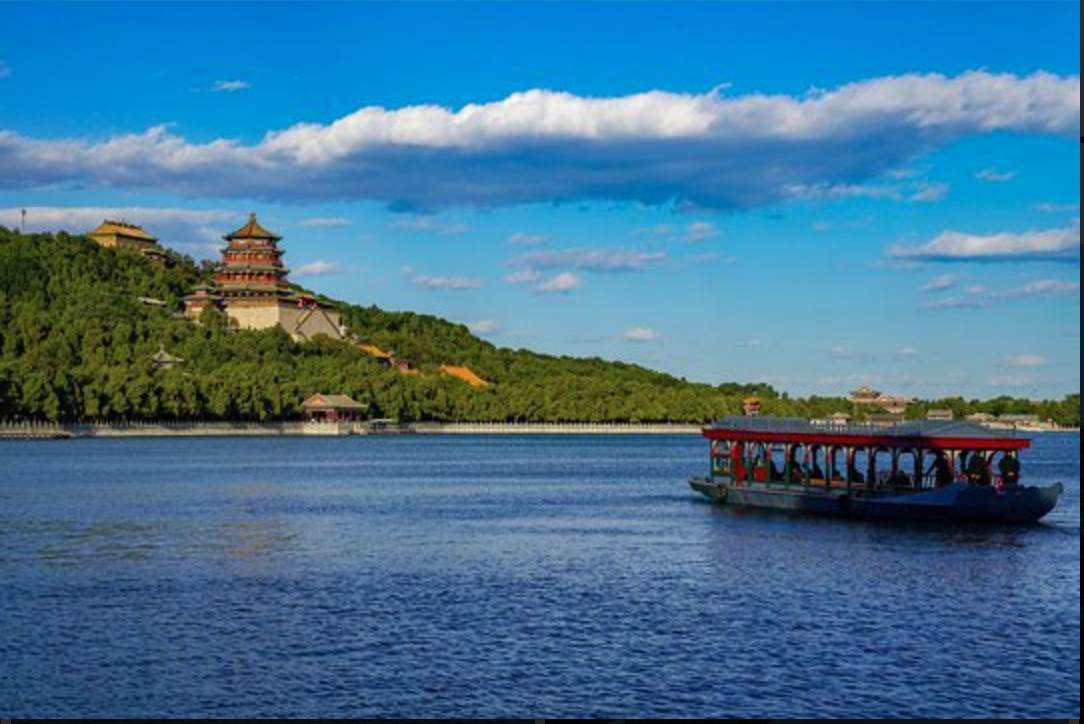
Short on time and want to combine the best sites outside of Beijing all in one day? This is the answer! We’ve combined a trip to the Mutianyu section of the great wall (the first itinerary on this list) with a visit to Beijing’s famous Summer Palace. Combine this with your own private guide, and you’ll get insider knowledge on the best places to beat the crowds, the best photo ops, and fascinating historical and cultural insights. After a couple of hours exploring the great wall, you’ll stop for lunch and then head to the Summer Palace with an immaculately preserved royal gardens which have a lake, bridges, temples, and historic pavilions.
- Explore the Great Wall at your leisure for a couple of hours.
- Visit Beijing’s Royal Summer Palace with your private guide and stroll through its grounds.
- 2 People: $188 USD per person
- 3 People: $148 USD per person
- 4 People: $128 USD per person
Price Includes: Hotel pick-up & drop-off, private car, professional English-speaking guide, post-hike lunch, Great Wall admission tickets (optional Toboggan tickets are not included), Summer Palace admission tickets (optional dragon boat tickets are not included), bottled water.
Related Posts:
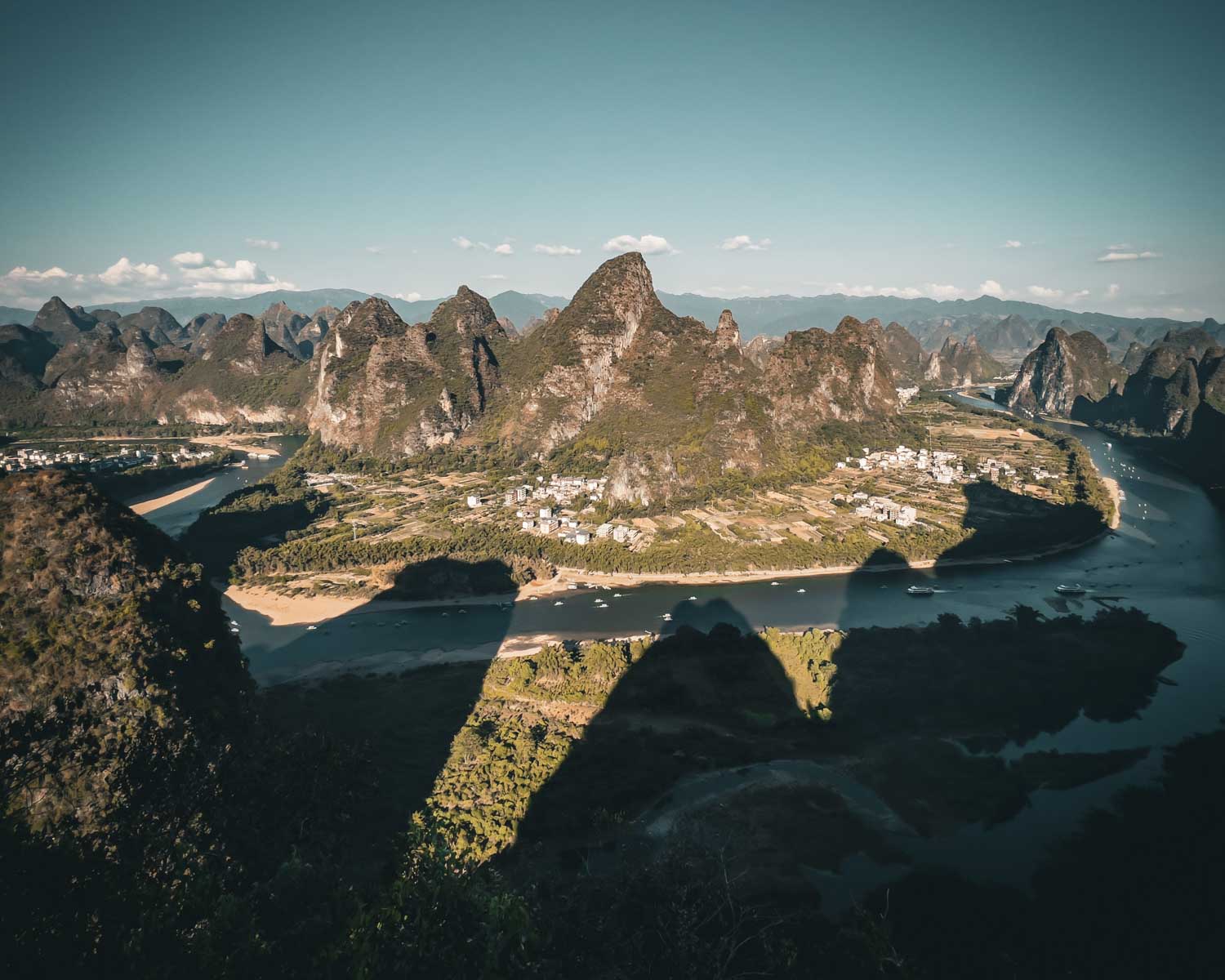
China Reopens to Tourists in 2023!
After three years, China is reopening its border to tourists, effective immediately! Based on what we’ve seen in other parts of the world post-pandemic, the best time to visit a reopened country is early – before all of the crowds return. We’ve got all the details you need to start planning your next trip to China…

What You Need To Know About Ningxia, China’s Answer to Bordeaux
Did you know that the East Foothills of Helan Mountain in Ningxia is China’s first officially recognized wine appellation and is now home to some of the best wineries in all of China? Here are five interesting facts about China’s answer to Bordeaux…
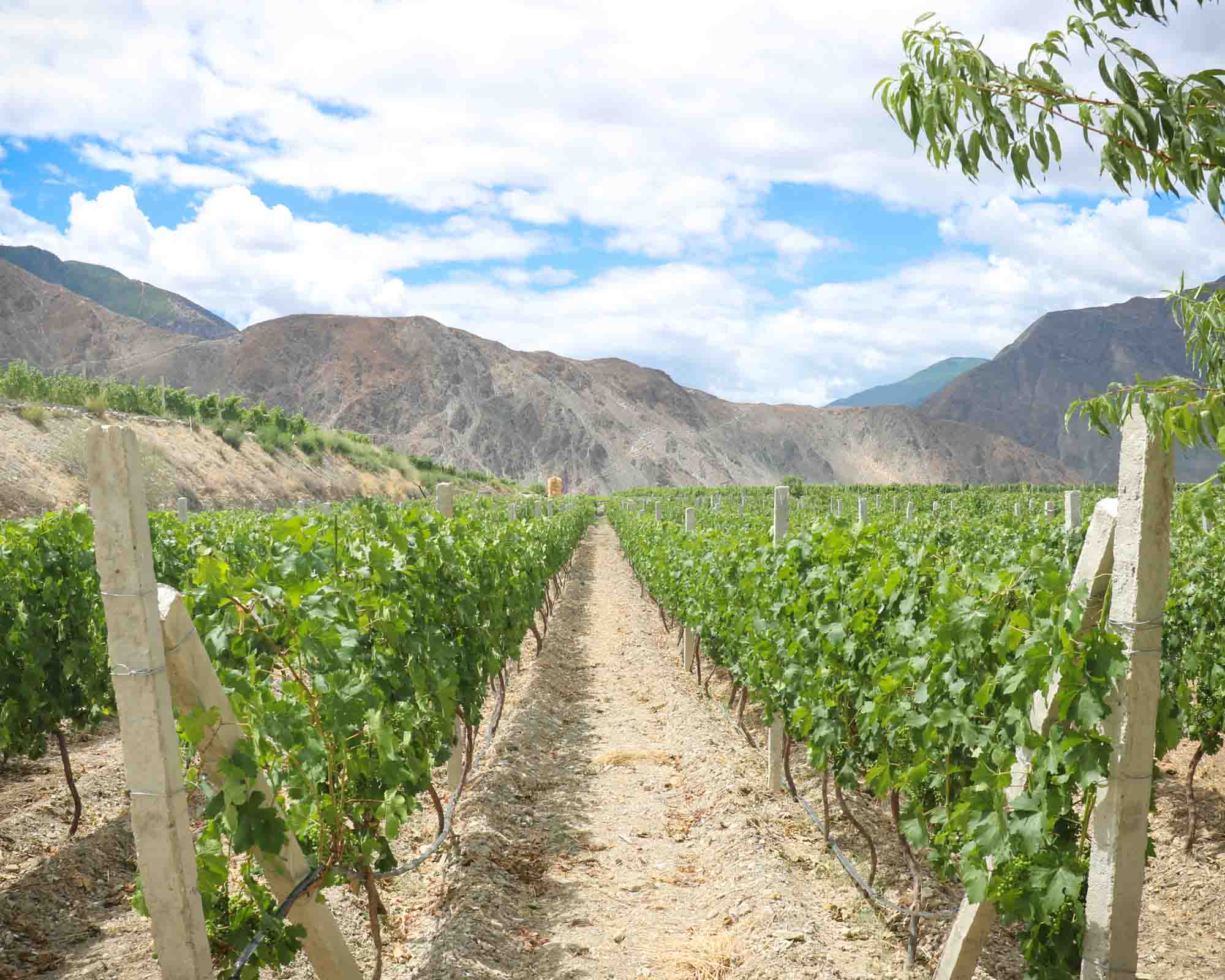
Zaxee Winery: Our Favorite Shangrila Winery in Yunnan, China
Xizhou is the name of a village just outside Dali’s old town in China’s Yunnan province. Baba is local slang for bread. Xizhou Baba is the greatest thing since sliced bread – literally! As you walk along the cobble stone streets of Xizhou, it won’t take you long to recognize old charcoal ovens that bake this famous local street food. Peek inside a Baba shop, and you’ll see fresh dough being kneaded and prepared by hand. You’ve got to try this addictive snack yourself!
Sign up for our newsletter!
Food Tour Locations
Beijing, China
Chengdu, China
Guangzhou, China
Lijiang, China
Shanghai, China
Suzhou, China
Xian, China
Phnom Penh, Cambodia
Siem Reap, Cambodia
Bangkok, Thailand
Portland, OR USA
Terms & Conditions
Health & safety, multi-day trips.
View Upcoming Trip Schedule
Chengdu 4-day Trip
Guilin/Yangshuo 4-day Trip
Ningxia Wine Tasting 4-day Trip
Xian 3-day Trip
Dali/Lijiang 8-day Trip
Shangrila 8-day Trip
Cambodia 7-day Trip
Email: [email protected]
China & Cambodia: +86 156 9210 9030
USA: +1 503 409 5593
WeChat: lostplate

Our Recipes
Partner With Us
Become An Affiliate
Free Tasty Travel Tips!
Join our newsletter and we’ll send you our FREE city guides to make your trip delicious!
We’ll get back to you in less than 24 hours, 7 days a week.
Phone / SMS / WHATSAPP:


- [email protected]
- 86-773-286-5632 (Intl rates apply)
The Best Way to Get to the Great Wall from Beijing
The Great Wall of China is about 2 hours drive from Beijing, nestled in the mountains. You have several options to get there, including tourist buses, taxis, and public buses. For the Mutianyu section of the Great Wall, it's often best to take a taxi. For the Badaling section, a tourist bus is usually the most convenient.
There are many Great Wall sections you can visit. However, the only two sections which you may visit on your own are Badaling and Mutianyu. We don’t recommend you visit the other sections on your own as they are either far away from Beijing or wild walls which are hard to reach.
The Best Way to Get to Mutianyu Great Wall
The Mutianyu Great Wall is about 2 hours drive from Beijing. The best way to get to the Mutianyu Great Wall is to take a taxi. In addition, you can also take a public bus and or tourist bus.
Best Option on your own: Take a Taxi
Travelling by taxi in Beijing is comfortable and most drivers are friendly. It's important to note, however, that many of them may not speak English.
It costs about 250 yuan for the ride to the Mutianyu Great Wall. It is about a 2-hour drive if there are no traffic jams on the way. Traffic to the Great Wall is also busy, so we recommend you depart early in the morning. Ideally, start your journey at 5:30 a.m. to avoid the Beijing rush hour which typically begins at 7 a.m.
The taxi will take you to the tourist center of the Mutianyu Great Wall. From there, you can hop on a shuttle bus to reach the Wall.
You might want to discuss with the taxi driver about waiting for your return trip. Otherwise, it could be challenging to find a taxi back to Beijing in the afternoon since the Mutianyu Great Wall is situated in the suburbs and taxis to Beijing are not always available. If necessary, consider alternatives like a tourist or public bus for your return journey.
Most Recommended: Take a Private Transfer
The best way and the most hassle-free way to travel to the Great Wall is to take a private transfer which is included in a tour. This way, you will pick you up at your hotel lobby, airport, and train station according to your schedule. It will save you a lot of time and hassle. All you need to do is sit back, relax, and prepare to be awestruck by the grandeur of the Great Wall.
To arrange a private transfer to the Mutianyu Great Wall, don't hesitate to contact us.
Take a Tourist Bus- Not Recommended
We don’t recommend you take a tourist bus as it is really hard to locate the bus station. Currently, there's only one tourist bus that goes to the Mutianyu Great Wall. However, we don’t recommend you take this tourist bus as it is really hard to locate the bus station.
Here's important information about the bus:
- Departure: Approximately 8:30 am each morning from Dongzhimen Wai Bus Station(东直门外场车站)
- Return: 4: 00 p.m. from the P1 Park lot from Mutianyu each day in the afternoon
- Ticket Price: 60 yuan per person for a roundtrip
- How to buy the ticket: You can buy the ticket on board.
How to get to the Dongzhimen Wai Bus Station
The Dongzhimen Wai Bus Station, an outside station, can be a bit hectic to navigate. Here's a guide on how to get there:
- Take the Line 2 subway and alight at Dongzhimen Station. Exit from gate E and walk straight along Dongzhimen Ave
- Exit from gate E and walk straight along Dongzhimen Ave
- Turn left and continue along Dongzhimen Outer Street.
The walk is approximately 10 minutes. However, the station can be hard to locate even for locals, let alone foreign travelers. As such, we don't generally recommend this tourist bus due to the potential difficulties in finding the station.
If you're keen on using the bus service, we suggest getting to the bus station around 30 minutes in advance to secure a seat, especially during peak travel times when demand is high.
Take a Public Bus - the Most Difficult Way
Bus number 916 goes to the Great Wall. However, you need to transfer buses to reach the final destination. Taking this public bus route to the Great Wall can be a bit of an adventure.
Start by taking bus number 916 at the Dongzhimen Traffic Hub (东直门交通枢纽大楼内) and get off at North Street (Bei Da Jie, 北大街) in Huairou. From there, take bus H23 on the opposite side to reach the Great Wall. Remember to be prepared for potential difficulties during the journey.
Best Way to Get to Badaling Great Wall
Located around 73 km from Beijing, the Badaling Great Wall is a roughly 1.5-hour drive away. The best way to travel from Beijing to the Badaling Great Wall is by bullet train.
Take a Bullet Train to Badaling Great Wall
It is the fastest way to get to the Badaling Great Wall. You can take the bullet train at Beijing North Station and get off at Badaling Great Wall Station. The journey takes about only about 20 minutes.
Upon arrival, expect a 20-minute walk to reach the Badaling Great Wall entrance from the train station. English road signs are available all along, ensuring you won't lose your way. If you prefer not to walk, there are free shuttle buses available from the railway station to the cable car station at the Badaling section. Please note you may have to queue to board these buses.
You can book the train tickets at China Travel. Remember to book the roundtrip tickets. The ticket price for a second class is about 30 yuan, the first class is about 40 yuan.
Take the S2 Scenic Train
Taking the S2 scenic train is absolutely the ideal way to reach the Badaling Great Wall from Beijing. The 'S2' refers to a series of trains (S202, S203, S204, S205), which link Beijing with its suburban areas.
Notably, these trains have larger windows, enabling travelers to take in breathtaking views along the journey. In spring, witness splendid cherry blossoms surrounding the Badaling Mountains; in autumn, be enchanted by fiery red foliage.
Here is a guide on how to board the train:
- First take either the Line 8 or Line 13 subway to Huoying Station, exit from Gate G4 (霍营站)
- Then, proceed to Huangtudian Station (黄土店站) to catch the S2 train
- Get off at Badaling Great Wall Station
The journey to the Great Wall takes around 50 minutes to 1.1 hours.
How to book the tickets
Unfortunately, S2 train tickets can't be booked online, and there's no fixed timetable as the departure schedule frequently varies. During the peak season, the S2 train runs to Badaling from 6:20 am to 10:30 pm, while off-peak hours shift from 7:20 am to 9:20 pm.
Tickets are only available for purchase directly from the station. You can use a Beijing Bus Card or buy direct tickets. There's no specific seating arrangement; it operates like a subway with no reserved seats.
Due to high demand, especially during holidays such as the Spring Festival, Tomb Sweeping Festival, and weekends, aim to arrive at least 2 hours in advance to purchase tickets. The train only accommodates 40 seats, so tickets tend to sell out swiftly. Some travelers may find tickets unavailable for the day.
Take a Tourist Bus to the Badaling Great Wall
There's a tourist bus service operating from the center of Beijing to the Badaling Great Wall.
Here are the details:
- Departure time : Service starts from 6:30 a.m. until 11 a.m. every day. Buses depart when full
- Departure location : The Qianmen Tourist Dispatch Center (北京旅游集散中心), near Tiananmen Square
- Drop-off location : The front gate of the Badaling Great Wall (close to the wall entrance)
- Travel time : Approximately 1.5 hours.
- Ticket price : The fare is 40 yuan (around $6) each way
- Return time : The last bus back to the city departs at 3:30 pm
Why a Tourist Bus might not be your Best Option
Similar to the reasons why we don't highly recommend the tourist bus to the Mutianyu Great Wall, getting to the dispatch centers can be confusing, and language barriers may pose issues.
Take a Public Bus to the Badaling Great Wall
There's only one bus leading to the Badaling Great Wall: Bus No. 877. It departs from Deshengmen Station (德胜门) and the last stop is at the Badaling Great Wall.
The bus to Badaling departs every 30 minutes until 12 am, and the return buses to downtown Beijing start leaving from the Badaling Front Mount Parking Lot from 12 am onwards. If there's no traffic, the whole journey should take about 2.5 hours.
Explore the Great Wall of China with China Travel
Taking a private transfer to explore the Great Wall is undoubtedly the best choice. It spares you much hassle. We'll pick you up from your hotel, the airport, the railway station, or any other location. Our travel advisors and guides make every effort to optimize your travel time and ensure you spend the maximum time exploring the Great Wall. Contact us now!
Request a custom itinerary today and get one step closer to your personalized trip
Create Your Trip

The Ultimate Great Wall Travel Guide + The Best Sections To Visit
The Great Wall of China is one of the world’s most iconic landmarks and a must-visit destination for any traveler. With its rich history, breathtaking views, and cultural significance, the Great Wall offers an unforgettable experience for visitors from all over the world.
In this travel guide, I cover everything from the best sections to explore, the best times to visit, and a complete tour of the hiking route. Whether you’re planning your first visit or looking for insider tips for your next trip, my guide has everything you need to know to make the most of your Great Wall adventure.
Table of Contents
🌟the great wall of china | history, length, & significance, jinshanling great wall — the great wall section for photography, simatai great wall — the most precipitous great wall section, gubeikou great wall — a great wall section with rich culture, mutianyu great wall —the longest and best fully-restored great wall section, jiankou great wall — the most dangerous and challenging great wall section, huanghuacheng great wall – the only lakeside great wall, juyong pass great wall — one of the greatest mountain passes of the great wall, badaling great wall — most visited section of the great wall.
- 🗺️Map of the Great Wall
Jinshanling Great Wall
Mutianyu great wall, badaling great wall, 🎒what to pack for great wall trip.
- 🎉Tips for Exploring the Great Wall
China Travel Planning Guide&FAQ

China boasts numerous world-renowned attractions, among which is the Great Wall – an awe-inspiring sight that draws in tourists from both domestic and international locations throughout the year. A popular Chinese proverb states that a person who has not visited the Great Wall cannot be considered a true hero as they have not faced and conquered a significant challenge.
This grand ancient defense system spans over a vast area of northern China, covering 15 provinces, and passing through 404 counties. Known as Wan-Li Changcheng, its total length is 21,196.18 km (13,170.7 mi) and is divided into several noteworthy scenic spots, stretching from Shanhaiguan in the east to Jiayuguan in the west.
With a history of over 2,300 years , the Great Wall of China can be traced back to the Spring and Autumn Period (770-476 BC) and underwent its latest reconstruction during the Ming Dynasty (1368–1644). Throughout Chinese history, it went by various names such as “frontiers” (塞, Sài), “ramparts” (垣, Yuán), and “the Purple Frontier” (紫塞, Zǐsài), instead of the commonly known name “the Great Wall”.
Beyond being a mere wall, the Great Wall was a comprehensive and secure defensive system comprising an array of fortifications such as passes, watchtowers, fortresses, and blockhouses. Its strategic positioning in close proximity to cliffs enabled it to leverage the rugged landscape as a natural blockade against potential invaders.
It may be difficult to fathom, but during the era when it was constructed purely through manual labor, the Great Wall represented an astounding feat of engineering that required workers to contribute their intellectual acuity, physical exertion, and even their lives over several years to build. It is due to this immense effort that the Great Wall has become an iconic global attraction, acknowledged as “ one of the Seven Wonders of the World “, and a representation of China’s rich heritage and cultural identity.
Disclosure: This article contains affiliate links. If you make a purchase after clicking one of these links, I earn a small commission at no extra cost to you. You can learn more about this in my disclosure policy.
🌿 The 8 Sections of the Great Wall You Must Know
In terms of visiting the Great Wall from east to west, the top 8 recommended sections are Simatai, Jinshanling, Gubeikou, Mutianyu, Jiankou, Huanghuacheng, Juyongguan, and Badaling . These fortified walls serve as a stronghold in protecting the capital of China, Beijing. Each section of the Great Wall possesses distinct and unique features.

Jinshanling Great Wall is one of the most impressive and well-preserved sections of the Great Wall of China. The section spans approximately 10.5 kilometers, and more than 40 watchtowers are opened along this section, evenly distributed along the wall. The wall is built on steep mountain ridges and has a unique and beautiful appearance. It is known for its beautiful and picturesque scenery, and it has been called “the most beautiful section of the Great Wall,” so it is praised by many photography enthusiasts and known as the “ paradise of photographers “.
The transportation to Jinshanling Great Wall seems inconvenient, with a round-trip drive of more than 300 kilometers and a one-way trip of 3 hours. It takes 4-5 hours to get there in traffic jams during holidays.

The Simatai Great Wall is a stunning section of the Great Wall located 120 km northeast of Beijing. It stretches for 5.4 km and boasts 35 watchtowers along the way. What sets it apart is the Wangjinglou, the highest tower in Beijing, situated atop a steep mountain. Visitors can take in breathtaking views of the surrounding mountains and valleys.
However, it’s important to note that only a few watchtowers are currently open for visitors. If you take the cable car up the wall, you can only visit 3 or 4 watchtowers, making for a relatively short trip of less than an hour.

The Gubeikou Great Wall, which spans over 20 kilometers and includes 143 watchtowers, is a well-known tourist and hiking destination that connects with the Jinshanling Great Wall and Simatai Great Wall. There were over 130 battles took place here in ancient times. The Wall is divided into two steep and rugged sections, Panlong Mountain Great Wall and Wohu Great Wall, making it a challenging climb. The most remarkable aspect of the Gubeikou Great Wall is Gubeikou Town , which boasts a rich cultural heritage with historical landmarks such as ancient temples, pagodas, and traditional courtyard homes that have remained intact to this day.

The Mutianyu Great Wall is a segment of the Great Wall of China situated in the Huairou District, located about 70 kilometers to the northeast of Beijing. This section of the Great Wall is one of the most well-preserved parts and is quite popular among foreign visitors . With public transportation available, it is easy to reach downtown Beijing. Unlike other segments of the Great Wall, Mutianyu has not undergone a complete restoration, providing visitors with a more authentic experience of what the wall would have been like in ancient times. It spans 2.5 kilometers and boasts 22 watchtowers that functioned as lookout posts and signal stations in times gone by.
In recent years, there has been a rise in the number of domestic tourists visiting this wall which was once highly favored by foreigners. Heavy passenger traffic and large crowds are common during the holidays and summer vacation. It is advisable to depart early or visit in the afternoon to avoid crowds.

The Jiankou Great Wall section is situated in the northern part of Huairou District and is approximately 70 km from Beijing. Admission to this section is free of cost. It is known as the most dangerous and wild segment of the Great Wall, being unrestored. The southern part of this section consists of steep ridges and cliffs, and some parts of the wall have collapsed. Though favored by adventurous hikers, Jiankou Great Wall is not officially open to the public and may be dangerous for novice climbers. Tourists are suggested to be cautious and wear appropriate safety gear while approaching this part of the Great Wall. This segment of the wall is also a popular spot for photography and is one of the most frequently photographed sections of the Great Wall in recent years.

The Huanghuacheng Great Wall boasts stunning lakes, mountains, and cultural landscape, and can be easily accessed by private car from Beijing in just around 1.5 hours. It is the most popular section among the locals and a perfect choice for families with kids . What sets it apart from other Great Wall sections is that visitors can hike along the wall and enjoy breathtaking panoramic views of the surrounding countryside, which include the reservoir and the distant mountains. Additionally, the reservoir offers boat rides that provide a different perspective of the Great Wall and its surroundings. It is only suitable for visiting from April to October .

Juyong Pass is a significant fort on the Great Wall, situated in the Changping District of Beijing. It is the closest section of the Great Wall to Beijing and spans more than 20 kilometers. The region surrounding the pass is adorned with stunning natural beauty.
Although Juyong Pass has undergone restoration to its former grandeur, it has also been subject to commercialization, which may detract from the experience for those looking for a more authentic sense of the history of the Great Wall. Vendors and souvenir shops can be seen lining the main pathways. This commercialization may be viewed by some visitors as taking away from the true cultural significance of the site.

Badaling Great Wall was the first part of the Great Wall to officially open to tourists. The section stretches an approximate length of 3.7 kilometers and has a total of 43 watchtowers built along its length. It is one of the most well-preserved and most visited sections of the Great Wall, offering stunning views of the lush mountains and reflecting the Wall’s magnificence and glory. It is easily accessible through public transportation.
Except for the cold winter months, the Badaling Great Wall is a highly popular tourist destination, attracting a large influx of visitors, especially during holidays. With such large crowds come long queues, and the sheer volume of people can detract from the otherwise enjoyable experience of hiking the Great Wall. Additionally, the wall’s commercialization has resulted in the loss of much of its unique beauty, as many parts of the wall have been repaired.
🗺️ Map of the Great Wall
Below is a map that showcases the eight sections of the Great Wall discussed in this guide.
🌟 Recommended Sections of the Great Wall to Visit
I have previously visited Badaling, Mutianyu, Jinshanling, Huanghuacheng, and Juyong Pass. Out of these, my personal preference lies with Badaling, Mutianyu, and Jinshanling . These three sections offer a longer routing length with numerous scenic spots. This allows travelers to immerse themselves fully in their journey. Additionally, these sections have excellent protection measures in place and offer a wealth of amenities and services to visitors.
🚗 How to Get to Jinshanling Great Wall from Downtown Beijing
- By Bus : From mid-March to mid-November, a direct tourist bus departs from Dongzhimen Wai Bus Station in Beijing at 7:40 am. This bus is scheduled to return passengers from Jinshanling, leaving at 16:00 pm. The round-trip ticket price is approximately 120 RMB.
- Private/Group Tour : Another option is to book a private tour or a group tour from downtown Beijing, which includes transportation and a guide. For a first-time climber of the Great Wall, it’s recommended to have a guide. The guide can provide insight into the Great Wall’s history and culture and offer plenty of tips on where to eat, drink, stay, and travel in Beijing with great enthusiasm.
🎫Admission ticket: Apr to Oct: CNY 65 | Nov to Mar: CN Y55 🎫Cable Car Ticket: CNY 40 for a single trip, CNY 60 for a round trip (optional) 📍Starting location: The Front Gate 📍Reach location: Small Jinshan Tower
☀️ Best Time to Visit Jinshanlin Great Wall
The best time to visit Jinshanling Great Wall is in the spring ( April to May ) or autumn ( September to November ) when the weather is mild and the scenery is at its most beautiful. During these months, the temperatures are comfortable, and there is less rainfall, making it easier to hike the Great Wall without being too hot or too cold. You should avoid visiting Jinshanling Great Wall during the peak tourist season, which is in the summer months (June to August) and during national holidays.
🚶🏻♂️ Jinshanling Great Wall Hiking Route
When visiting the Jinshanling Great Wall, tourists can take either the eastern or western route. However, the eastern route is more popular among tourists as it offers a more magnificent view than the western route. Additionally, there are several hiking routes to choose from in the eastern area. For those with good energy, it is recommended to take the more challenging 7km route , which includes passing through Zhuanduokou Pass, General Tower, Shalingkou Pass, Small Jinshan Tower, Big Jinshan Towers, Houchuankou Pass, Eastern Five-window Tower, and finally East Gate, which can be completed in about 4 hours.
I commenced my hike from the Zhuanduokou Pass , a two-story brick and wood structure with a wooden staircase connecting the floors. After walking for some time, we arrived at Shalingkou Pass , one of the first four passes built on the Jinshanling Great Wall. The architectural design includes doors both inside and outside. These doors correspond to each other and are of the same size, serving as the only entrance to the pass. Heigu Tower is a brick arch structure, consisting of two floors, with three wood and brick rooms on the second floor. Upon descending from Heigu Tower and proceeding east, one comes across Open Tower No.1 and Open Tower No.2. After surmounting a steep barrier wall, I arrived at the Small Jinshan Tower . It is a two-story brick arch structure connected by stone stairs, providing hikers with a breathtaking view of the sunrise, sunset, and sea of clouds in Jinshan, making it an ideal spot for photography. The Big Jinshan Tower is similar in construction to the Small Jinshan Tower, located side by side. These towers are the most exquisite and complete enemy towers on the Jinshanling Great Wall.

Continuing on, I passed through an unrestored wall and a barrier wall and arrived at Houchuankou, one of the four earliest-built passes and the most important choke point of the Jinshanling Great Wall. Upon ascending a steep slope, I arrived at the Flower Tower, a brick arch structure with various Chinese auspicious patterns like flowers and beasts carved on the door and windows. Unfortunately, it had fallen into disrepair and only remnants are left. At the Flower Tower, I could see the Eastern Five-window Tower in the distance, which is the highest tower on the Jinshanling Great Wall at an elevation of 618 meters. It’s a perfect spot to take panoramic photos of the Jinshanling Great Wall and fall colors.
Next, I reached the Kylin Tower , Jinshan No.2 Tower, which is not particularly eye-catching in appearance but is one of the best towers on the Great Wall of China. It’s unique in that there is a carved Qilin shadow wall on the southern side of its roof and a unique Kylin Screen Wall positioned on its peak. The Kylin Screen Wall is made from 15 square bricks that come together to form a 3D image of a running Kylin surrounded by auspicious clouds, with its mouth slightly open and tongue sticking out and its tail raised high, giving it a lifelike appearance. But I could not get to see the Kylin Screen Wall because there are no stone stairs leading up to the top of the tower.
Finally, I walked down the Kylin Tower and ascend to the Bricks with Characters , a 520-meter-long wall with thousands of bricks with characters. As the sun began to set, I started walking back down the wall towards the Eastern Five-window Tower before exiting through the east gate, marking the end of my visit to the Jinshanling Great Wall.
🥘 What to Eat in Jinshanlin Great Wall
In the scenic area, there are numerous local specialties and farm foods that are both excellent and affordable. These farm foods are created using original ecological native vegetables, and the dishes primarily consist of pollution-free vegetables, fungi, bamboo shoots, and other green foods that you should give a try.
🏡 Where to Stay in Jinshanlin Great Wall
Jinshanling Great Wall Hotel is located at the entrance of the Jinshanling Great Wall and offers 200 comfortable rooms with modern amenities having elegant, modern decor that is inspired by the mountains and classical culture. The hotel’s Chinese courtyard is one of my favorite parts, and that night out with my friends was a blast. The breakfast buffet and authentic home-cooked northern farm dishes are served at the hotel’s second-floor restaurant.
Changhai Farmhouse is located at the foot of the Jinshanling Great Wall, only 50 meters away from the ticket entrance of the scenic spot, this hidden gem is surrounded by verdant mountain forests with refreshing air. The rooms are spick-and-span, each decked out with amenities including air conditioning, TV, WIFI, and 24-hour hot water supply. Plus, enjoy mouth-watering meals made from locally sourced ingredients like free-range eggs, fresh green seasonal vegetables, and farm-featured grilled whole sheep!
It’s important to note that the accommodations near Jinshanling Great Wall are relatively basic compared to other areas in China. However, they offer an of staying in a rural area and being close to the Great Wall.
🚗 How to Get to Mutianyu Great Wall from Downtown Beijing
- By Bus: You can take Bus 916 Express from Dongzhimen Bus Station to Huairou North Street, and then transfer to Bus H23 to Mutianyu Roundabout. The entire journey takes about 2-2.5 hours, depending on traffic. The cost is around CNY 20-30.
- By Tourist Bus Line Dongzhimen: Take the bus from Dongzhimen Wai Bus Station and alight at the Parking Lot P1 of Mutianyu to reach your destination. The bus runs from 8:30 am, and the travel time for a single journey is approximately 1.5 to 2 hours. The cost is around CNY 30.
- By Tour Bus: Many tour companies offer organized tours to Mutianyu, including transportation and a guide. I strongly suggest considering Mubus Tour , a renowned tour organization in Beijing that has gained the trust of both locals and foreign visitors. Opting for such a tour is also convenient if you prefer not to navigate public transportation independently.
🔥Tips: I don’t recommend taking a taxi because the price from downtown Beijing to the Great Wall is very expensive, ranging from CNY 200 to CNY 600. And the return trip is inconvenient because you may have to take an irregular car back downtown.
🎫Round-trip ferry ticket: CNY 15 🎫Admission ticket: CNY 40 🎫Cable Car Ticket: CNY100 for a single trip, CNY 140 for a round trip (optional) 📍Starting location: North Entrance 📍Reach location: Mutianyu Great Wall Watchtower No.14 🎫Toboggan Ride Ticket: CNY100 for a single trip, CNY 140 for a round trip(optional) 📍Starting location: South Entrance 📍Reach location: Mutianyu Great Wall Watchtower No.6
🔥Tips: Upon reaching the Mutianyu Great Wall location, visitors will need to board a ferry bus that travels up and down the wall. These buses depart every five minutes. To gain entry into the scenic area, tourists must first buy a ferry ticket and then queue up to board the bus. After getting off the ferry bus, the tourists can walk to the north ticket gate.
🔥Take note: The cable car is designed with a full enclosure and high safety features. Opting for a cable car ride can offer an enhanced view of the Mutianyu Great Wall from a higher altitude, providing a clear view of the entire wall. The majority of tourists favor taking the cable car option.
🔥Take note: The toboggan is constructed against the Wall and provides an excellent opportunity for taking in the breathtaking scenery. While thrilling, it should be noted that the toboggan is open and thus there is a moderate risk when maneuvering it up and down. As such, it may not be appropriate for elderly individuals or children.
☀️ Best Time to Visit the Mutianyu Great Wall
- Nov.1 – Nov.30 : Late autumn presents the finest opportunity to explore the Mutianyu Great Wall as you can witness the gorgeous autumn foliage in full swing with a splendid array of fiery reds and vibrant oranges covering the mountain ranges with a soothing temperature and fewer visitors to contend with.
- Sep.1 – Oct.30 : The scorching summer has come to an end, and Beijing is showing off its picturesque beauty. The lush greenery can be spotted all around the scenic areas. As it’s the start of the season, the number of tourists is still quite low.
- April.1 – May.31 : The area’s scenery is abundant with lush and verdant foliage, emitting an air of vitality. With the start of the spring outing season, tourism typically surges, leading to some waiting times on weekends; however, queues are typically short. It is recommended to plan the visit during the week and avoid weekends.
🚶🏻♂️ Mutianyu Great Wall Hiking Tour
The recommended route for visiting the Great Wall at Mutianyu is the western route, which provides several essential features for tourists. Specifically, the western section of the wall concentrates on most of the stunning scenery in the Mutianyu region and has an elevation difference greater than 600 meters. Furthermore, the western route concludes at “Hero Slope”(好汉坡), which is the highest point of Mutianyu and gives visitors a must-see view.
There are two options for hiking the western route of the Mutianyu Great Wall. The first option is to start at the entrance and hike to Watchtower No.20. However, this route is quite challenging and takes at least three to four hours to complete. You’ll need to hike 600 steps just to reach Watchtower No.6. This option is not recommended if you’re not up for a strenuous hike.
I highly suggest the second option , as it has worked for me in the past. You could ride the cable car to Watchtower No.14 and continue your journey on foot from there. This would offer you an opportunity to relish the picturesque sight at your own pace, without exerting too much effort. From Watchtower No.14, simply head towards the west, in the direction of Watchtower No.23. This stretch of the wall presents mesmerizing views that should not be missed.

I first took the cable car to Watchtower No.14 entrance and then made my way up to the Mutianyu Great Wall viewing platform. I also noticed a special area where tourists are allowed to leave their graffiti scrawls. Moving to the west toward Watchtower No.15, I encountered a gently sloping area surrounded by striking scenery. From Watchtower No.16 to No.18, the section remains relatively easy, providing a comfortable journey. However, the hike from Watchtower No.19 to No.20 was the most challenging part of the journey, with an increasingly steep slope and hundreds of steps to climb.
When climbing to the peak of Watchtower No.20 , which is the highest point of the Mutianyu Section, I was treated to breathtaking views of the Jiankou section. Here have the option to turn back or continue exploring. Although most tourists opt to backtrack from this point, there is still plenty to explore beyond the Wall.
I chose to continue, walk through Watchtower No.20 and enter the unrestored ancient Great Wall. It’s a challenging hike, but worth it for the incredible views. It took about 15 minutes to reach Watchtower No.21, which was still a difficult section due to the steep slope.
From Watchtower No.22 to No.24, the path becomes much smoother and the wild wall and old bricks just took my back in time. Finally, when I arrived at Watchtower No.26, I was rewarded with a breathtaking view of the Jinshanlin Great Wall in the distance. It was a thrilling experience and I had a great sense of accomplishment for making it to the summit.
🥘 What to Eat in the Mutianyu Great Wall
When exploring the Mutianyu Great Wall, certain travelers opt to bring their own food, consisting of essentials like water and bread. However, if one desires to indulge in a tasty meal following the hike at the Mutianyu Great Wall, a plethora of options are still available. Choices include well-known fast food establishments such as Burger King and Subway, the dumpling house , the Thai restaurant , and the lovely tea house . As the Mutianyu Great Wall is a highly sought-after tourist attraction, dining here may tend to be on the expensive side.
🏡 Where to Stay in the Mutianyu Great Wall
Wangshanyuan Farm Stay is perfectly situated within the Mutianyu scenic area, offering an exceptional location. During my stay, I was accommodated in a clear and cozy tatami room equipped with floor heating. Additionally, the rooftop features a delightful terrace adorned with trampolines, swing chairs, and more. The proprietor of the hotel is exceptionally kind and attentive in their service. For instance, they graciously upgraded my room at no extra cost when there were fewer guests. Furthermore, he can drive the guests to the entrance of the Great Wall, assisting with ticket purchases at a lower cost than buying individually. The meals served were homestyle and mouthwatering, particularly the delicious pancakes and chicken stew.
Mutianyu Great Wall Hotel is adjacent to the scenic cable car station and toboggan ride. The retro architectural style of the building blends in nicely with the surroundings, while the interior is beautifully decorated with nice furnishings and strong floor heating. However, the double room size is small, and the door is very close to the bed, which can be a bit cramped, and the sound insulation is not ideal. Despite this, the hotel’s restaurant is noteworthy, serving up delicious food, including freshly baked bean buns. If you book the Parent-child Family Room, you can enjoy the added bonus of three entrance tickets and two cable car round-trip tickets.
The Great Wall’s Badaling section is segregated into two parts; the North and South sections , both with unique features. The Southern section of the wall is comparatively shorter than the northern section, about 1,300 meters long. A cable car can take you directly to the South Fourth Tower, which is the highest spot in the entire Southern section of Badaling. The southern section poses less difficulty and has a lower influx of tourists, unlike the comparatively steeper northern side. The northern section is longer with more complete facilities and scenic spots like the ‘Good Man Slope.’
The essence of the Great Wall of Badaling lies in its northern section which spans a distance of about three kilometers from Guancheng up to the North Twelfth Tower. The North Eighth Tower is not only the tallest tower of Badaling but is also the most frequently visited spot where visitors can appreciate the grandeur of the Great Wall from its viewing platform. The North Twelfth Tower marks the end of the scenic area, and it is relatively unvisited by tourists.
In reality, a large portion of sightseers typically gravitates towards the northern section due to its greater renown.
🚗 How to Get to Badaling Great Wall from Downtown Beijing
- By Bus : Take Bus 877 from Deshengmen Bus Station, which is near Jishuitan Subway Station on Line 2. The bus runs from early morning until late evening, and the journey takes around 2 hours. The cost is approximately 12 yuan.
- Tourist Bus Line 1 : Take the Tourist Bus Line 1 located the Southwest of Qianmen Arrow Tower, and alight at the Badaling Guntiangou Parking Lot. A payment fee of CNY 20 in cash is required per person. A single journey is estimated to be approximately 100 minutes.
- Group Tour : This comprehensive day trip from Beijing offers a guided exploration of both the Great Wall of China and the Ming Tombs. The knowledgeable and friendly guide will accompany you throughout the tour. Additionally, the itinerary includes visits to a Jade store and tea shop, providing an enjoyable experience for those interested in such activities.
🎫Admission ticket: Apr to Oct: CNY40 | Nov to Mar: CNY35 🎫Cable Car Ticket: CNY100 for a single trip, CNY 140 for a round trip (optional) 📍Starting location: Guntiangou Parking Lot 📍Reach location: North Eighth Tower 🎫Toboggan Ride Ticket: CNY80 for a single trip, CNY 100 for a round trip(optional) 📍Starting location: Bear Garden at the front mountain 📍Reach location: North Fourth Tower
☀️ Best Time to Visit the Badaling Great Wall
It is recommended to plan a visit in either the spring season ( April to May ) or autumn ( September to November ). Due to the difference in altitude, the arrival of spring in Badaling is frequently delayed until April or May. During this season, the sun illuminates the ridge, while the valley is decorated with green peach blossoms, apricot blossoms, camellias, and numerous unknown species of wildflowers. Autumn is the most picturesque scenery of the four seasons in Badaling, with the maple leaves gradually changing into a stunning red color during late September. The beautiful red hues are quite striking and breathtaking.
🚶🏻♂️Badaling Great Wall Hiking Tour
It took me around 3 hours to walk the entire north section of Badaling on a cool autumn date last yeast. From North First Tower to the North Fourth Tower should be regarded as a relatively gentle journey in the whole Badaling Great Wall, and visitors are relatively few, you can stop and take a snapshot.

North Eighth Tower is the highest tower in Badaling, providing a beautiful view of the Great Wall. But it is also the most crowded area. I arrived here around 9:30 am, but I was not able to hike up. A lot of tourists returned by the same route.
From North Eighth Tower to North Twelfth Tower is quite steep and less crowded that it is not recommended for visitors with children or the elderly. When you arrive at North Twelfth Tower (the end) and you should return to North Tenth Tower to get down.
If you want to avoid the large groups of travelers, you can take a toboggan ride from the entrance to North Fourth Tower, and hike from North Fourth Tower to North Twelfth Tower. And also you can take a cable car from North Eighth Tower to get down to end your journey.
🥘 What to Eat in the Badaling Great Wall
There are many restaurants near the Badaling Great Wall that offer Chinese cuisine , including local specialties such as Peking Duck, Kung Pao chicken, and steamed dumplings. Some popular restaurants include the Beijing Baifengtang Restaurant and the Commune by the Great Wall. If you are looking for a quick bite, there are also several snack vendors near the Great Wall selling items like grilled meat skewers, roasted corn, and steamed buns. There are also some Western-style restaurants near the Great Wall that serve burgers, pizzas, and sandwiches. Additionally, some visitors choose to bring their own food and have a picnic on the Great Wall itself. However, please be mindful of the rules and regulations regarding food and waste disposal.
🏡Where to Stay in the Badaling Great Wall
The Great Wall Old Courtyard Ancient Inn is a charming hotel that reflects the traditional courtyard style of Beijing. The accommodations are exceptionally clean, comfortable, and well-appointed. The owner is hospitable and attentive, offering luggage assistance and valuable travel advice. In addition, the inn offers free coffee and drinks, and the breakfast selection includes congee, steamed buns, and eggs, all of which have a light and satisfying taste. However, one drawback is that the rooms are quite small, and the sound insulation is not optimal. As there are multiple rooms within the courtyard, there may be occasional disturbances from other guests staying in the same area.
Comfortable and sturdy walking shoes or hiking boots with good traction . The Great Wall can be steep and uneven, so you’ll want to have footwear that can handle the terrain.
Sunscreen, hat, and sunglasses. The sun can be intense, especially during the summer months, so it’s important to protect yourself from the sun.
Water and snacks. The Great Wall is long and there may not be many opportunities to buy food or drinks along the way. Be sure to bring plenty of water and some snacks to keep you energized.
Sportswear. If you plan to visit the Great Wall at Badaling or Mutianyu, you can wear short sportswear, but if you plan to visit the undeveloped section of the Great Wall that is covered with wild jujube and weeds, it is advisable to wear long-sleeved sportswear to avoid scratches.
Camera or smartphone with a good camera. The Great Wall is a stunning site and you’ll want to capture some great photos to remember your trip.
A small backpack or bag to carry your belongings. You’ll want to keep your hands free while walking on the Great Wall, so it’s helpful to have a small bag to hold your essentials.
Trekking Pole. A trekking pole could be a helpful tool to help you navigate the sometimes steep and uneven terrain. Ensure it’s lightweight and collapsible so you can easily carry it when not in use.
Tissue. It is advisable to bring along tissues or toilet paper when visiting the Great Wall, as it is not uncommon for the restrooms at the site to lack sufficient toilet paper or for the lines to be lengthy. Therefore, it can be helpful to have your supply on hand just in case.
Pouch to collect the garbage. If you happen to visit some remote and less developed sections and have a scarcity of dustbins, it would be helpful to bring along a small bag or pouch to collect your garbage until you come across a suitable place for its disposal.
Cash. Many vendors and attractions on the Great Wall only accept cash, so be sure to bring enough money with you.
🎉Tips for Exploring the Great Wall
Choose the right section: There are many sections of the Great Wall to explore, each with its own unique characteristics. Some sections are more touristy and easier to access, while others are more rugged and require hiking. Do your research and choose the section that best fits your interests and abilities.
Consider hiring a guide: If you want to learn more about the history and significance of the Great Wall, consider hiring a guide who can provide you with a more in-depth experience.
Watch your step: Some sections of the Great Wall are in disrepair and can be dangerous to walk on. Be sure to watch your step and stay within safe areas.
Be respectful: The Great Wall is a symbol of China’s rich history and culture. Be respectful of the environment and avoid damaging or defacing any parts of the wall.
Plan your trip ahead of time: The Great Wall is a popular tourist destination, so it’s important to plan your trip ahead of time to avoid crowds and ensure that you have the best experience possible.
Be conscious of certain vehicles that are not authorized: Avoid taking unlicensed or unauthorized vehicles to prevent being overcharged or taken on unnecessarily longer routes.
Be aware of scams: Unfortunately, there are some scams targeted at tourists visiting the Great Wall. Be cautious of anyone offering you tickets or tours that seem too good to be true, and always confirm prices and details before agreeing to anything.
🎫Do I need a visa for China?
Yes. Most visitors to China will need a visa to enter the country. The type of visa you need will depend on the purpose and duration of your trip, as well as your nationality. If you are a resident of the US, you must apply for a Chinese visa at the Consular Office in the country. On the other hand, inhabitants of countries like Japan, Canada, and the UK can request a visa through the Chinese Visa Application Service Center .
🤔 Why is it necessary to install a VPN in China?
In China, the government has strict regulations on internet access, leading to the blocking of popular websites and social media platforms such as Facebook, Twitter, Google, and YouTube. To access these sites, a VPN is suggested as a means of bypassing the restrictions. It is important to choose a reputable VPN provider and use caution while doing so. ExpressVPN has been historically deemed the most reliable VPN for this purpose, despite being heavily targeted by China’s censors. Nevertheless, it is still a widely preferred option owing to its ease of installation and user-friendliness.
📲 Is it necessary to have a Chinese SIM card while in China?
Yes. It is crucial to acknowledge that accessing the internet in China may pose limitations due to certain websites being prohibited or filtered. To ensure uninterrupted connectivity while staying in China, purchasing a local SIM card is advisable. For optimum results, acquiring SIM cards from either China Unicom or China Mobile is recommended. While China Mobile has the most comprehensive coverage in China and is a market leader, China Unicom is more compatible with foreign phones, enabling 3G and 4G services. Or you can purchase a SIM card online .
🔮 Should I buy China travel insurance?
Yes. Although China is generally a safe country for travel, it is still possible to encounter accidents or other unexpected occurrences. Therefore, obtaining travel insurance can provide a sense of security and financial protection. In my research, I have found that World Nomads is a reputable travel insurance provider that covers a wide range of activities and is recommended for the average traveler. Nevertheless, I advise you to compare insurance quotes from various providers before making a decision.
🚙 Can you rent a car in China?
Unfeasible . Obtaining a Chinese driver’s license to rent a car and self-drive may seem like an option, but it is not a practical choice for most foreigners. Therefore, many prefer to opt for a driver or public transportation when navigating China, as it proves to be more convenient.
✈️ What’s the best site to purchase flight tickets for China?
I suggest using Trip for affordable flights to China. As a China-based company, they often offer lower prices compared to foreign companies. Additionally, they offer English-speaking phone support in case of any issues.
🏡 What is the best way to book hotels in China?
Not only does Trip offer a wider range of flight options, but it also provides a greater selection of hotels to choose from. Moreover, Agoda is a reliable resource for hotels throughout Asia.
🎒What do I pack for China?
Travel adapter and converter: China uses a different electrical system than many other countries, so it’s important to bring a travel adapter and converter if you plan to use electronic devices such as phones, cameras, and laptops. Sunscreen: The UV index in China can be high, particularly during the summer months, and prolonged exposure to the sun without protection can cause skin damage and increase the risk of skin cancer. Deodorant: It should be noted that finding deodorant in China may not be a simple task.
📚 Can a guidebook for traveling to China be useful?
Yes . If you’re planning to travel to China for the first time, a travel guidebook can be a valuable resource, and Lonely Planet is one of the most reputable guides available globally. Its comprehensive itineraries and recommendations take into account your personal preferences and can save you both time and money. The insider tips are also extremely helpful in navigating China’s unique cultural landscape like a local.
Enjoy these related articles

Leave a Reply Cancel Reply
Your email address will not be published. Required fields are marked *
Name *
Email *
Add Comment *
Save my name, email, and website in this browser for the next time I comment.
Post Comment

How to Visit the Great Wall of China from Beijing in 2023

Getting from Beijing to the Great Wall of China can be done 2 ways. Either independently (saves cost but takes more time, read below to see how), or you can book a tour from Beijing (more expensive, but easier ). I’ve done both, and both have their merits. If you want to visit the Great Wall of China from Beijing, I’m going to explain how to do it independently by bus, or how to book a cheap tour too if you prefer the easy way! It’s fair to say travelling from Beijing to The Great Wall of China, one of the 7 new wonders of the world , and an absolute must-see for any would-be traveller, so if you’re wondering how to visit the Great Wall of China from Beijing, read on – I’ll show you guys how!
- MY OPINION ON THE BEST WAY TO VISIT THE GREAT WALL OF CHINA FROM BEIJING:
I would either do the easy independent option to Badaling, or book a cheap tour to Mutianyu section. Next time, I’ll book the tour to Mutianyu with pick-ups from my hotel etc in Beijing. Cheap and easy. ( You can book that here if you need help ).
Table of contents
Badaling section; 75 km from beijing, about 1.5 hrs drive..
- Juyongguan section: 60km from Beijing, about 1.5hrs drive
- Mutianyu: Around 95 km from Beijing, about 2 hrs’ drive
- Jinshanling: Around 140 km from Beijing, about 2.5 hrs drive
When Was the Great Wall of China Built?
How long is the great wall of china, my experience with visiting the great wall of china from beijing.
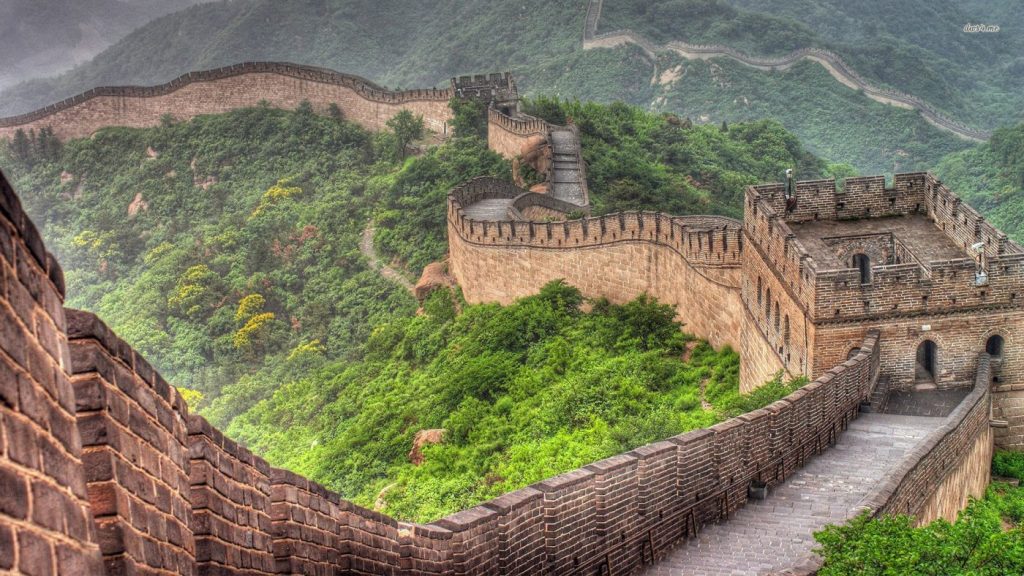
Visiting the Great Wall of China from Beijing:
The first thing to know about visiting the Great Wall of China is that there are many different sections of the wall you can visit, dotted all the way across Northern China. But if you’re want to visit the Great Wall from Beijing, there are 4 main sections of the wall you can visit. All of which are manageable to access the Great Wall of China from Beijing, either via public transport or via a day-trip ( day trips from Beijing are about $30, you can book them here ).
Here are 4 main sections to choose from when visiting the Great Wall of China from Beijing – I’ll go into more details in all of them below:
- Badaling: The most popular, and easiest and most preserved (but with the most tourists!)
- Juyongguan: Super close to Badaling, slightly fewer tourists, slightly less preserved
- Mutianyu: The least tourists, but less preserved and more difficult to access
- Jinshanling: Long hikes, not so preserved, not so many tourists, furthest away
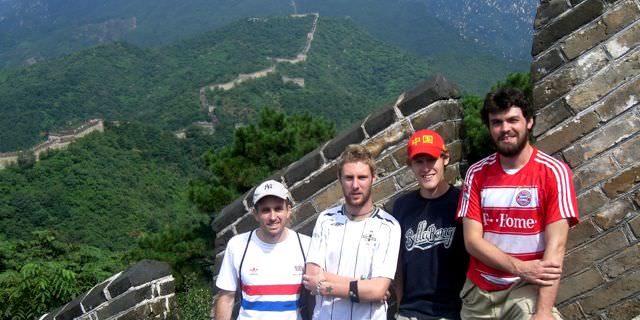
When you’re in Beijing, and people are trying to sell you trips to visit the Great Wall, 95% of the trips they offer will be to the Badaling section. I often think half the fun and chaos in China is the actual travel so it can be an adventure to try to get from Beijing to Badaling yourself. But if you’re pushed for time, or prefer to avoid the stress of working out buses etc, yourself, then you can book a day tour from Beijing to the Badaling section online here for $35 . If you book a tour, you also get the bonus of visiting Ming Tombs too.
Badaling itself is one of the best-preserved sections of the wall. It’s only 40CNY to enter ($6) but also has options for Cable Cars and Pulleys (140 and 100CNY/$20 and $15). There are 4kms of wall for tourists to explore here and it’s not super steep so it’s suitable for everyone.
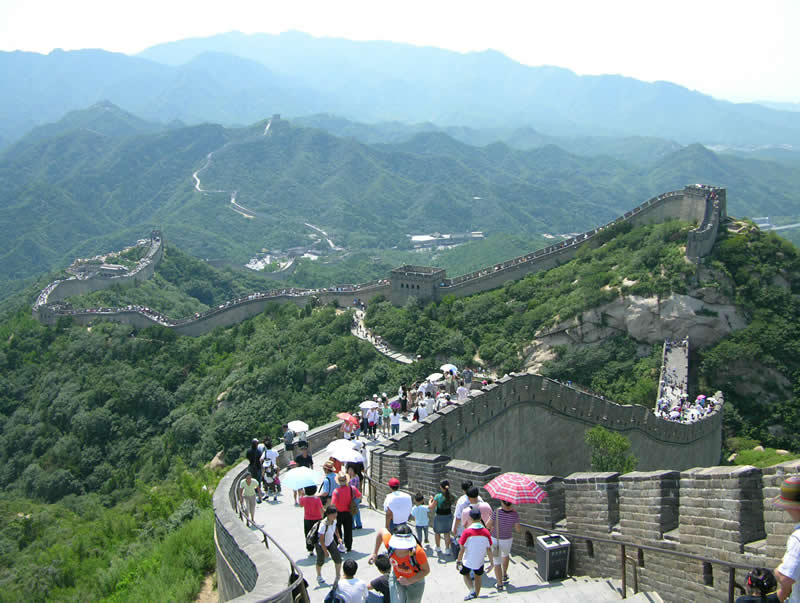
BEIJING TO BADALING BUS:
You can take the Public bus here for just $2/¥12 and it takes less than 2 hours each way. From Jishuitan subway station take Exit A , Deshengmen arrow tower on your left. Bus 877 (or 879) leaves exactly behind the tower.
Go early in the morning, and remember the last bus from Beijing to Badaling leaves at around 12:30, the last bus from Badaling to Beijing at around 16:30. Be wary of fake bus guys!
BEIJING TO BADALING TRAIN:
The best way in my option. Take the 1.5-hour train from Beijing Huangtudian station, a 150m walk from exit G4 of Huoying Station on the Beijing metro, ( the times are all here ) but they start at 6.30 and run until 21.30 so no problems there.
Juyongguan section : 60km from Beijing, about 1.5hrs drive
People who choose Juyongguan ahead of Badaling do so for a couple of reasons. One, of course, is much fewer tourists, another is because they want to hike! Juyongguan is a closed-loop so you can spend a day hiking the whole thing back to front without backtracking. The rugged mountains are impressive here and there are more buildings too, but it’s a lot steeper. No cable cars etc here.
Just 15 kms from Badaling so it’s very accessible. Follow the routes above, then from Badaling bus station, take bus 879 (or take a taxi it’s less than $10!).
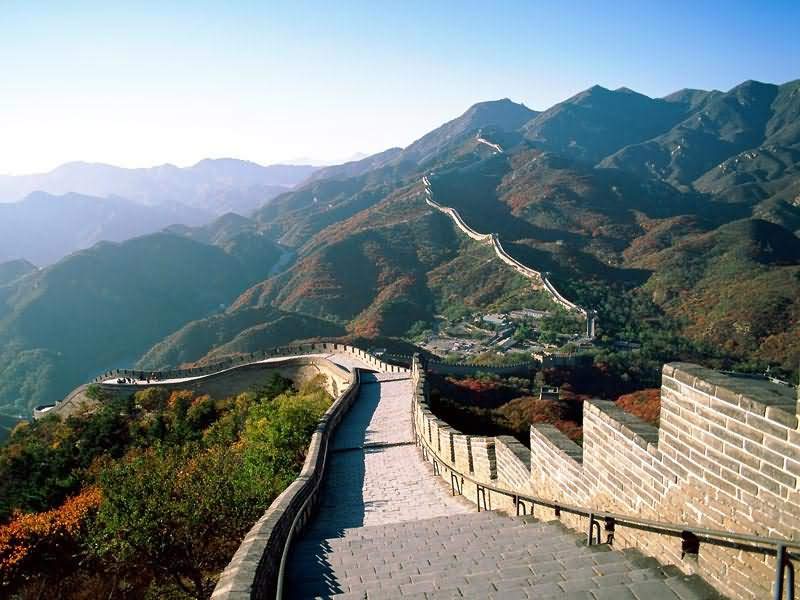
Mutianyu : Around 95 km from Beijing, about 2 hrs’ drive
The second most popular place when visiting the Great Wall of China from Beijing. The choice between the two comes down to this – Badaling is slightly better preserved and much easier to get to. Mutianyu is trickier to get to, and therefore has fewer tourists, but it’s still well equipped here with tourist restaurants and a cable car. The best option, in my opinion, is to book a cheap tour here with these guys , and go and hike here.
Beijing to Mutianyu BUS:
From Dongzhimen Bus Station, you can take bus line 916 Express to Huairou North Avenue (Huairou Beidajie) Station and takes 1 hour (only get the express!). There, transfer to bus line h23, h24, h35, or h36 to Mutianyu Roundabout. Finally, walk about 500 yards (450 meters) to the ticket office of the scenic area. Others will be doing the same.
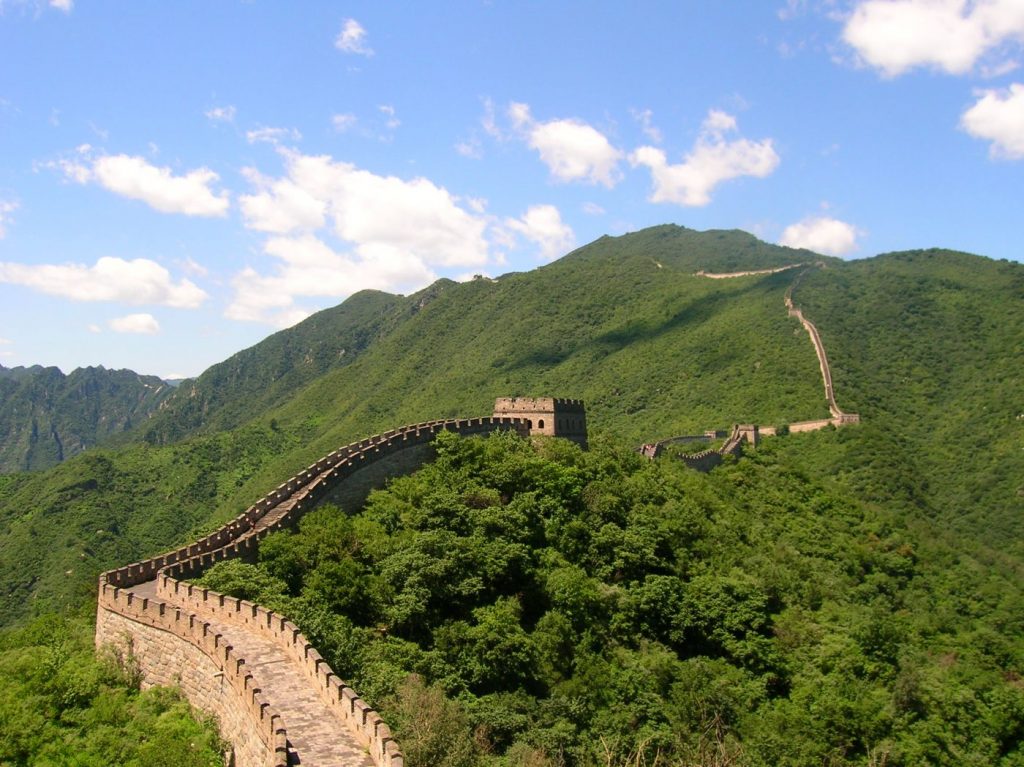

Jinshanling : Around 140 km from Beijing, about 2.5 hrs drive
Note: jinshanling great wall has been closed for renovation since june 1, 2017. when to resume operation is unknown. visitors can go to other sections as an alternative..
This is where they hold the Great Wall Marathon! It’s less developed, more rugged, steeper.
To get there by Subway
You may take subway line 13 (Exit D) or subway line 15 (Exit C) to Wangjing West Station. Then, take the tourist bus (April 1 to November 15) to your destination directly. The bus departs at 8:00 and returns at 15:00. The bus fare is CNY 32. The trip takes about 2 hours.
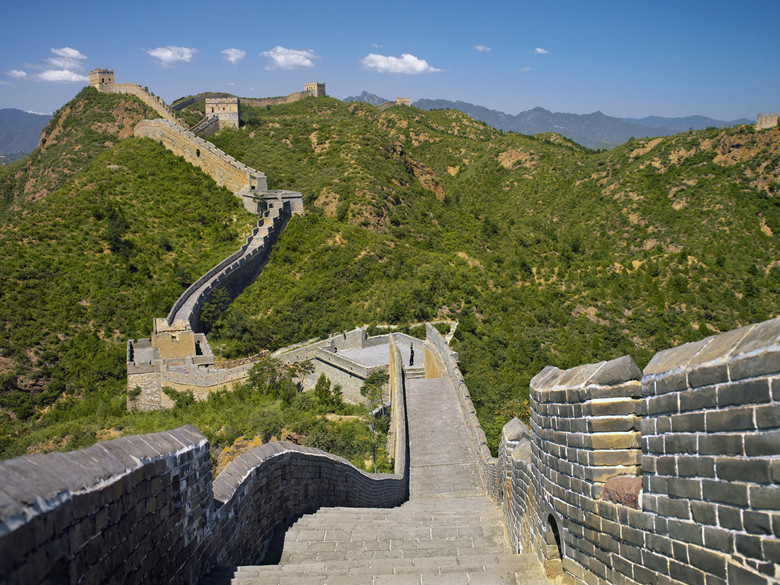
BEIJING TO THE GREAT WALL OF CHINA TIPS
Quick history on the great wall of china.
This incredible feat of human construction was built across the northern territory of China in order to protect the country from invaders. Throughout the wall are a series of turrets where the military would stand on guard. So great is the wall that it can be seen with the naked eye from outside of the Earth’s atmosphere and it sees millions of tourists visit each year.
The wall is actually a series of walls that were built from the 7th Century BC onwards and throughout various dynasties. At the most recent measurement, the wall stretches an incredible 6,259 kilometers. This wall is truly one of the Wonders of the World and no list of this type would be complete without it (and it’s the only building you can see from space, right? Wrong !).
DON’T GO DURING ANY CHINESE HOLIDAY – IT’S A NIGHTMARE!
The crowds are dictated by weekends, season (high season is may to august) but it’s the section of the wall that you choose that really determines the number of crowds.
It wasn’t built in one stretch, but over 4 different dynasties (or more).
- First Great wall – built by the Qin Dynasty 221-207 BC
- Second Great Wall – built by the Han Dynasty 205-127 BC
- Third Great Wall – built by the Jin Dynasty 1200 AD
- Fourth Great Wall – built by the Ming Dynasty 1367-1644
It’s 8,800km or 5,500 miles! Here you can see how far it stretches across China:
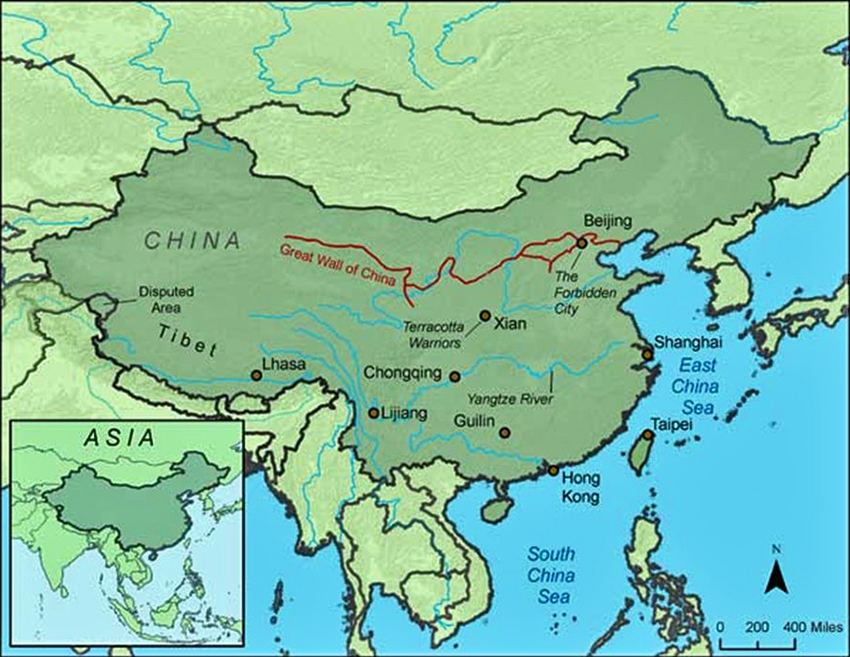
I’ve been twice from Beijing to the Great Wall of China, once via public transport to Badaling, and once on a day trip to Mutianyu ( book it here, starting at $10! ). It lived up to expectations for me, both times, but how much you enjoy the experience will come down to one things – waking up early and going before the crowds.
If you travelling to the Great Wall of China from Beijing independently via public transport then you should aim to take the first bus/train of the day so you’re literally one of the first people in the park. If you’re lazy, hungover and go a little later – you’ll be in the midst of the crowds. It’s still breathtaking, but check out the pic below what it can be like! Enjoy.
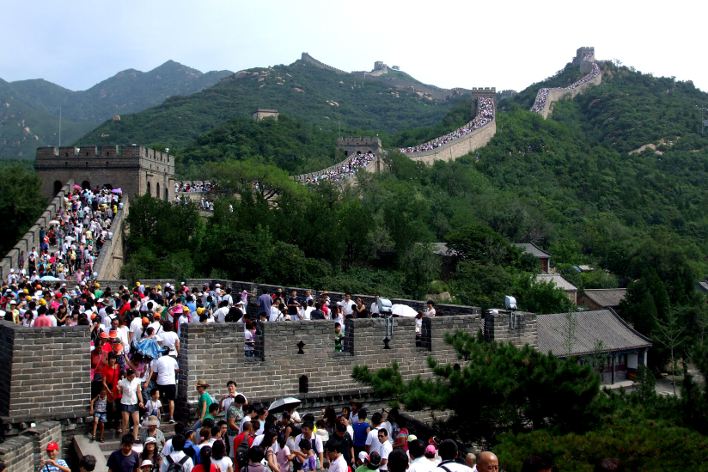
Remember, never travel without travel insurance! And never overpay for travel insurance!
I use HeyMondo . You get INSTANT quotes. Super cheap, they actually pay out, AND they cover almost everywhere, where most insurance companies don't (even places like Central African Republic etc!). You can sign-up here . PS You even get 5% off if you use MY LINK ! You can even sign up if you're already overseas and traveling, pretty cool.
Also, if you want to start a blog...I CAN HELP YOU!
Also, if you want to start a blog, and start to change your life, I'd love to help you! Email me on [email protected]. In the meantime, check out my super easy blog post on how to start a travel blog in under 30 minutes, here! And if you just want to get cracking, use BlueHost at a discount, through me.
Also, (if you're like me, and awful with tech-stuff) email me and my team can get a blog up and running for you, designed and everything, for $699 - email [email protected] to get started.
Do you work remotely? Are you a digital nomad/blogger etc? You need to be insured too.
I use SafetyWing for my digital nomad insurance. It covers me while I live overseas. It's just $10 a week, and it's amazing! No upfront fees, you just pay week by week, and you can sign up just for a week if you want, then switch it off and on whenever. You can read my review here , and you can sign-up here !
So if you’re ready to…..
1) change your life 2) travel the world 3) get paid to travel 4) create a positive influence on others 5) be free of offices and ‘real world’ rubbish, then sign up below and let’s get started, previous post visiting christ the redeemer statue in rio de janeiro, brazil, next post how i got my saudi arabia visa (fake documents included), follow me on instagram @onestep4ward.

Popular Posts

How I donated $300,000 Thanks to My Blog

Climbing Mount Everest – Everything You Need to Know from My Experience. Costs, Difficulty Etc

Rowing Across the Atlantic Ocean; My Experience

JOIN MY TOUR TO SOCOTRA – April 2024

How To Start A Travel Blog in 2024

Riding the Iron Ore Mauritania Train across the Sahara Desert
Juicy links.
- About Johnny
- Central Asia
- Destinations
- Getting Started with One Step 4Ward!
- Join a Trip
- My Partners
- One Step 4Ward Blog
- Privacy Policy
- Public Speaking
- Thank you for ordering!
- Travel Resources
- Waiting List
- Where I’ve Been…
- Travel Tips
- My Lifestyle Design
- Travel Bucket Lists; A List of travel things to do before you die!
- Inspirational Quotes
Thanks for deciding to subscribe to my blog, it means a lot to me that people trust a normal guy from Ireland.
You should be proud you’re taking a new step to changing your life.

I talk about how I did it, and how you can do it too, in my COMPLETELY FREE Ebook , all 20,000 words or so. Just finish the process by putting in your email below and I’ll mail it right out to you immediately. No spam ever too, I promise!
Take ownership. Take action, and remember
“If you don’t build your dream, someone will hire you to help build theirs”

National Geographic content straight to your inbox—sign up for our popular newsletters here
- WORLD HERITAGE
See China’s Iconic Great Wall From Above
This is one of the world’s greatest feats of engineering.
China’s iconic Great Wall, actually a network of fortifications rather than a single structure, is the product of countless labors over a period of some two thousand years. Qin Shi Huang took the remnants of truly ancient fortifications, walls, and earthworks begun in the fifth century B.C. and linked them into a unified wall circa 220 B.C. as part of a massive project to protect China against marauding barbarians from the north.
By the time construction on most of the stone-and-brick Great Wall, with its turrets and watchtowers, was completed during the Ming dynasty (1368-1644) the chang cheng had become the world’s largest human-made object.
A recent government mapping project revealed that the entire Great Wall structure spans some 5,500 miles (8,850 kilometers) from the Korean border west into the Gobi desert. Of that total 3,889 miles (6,259 kilometers) were actual wall, while 223 miles (359 kilometers) were trenches and (1,387 miles) 2,232 kilometers were natural defensive barriers, like rivers or steep hills, incorporated into the system.
Though new sections of the wall have recently been uncovered, several sections of the structure have vanished during the past half century or so. Mao Zedong himself encouraged destruction of parts of the wall and reuse of its materials in the 1950s, and rural farmers still make use of the wall’s earth and stone for practical purposes.
Some 50 percent of the original ancient structure has already disappeared, and perhaps another 30 percent lies crumbling into ruins—even as Chinese and international organizations struggle to preserve what remains of this unique treasure.
21 of China's Most Spectacular UNESCO Sites

How to Get There
tourists explore the wall from Beijing. The most popular section (Badaling) is 42 miles (70 kilometers) from the city. This section boasts impressive views, and with crowds come all the modern trappings of development. Those seeking less popular or unrestored sections of the wall have many suitable choices within easy driving distance of Beijing.
The wall has endured centuries of seasons and remains ready to host visitors year round. The Beijing region has icy winters, but the hardy will find far fewer crowds than during the peak summer seasons. Autumn is often delightful near Beijing with mild weather (43° to 64°F/6° to 18°C) and reduced tourist crowds. Wind and dust can be common in springtime. China is a nation of festivals, so consider timing a visit to coincide with a celebration in the shadows of the wall.
- Nat Geo Expeditions
How to Visit
As is appropriate for a monument so massive, there are many ways to visit the wall. Some visitors aspire to admire the views from popular tourist sections, pose for pictures, walk the wall, and take advantage of amenities from restaurants and shops to cable car rides. Others choose to explore rugged sections of the structure on extended hikes and climbs of unrestored “wild wall” sections, though these can be dangerous and are often located in rural areas well off the typical tourist path.
For Hungry Minds
Related topics.
- WORLD HERITAGE SITES
- ENGINEERING
- ANCIENT CIVILIZATIONS
You May Also Like

See these 6 architectural wonders before they disappear

20 of the coolest travel adventures for 2024

Carthage was Rome’s greatest rival. Go see its side of the story.

This ancient marvel rivaled Rome’s intricate network of roads

See the summer solstice from a Roman emperor’s party cave
- Environment
History & Culture
- History & Culture
- History Magazine
- Mind, Body, Wonder
- Coronavirus Coverage
- Paid Content
- Terms of Use
- Privacy Policy
- Your US State Privacy Rights
- Children's Online Privacy Policy
- Interest-Based Ads
- About Nielsen Measurement
- Do Not Sell or Share My Personal Information
- Nat Geo Home
- Attend a Live Event
- Book a Trip
- Inspire Your Kids
- Shop Nat Geo
- Visit the D.C. Museum
- Learn About Our Impact
- Support Our Mission
- Advertise With Us
- Customer Service
- Renew Subscription
- Manage Your Subscription
- Work at Nat Geo
- Sign Up for Our Newsletters
- Contribute to Protect the Planet
Copyright © 1996-2015 National Geographic Society Copyright © 2015-2024 National Geographic Partners, LLC. All rights reserved
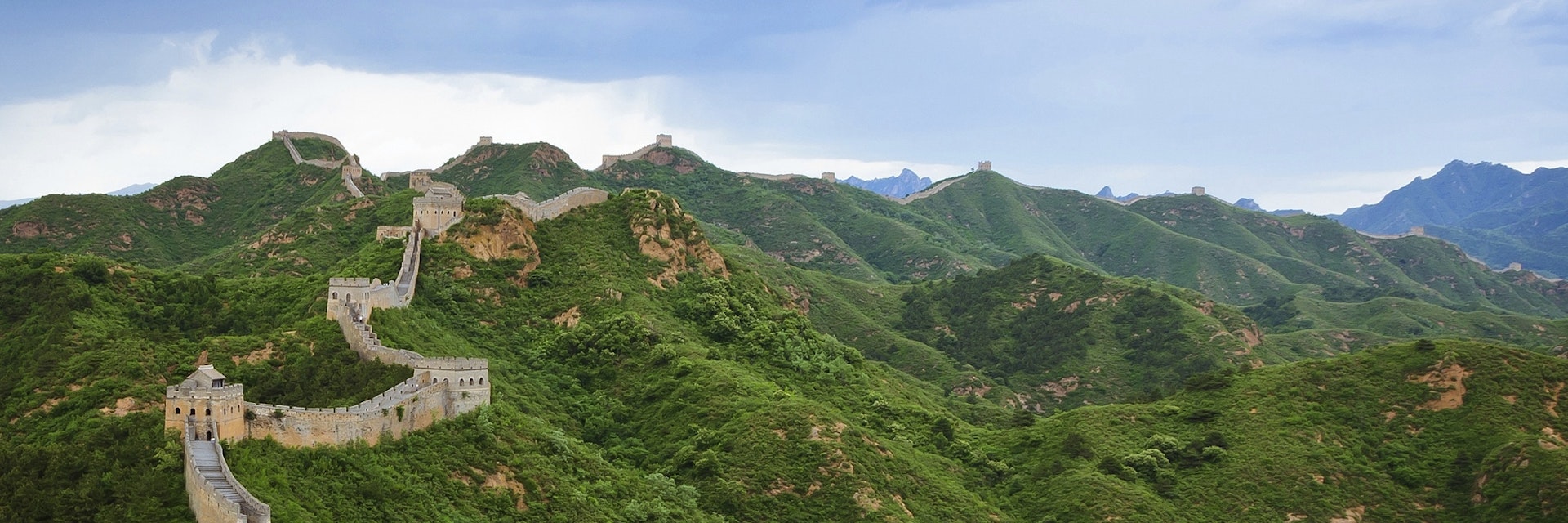
The Great Wall
Coiling its way through 23 degrees of longitude, the Great Wall (长城, Chángchéng) stands as an awe-inspiring monument to the grandeur of China’s ancient history. With sections dating back 2000 years, the wall (or, more accurately, walls, because they belong to several different eras) wriggle haphazardly from their scattered Manchurian remains in Liaoning province to wind-scoured rubble in the Gobi desert and faint traces in the unforgiving sands of Xinjiang. Interspersed with natural defences (such as precipitous mountains), the Great Wall can be visited in 15 Chinese provinces, principalities and autonomous regions, but nowhere is better than Beijing for mounting your assault on this most iconic of bastions.
Attractions
Must-see attractions.

Jiankou Great Wall
For stupefying hikes along perhaps Beijing’s most incomparable section of Wall, head to Jiankou, where white-knuckle sections like ‘Upward Flying Eagle’…

Jinshanling
Jinshanling Great Wall, near the town of Gubeikou, has been thoroughly restored, but it's distant enough from Beijing that it sees far fewer tourists than…

Famed for its Ming-era guard towers and excellent views, the 3km-long section of wall at Mutianyu, northeast of Beijing in Huairou County, is largely a…

Simatai, built during the reign of Ming dynasty emperor Hongwu, is famed for the precarious steepness of its battlements as they soar up the 'heavenly…

Historically a strategic portal between the fertile lands of the capital and the more arid plains beyond, Badaling has been called the ‘Key to Northern…

China Great Wall Museum
This sizeable museum blusters through a history of the Wall, from its origins as an earthen embankment in the far-off Qin dynasty (221–207 BC) to the Ming…

Gubei Water Town
Cashing in on the magnificent Simatai Great Wall that overlooks it, this faux-historic village of waterways and old courtyards is a commercial venture…
Latest stories from The Great Wall
Filter by interest:
- All Interests
- Adventure Travel
- Art & Culture
- Beaches, Coasts & Islands
- Food & Drink

Sep 2, 2020 • 5 min read
Cloaked in legend and mystique, the Great Wall of China is often misunderstood. Here's everything you need to know about this remarkable structure.

Mar 25, 2020 • 1 min read
Purchase our award-winning guidebooks
Get to the heart of The Great Wall with one of our in-depth, award-winning guidebooks, covering maps, itineraries, and expert guidance.
How to visit Summer Palace (Tips, Photos & Map)
A comprehensive guide to visiting the temple of heaven.
- Plugs, Sockets, Adapters and Electricity in China
- 10 Fascinating Facts about China
China Travel Tips
Tour-Beijing.com – your one-stop place for planning your trip to Beijing China
Beijing Travel Tips
Visiting the Great Wall is a delightful must for the first-time visitors to Beijing China.

Beijing in March Travel Guide (Weather, Wear, Events & Tips)

How to Visit Mutianyu Great Wall (Tips,Photos & Map)

How to visit Jingshan Park

How to Visit Forbidden City (Tips, Photos & Map)
- China Travel
- Great Wall of China
How to Visit the Great Wall of China (Tips, Photos & Map)
Dear Travellers,
We’d like to have the following Great Wall travel tips to remain updated for the benefit of new visitors visiting the Great Wall of China. If anybody having used the piece finds necessary updates, please leave a message or feedback. Thanks! _____________
Plan your Great Wall Tour ? Needless to say, you will visit the Great Wall of China on your first trip to Beijing China. So, where to start, when to visit, which sections of Great Wall to visit, how to visit and where to stay?
Tip 1: Where to Start your Great Wall Trip?
The Great Wall of China was built mainly during the three dynasties – Qin Dynasty (221 B.C to 206 B.C), Han Dynasty (206 B.C.– 220 A.D ) and Ming Dynasty (1368 A.D – 1644 A.D).
The most powerful Yuan Dynasty and Qing Dynasty (the last dynasty) did nothing about the building of the Wall since they were “barbarians” against whom the Great Wall of China was supposed to have been built.
Those sections of the Great Wall snake across the northern China stretching from Shanhaiguan Pass in the east to Jiayuguan Pass in the west, totalling 21196 km long with the Great Wall built in Ming Dynasty ( 1368 to 1644 A.D) being the longest – 8851 km.
Basically most of the first time travellers would choose Beijing as their springboards to visit these sections of the Great Wall of China built in Ming Dynasty. Most of the sections of the Great Wall open to tourists here are tamed or reconstructed for the safety of travellers. But still there remain some wild ones (original and unrestored) – crumbling, overgrown and barred to walkers, but attracting adventure hikers.
Note: this travel guide is mainly focused on some practical travel tips for planning ahead your visit to the Great Wall of China starting from Beijing.
Tip 2: Best time to hike the Great Wall
In Beijing, all the officially administered sections of the Great Wall are open to tourists all year round. The ideal months for the Great Wall hike fall on spring, early summer, and autumn: later March, April, May, June, September, October and early November.
Great Wall Hike in Spring (March 15 to May 15)
Each year, March 15th is the official day of turning off the heating system in Beijing. This special date indicates the dry, harsh cold of Beijing’s winter is coming to an end though Beijingers will still have some chilly days in March.
A warmer spring usually starts early April and ends early May. So a warm springtime in Beijing lasts over one month. Kindly reminder: There are possibly dust storms in March. But things are getting better with the efforts put into the local environment management. Generally speaking, Beijing is dry and windy in spring.
Spring is a delightful time to visit the Great Wall – mild climate, green trees and flowers. But if you hike the Great Wall, you still feel chilly and a bit cold especially in March, wearing jackets in the morning and evening due to the big temperature drop between day and night.
How to Visit Beijing in March How to Visit Beijing in April How to Visit Beijing in May
Great Wall Hike in Summer (May 15 to September 15)
If you happen to visit the Wall in summer – later June, July and August, be ready for heat stroke prevention – sunglasses, sun cream, sun block, hat, and water. Summer is the rain season in Beijing and just bring waterproof in case. The weather in July and August is a bit muggy, so be well prepared for your hiking in summer.
You will expect a long queue, waiting to buy entrance tickets for the Great Wall mainly due to the large number of domestic tourists because of school vacations in July and August.
How to visit Beijing in June How to visit Beijing in July How to visit Beijing in August
Great Wall hike in Autumn (September 05 to November 15)
The foggy and cloudy days in Beijing’s oppressive summer are leaving us, coming with Beijing’s cooling autumn, with a blue sky, comfortable sunshine and the colorful leaves in and around Beijing.
Beijing autumn, specifically the two months from the mid-September to mid-November are the best season to visit Great Wall in a year. It’s always comfortably cool outside.
The best period autumn colors starts from October 15 throughout November 15 in Beijing with many trees changing theirs colors with charming autumn hues. Snap pictures or just take in a feast for the eyes!
Fairly big difference in temperature between early morning and afternoon. Wear a thin jacket, or a warm coat in the morning, long-sleeve shirts or short T-shirts in the afternoon. So be mindful of the temperature difference in Autumn, comfortable sport shoes, rubber soled shoes for hiking. In afternoon, sometimes the autumn sunlight could be very strong, get ready for sunglasses, sun cream and sun hat.
How to Visit Beijing in September How to Visit Beijing in October How to Visit Beijing in November
Great Wall Hike in Winter (November 15 to March 15)
Winter Great Wall Hike is a bit challenging mainly due to the frozen weather in later December, January and early February each year in Beijing. You are advised to dress warmly – winter hat with ear flap, ear warmers, gloves, scarf, warm jackets and their winter accessories.
The Great Wall is impossible to hike only because the roads leading to the sections of the Great Wall are blocked due to the heavy snow or other extreme weather. If you plan to do the hike in winter, we do suggest you check the weather report. Check out How to Visit Great Wall of China in Winter
How to Visit Beijing in December How to Visit Beijing in January How to Visit Beijing in February
Tip 3: Avoid weekends or public holidays
It is better to hike the Wall during the weekdays instead of weekends. Strongly advise you not to visit the Wall during China public holidays ( Especially May 1-3, and October 1-7).
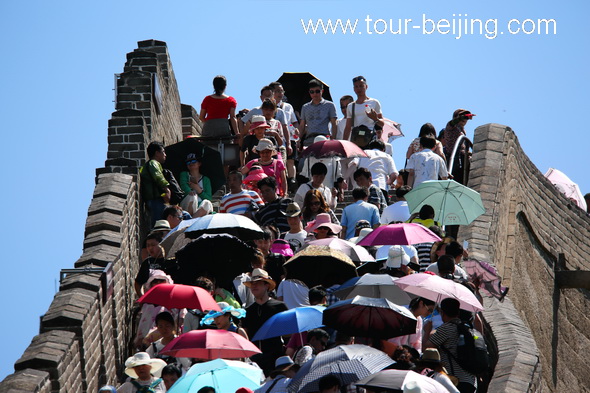
On these special days you will waste much of your valuable time on the way from your hotel to the Wall. On the Wall, you have to take group photos due to a great number of people on the Wall.
Tip 4: Select the section of the Wall
There are 10 major sections of the Great Wall of China around Beijing . Within the officially managed sections of the Great Wall, the entrance fees are collected, police stations are set up and security guides are dotted along the Wall.
Jiankou is not open to tourists due to their wildness and treacherousness.
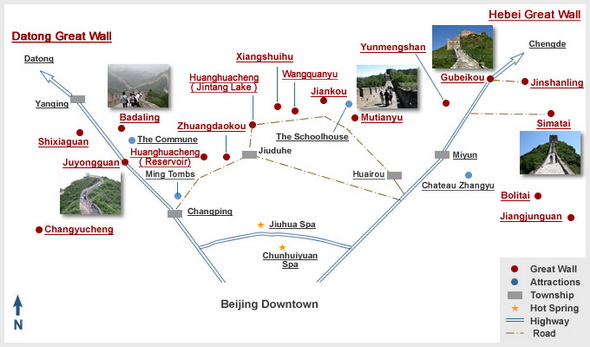
We’ve rounded up some useful tips for choosing the right bit of the Wall.
1) juyongguan great wall.
If you don’t have much time, but you still want to have a glimpse of the Wall, especially on a busy day, choose Juyongguan Great Wall .
Juyongguan, literally “Juyong Pass”(居庸关), is situated in a valley named “Guangou” as long 20 kilometres, which is within Changping District, about 50 kilometres north of downtown Beijing. It is one of the three most famous passes of Great Wall in China。
2) Badaling Great Wal l
If you want to see the most popular and gorgeous restored section of the Wall in Beijing, go to Badaling Great Wall . Badaling is also wheelchair friendly , accessible by the handicapped.
3) Mutianyu Great Wall
If you want to visit the Wall with beautiful green scenery and environment ( travel with kids or seniors), less crowded, then visit Mutianyu Great Wall .
If you are a fall foliage peeper, Mutianyu Great Wall is a great place to have your eyes satisfied in autumn hues. Check out Mutianyu Great Wall in Autumn for more information.
4) The wild and original sections of the Wall
If you want to hike the wild and original sections of the Wall (half restored or unrestored), go to visit Shixiagan Great Wall, Jiankou Great Wall , Jinshanling Great Wall , Gubeikou Great Wall , Huanghuacheng Great Wall and Simatai Great Wall or put them together.
Check out: Hike from Jiankou Great Wall to Mutinayu Great Wal l . Jiankou Great Wall is forbidden to hike according to the official rule and regulations concerned. Hikers are responsible for their own safety while hiking Jiankou Great Wall.
Check out Hike from Gubeikou Great Wall to Jinshanling GreatWall . Today’ Gubeikou Great Wall is only composed of two parts – Panlongshan Great Wall and Wohushan Great Wall. “Panlongshan” literally means “Coiled Dragon Mountain” while “Wohushan” literally means “Crouching Tiger Mountain”.
The two mountains faces each other with a valley in between from south to north, a strategic passage in the ancient times linking Inner Mongolia and Beijing. Now the valley has been turned into a fast developing Gubeikou Township under Miyun County of Beijing City.
Check out Simatai Great Wall . There are totally 16 watch towers distributed on the Simatai Great Wall snaking the ridge of the steep mountain. The 13th-16th towers are forbidden to hike due to their steepness and treacherousness.
Check out Hike Across Shixiaguan GreatWall . Shixiaguan Great Wall ( literally means “Stone Gorge Pass Great Wall”) is officially known as Ruined Badaling Great Wall . It is 5km southwest of the restored Badaling Great Wall,a western gate of the Badaling Defense Works.
Check out Huanghuacheng Great Wall . Huanghuacheng (literally meaning “Yellow Flower City”) Great Wall (黄花城), about 65 km north of downtown Beijing, is one of the most ruined sections of the wall in Beijing.
It has become popular with hikers in recent years. This section of the great wall is about 1000 meters long and connecting Juyongguan Pass Great Wall and Badaling Great Wall in the west and Jiankou Great Wall and Mutianuyu Great Wall in the east. Now it is a quite challenge to climb the wall since it is overgrown and treacherous.
Check out Jinshanling Great Wall Jinshanling Great Wall (金山岭长城) is located about 130 km in the northeast of the downtown Beijing. To its east stands the Simatai Great Wall and the west stands Gubeikou Great Wall. Jinshangling Great Wall was named after the mountain called Jinshan Mountains. The Jinshanling Great Wall was first constructed built in the Ming Dynasty.
The famous general, Xu Da, of the early Ming Dynasty (1368-1644) supervised and directed the construction of the Great Wall. Later, Qi Jiguang led a number of defense works while guarding the north area in 1567.
Tip 5: How to get to the Great Wall of China
1. get to badaling great wall by bus.
Take Badaling Great Wall Bus No.877 (Bus Fare: RMB 12)
Deshengmen (德胜门)- Badaling (八达岭) Operating Hours: 06:00-12:00(Apr.1-Oct.31) 06:00-12:30 (Nov.1-Mar.31)
Return: Badaling (八达岭)- Deshengmen (德胜门) 10:30-17:00(Apr.1-Oct.31) 11:00-16:30(Nov.1-Mar.31) From: Deshengmen Bus Station
Note: Bus 919 has two kinds of bus lines: 919 express (919快) and 919 slow (919慢) with their final destinations being Yanqing County. Bus 919 will stop at the Badaling Great Wall ( the drop-off stop is a bit far from the ticketing office). You are still advised to take 877, the special bus for Badaling Great Wall tourists.
2 . Go to Badaling Great Wall by train
Check out How to get to Badaling Great Wall by Train
6 Daily High Speed trains ( One extra train added on weekend) starting from Qinghe Railway Station to Badaling Great Wall Station and vice versa
High speed trains from Qinghe Railway Station to Badaling: G2501 ( 07:00 – 07:19 ) Only available on Fri, Sat & Sun G7873 ( 08:38 – 08:57 ) G2485 ( 12:48 – 13:07 ) G2429 ( 14:11 – 14:30 ) G8815 ( 14:43 – 15:02 ) G2431 ( 16:25 – 16:44 ) G2439 (18:18 – 18:37 )
High speed trains back from Badaling to Qinghe Railway Station G2402 ( 09:21 – 09:41 ) G2416 ( 13:24 – 13:43 ) G7876 ( 14:04 – 14:23 ) G2430 ( 17:56 – 18:15 ) Only available on Fri, Sat & Sun G2434 ( 19:08 – 19:27 ) G8818 ( 19:58 – 20:18 )
Ticket prices for the high speed trains between Qinghe Railway Station and Badaling Business Class: RMB 70 ; First Class: RMB 37 ; Second Class: RMB 23
3. Go to Mutianyu Great Walll by bus
Check out How to visit Mutianyu Great Wal l for more information.
Apart from the regular 916 Express Bus operated all year round from Dongzhimen Transportation Hub to Huairou District where you connect Bus H23 or taxi for Mutianyu Great Wall Scenic Area, there is one daily return direct shuttle bus starting from Beijing Dongzhimen Wai Bus Station to Mutianyu Great Wall Scenic Area .
4. Go to Gubei Water Town and Simatai Great Wall
Basically you have four ways by using the special shuttles, public buses and S5 trains going from the city core of Beijing to Gubei Water Town ( Simatai Great Wall) or vice versa. Please check out: Bus & Train to Gubei Water Town & Simatai Great Wall .
5. Go to Jinshanling Great Wall by bus
At Dongzhimen Public Transport Hub (东直门交通枢纽) take Bus 980. Very Important Notice: Actually the Bus 980 Express stops at Miyun County ( 密云汽车站 ), and then you take a mini bus from the downtown Miyun to Jinshanling.
Bus Fare: RMB 15
Minibus Fare: about RMB 50 ( you have to share a mini-bus for Jinshanling Great Wall)
6 . Taxi to the Great Wall of China
Check out Take a taxi to the Great Wall for more information.
You can also charter a taxi for day trips to the Great Wall. The drive ranges from 1.5 hour to 2.5 hours from the city center according to the different sections of the Great Wall.
Below are the approximate taxi fares to the different sections of the Great Wall with waiting for about 2-3 hours while touring the wall:
Beijing Mutianyu Great Wall: 85km – RMB 600 Beijing Badaling Great Wall: 80km – RMB 500 Beijing Simatai Great Wall: 140km – RMB 700 Beijing Juyongguan Great Wall: 60km – RMB 400 Beijing Jinshanling Great Wall: 160km RMB 800 Beijing Gubeikou Great Wall: 150km – RMB 750 Beijing Jiankou Great Wall: 85km – RMB 650 Beijing Huanghuacheng Great Wall 85km – RMB 600
Tip 6: Book a Great Wall Bus Tour or Private Tour
Don’t want to make the do-it-yourself route? No worries, you can easily book Great Wall Bus Tour (daily group tours) or private day tour through your hotel or local tour operators. Check out Beijing Day Tour and Beijing Group Tour for more information.
Each morning, you will be picked you up from your midtown hotel, then you will go to visit the Wall together with other tourists.
Groups are kept to about 10 passengers in a comfortable modern 22-seat coach with professional Beijing chauffeurs and English speaking tour guide.
Tip 7: Tips for Wheelchair users
Both Badaling Great Wall and Mutianyu Great Wall have accessible ramp paths. On the Badaling Great Wall, a special flat lane is built for wheelchair users to get to the third watch tower of the Great Wall. Even two elevators are equipped for easy ascending the wall if you book the elevator service in advance.
Badaling Great Wall has the upper hand over Mutianyu Great Wall with its gentle ramp leading to the first watch tower of the Great Wall.
Check out “ The Most Wheelchair-Friendly Great Wall to Visit ” for more tips for accessible Great Wall of China.
Basically it is more convenient to use its smooth and gentle ramp leading up Badaling Great Wall. You don’t need to use the cable car. The area for the upper cable station is not wheelchair-friendly and teem with domestic tourists.
On the Mutianyu Great Wall, wheelchair users may take a cable car up and then use the accessible lane leading to the platform below the 14th watch tower for a good view of Mutianyu Great Wall.
The accessible paths in Mutianyu Great wall are too steep, not wheelchair user-friendly! The accessible lane from the upper cable car station to the platform below the 14th watch tower on Mutianyu Great Wall.
The accessible platform for wheelchair users below the 14th watch tower on Mutianyu Great Wall.
Tip 8: Tips for Experienced Travellers
you may choose half restored or wild sections of the Wall. But you have to be responsible for your own safety.
Travel Notes for wild great wall hiking: 1. Things to take: sports shoes or hiking boots, sticks, cap, sun-glasses, sunscreen, bottles of water, snacks, pocket knife, lip balm and first aid kit. 2. Using toilets at the entrance of the Wall. No toilets on the hiking route. Please always carry toilet paper by yourself. 3. Wearing pants and long-sleeves even in summer to hike through jungles and bushes. 4. You are responsible for your travel insurance for your coverage of injury or accident. 5 Be a green and responsible hiker, taking nothing but photos and leaving nothing but footprint.
How to Visit Great Wall of China How to Visit Jiankou Great Wall How to Get to Badaling Great Wall by Train How to Get to Badaling Great Wall by Bus How to Get to Simatai Great Wall & Gubei Water Town How to Visit Mutianyu Great Wall How to Visit Great Wall of China in Winter How to Visit Great Wall of China Wheelchair Accessible
Tip 9: Hassle-free Great Wall Guided Tours
Don’t want to go the do-it-yourself route? No worries, We at Tour Beijing have some options for guided tours to Great wall Tours:
Mutianyu Great Wall Group Day Tour Mutianyu Great Wall Half Day Private Tour Hike from Jiankou to Mutianyu Great Wall Tour Hike from Gubeikou to Jinshanling Great Wall Tour Hike from Jinshanling to Simatai Great Wall West Tour Badaling Great Wall + Mutianyu Great Wall Day Tour Badaling Great Wall and Underground Palace Day T our Badaling Great Wall + Forbidden City + Tiananmen Square Day Tour
Visit Badaling Great Wall by Train Visit Mutianyu Great Wall by Bus
Hike from Jiankou to Mutianyu Great Wall Tour Hike from Gubeikou to Jinshanling Great Wall Tour Hike from Jinshanling to Simatai Great Wall West Tour Badaling Great Wall + Mutianyu Great Wall Day Tour Badaling Great Wall and Underground Palace Day Tour Badaling Great Wall + Forbidden City + Tiananmen Square Day Tour
Further Readings
How to Plan a Trip to Beijing Top 10 Attractions in Beijing Top 10 Tourist Scams Beijing How to Visit Tiananmen Square How to Visit Forbidden City How to Visit Temple of H eaven How to Visit Summer Palace How to Visit Ming Tombs How to Visit the Great Wall of China How to Visit Hutongs How to Visit Olympic Sites
Top 10 Markets in B eijing Top 10 Shopping Malls in Beijing Beijing Shopping
Wangfujing Snack Street Qianmen Commercial Street Beijing Huguosi Street
Any questions, just drop a line.
252 thoughts on “ How to Visit the Great Wall of China (Tips, Photos & Map) ”
The great wall is open every day, even on holidays. (Except to be repaired)? For example, will be open for service on the new year, December 31?
Dear Leila Brown,
Thanks for your inquiry!
Yes, the Great Wall, such as Mutianyu Great Wall is open all year around ( including Dec 31 ). Have a nice trip to Beijing!
Leave a Reply
Your email address will not be published. Required fields are marked *
This site uses Akismet to reduce spam. Learn how your comment data is processed .
Related News
Xiaohekou great wall, liujiakou great wall, jiumenkou great wall, zhuizishan great wall.
- WildChina’s Travelogue
- Bendi Stories
- The China Travel Podcast
- Search All Journeys
- Expert-led Journeys
- Small Group Tours
- Mainland China
- Day Experiences
- Global Departures
- Beshan Website
- Education Programs
- Corporate Services
- Cultural Projects and Spaces
- How to Visit China in 2024
- WildChina Restaurant Guides
- A Guide to China’s Trains
- Travel Updates
- Booking Conditions
- Health and Safety
- Traveling to Tibet FAQ
- How Wild is WildChina?
- Award Winning Services
- Recognitions
- Our Leadership
- Our Designers
- Our Experts
- Work with Us
- Our Sustainability Position
- Plan your journey

How to Visit the Great Wall from Beijing
Seeing the Great Wall of China is on many travelers’ ‘to-do’ list and it’s certainly high on our list of recommendations for Beijing. But which section of the wall should you visit? And what should you do there? Read on for our top suggestions.
(Spoiler Alert: where possible we always avoid Badaling, a famous and over-crowded section of the wall. We recommend you do too!)

RELATED READING: 144 Hours of Visa-Free Travel in Beijing and Hebei
The Great Wall from Beijing: For the Wild at Heart
If you’re an avid hiker looking for a lesser-visited section of the wall, then Huanghuacheng, the “Yellow Flower Wall” might be the place for you. The Huanghuacheng section of the Great Wall is further away from the city of Beijing than Mutianyu or Badaling so, if you get there early, you’ll likely have it entirely to yourself.
Huanghuacheng’s unique mountain and lake scenery is breathtaking and the area has recently undergone a five-month repair project – meaning it’s open to visitors once again. Hiking at Huanghuacheng is mid-to-high on the difficulty scale. Your WildChina guide will show you the safest route and will bring a picnic along for when you get peckish. Apart from the natural scenery, this part of the wall is also known as the “First Pass” for its strategic importance.
For a little adrenaline and an even more challenging hike, the Great Wall at Jiankou covers the steepest, most varied terrain of the Great Wall. Another example of the “Wild Wall”, Jiankou remains largely unrestored. The Jiankou section of the Great Wall was built during the Ming Dynasty (1368-1644) out of white dolomite stone from the surrounding area; set boldly against the tall, jagged mountains, this section of the wall is a photographer’s paradise.

RELATED READING: 5 (Alternative) Must-Sees in Beijing
The Great Wall from Beijing : For the Thrill Seeker
For families or travelers looking for a different perspective on the Great Wall, why not choose a helicopter ride over the Mutianyu section? Two hours outside Beijing proper, the Mutianyu section of the Great Wall affords views of the stone structure snaking over precipitous mountain ridges on the horizon. It’s one thing to stand atop the wall, looking down onto the mountains below, and its’ another entirely to look down, even on those who have performed the climb, to see the grandeur of the wall itself from a birds-eye view.
If you’re a thrill seeker hoping to keep your feet closer to the ground, the toboggan ride down the wall at Mutianyu won’t disappoint. If you want to skip the whole climb, you can opt for the gondola ride up to the top, followed by a toboggan ride along a metal track all the way back down, along a scenic route that’ll make you more familiar with the surrounding area.

RELATED READING: Beijing By Bike: One Wild Ride
The Great Wall from Beijing : For a Special Occasion
What better way to celebrate a birthday or anniversary than by asking us to arrange a romantic champagne picnic on your own, private Great Wall turret – it could even be a surprise for your loved one. We’ll arrange everything, so you can enjoy the day too!
After you’ve watched the sun go down, a glass of bubbly in hand, we recommend staying at the luxurious new Dhawa Jinshanling Hotel. Here, the wild sections of the Great Wall take over from the restored as it stretches ever further west. The hotel itself is a serene, contemporary collection of “cocoons” just steps from Jinshanling, one of the most photogenic, idyllically uncrowded sections of the Great Wall.
There are many ways to experience the Great Wall from Beijing, how will you choose to define your experience?
More interesting reads

We’re on hand to help you get the information you need about travel in China, whenever you need it. We’re not robots; we’re real people, travel designers here to help you.
As COVID-19 restrictions and regulations change, we want to make sure that you can travel in a safe and responsible way. Let us know your China travel questions and, within one business day, we’ll personally get in touch via email, phone call, or WeChat (whichever method you’d prefer) to help you answer it.
Beijing Address:
803 Oriental Place, 9 East Dongfang Rd, Chaoyang District, Beijing, 100027
Shanghai Address:
A12, 3rd Floor, SIP, No. 1318, North Sichuan Road, Hongkou District, Shanghai
Chengdu Address:
26th Floor, No. 1-2 Hangkong Road, Wuhou District, Chengdu, Sichuan
Yangshuo Address:
No. 26 Furong Road, Yangshuo, Guangxi
+86 10 6465 6602
+1 888 902 8808 (Toll Free)

Explore Top Picks: Best Cities in China to Visit
Did you know that China is home to some of the most vibrant and culturally rich cities in the world?
With its vast landscapes, ancient traditions, and modern innovations, China offers a plethora of must-visit cities that cater to every traveler’s interests. Whether you’re captivated by historical landmarks, intrigued by delectable cuisine, or simply seeking breathtaking natural beauty, China has it all.
In this article, we will explore the best cities in China that should be on your travel bucket list. From the iconic Great Wall to the bustling streets of Shanghai , each city offers a unique experience that unveils the diverse beauty and charm of this incredible country.
So grab your passport and let’s embark on a journey to discover the top cities to visit in China!
Click Here to Read The Full Article
Beijing – A Dynamic Blend of Ancient and Modern
Beijing , the capital of China, is a must-visit city that offers a perfect blend of ancient and modern attractions. Whether you are a history buff or a lover of contemporary culture, Beijing has something to captivate every traveler.
The Forbidden City
One of the most iconic landmarks in Beijing is the Forbidden City . This majestic palace complex, also known as the Palace Museum, served as the imperial palace for emperors during the Ming and Qing dynasties. Explore its elaborately designed courtyards, marvelous halls, and beautiful gardens, all showcasing the grandeur of Chinese architecture and imperial life.
The Great Wall of China
No visit to Beijing is complete without a trip to the Great Wall of China . Spanning over 13,000 miles, this ancient fortification winds its way through the mountains and offers breathtaking views of the surrounding landscapes. Walk along its historic paths, stand atop its watchtowers, and marvel at the engineering marvel that has withstood the test of time.
Tiananmen Square
For a taste of China’s modern history, head to Tiananmen Square . This vast public square is not only the symbolic heart of the country but also witnessed significant moments in Chinese history. Admire the imposing Monument to the People’s Heroes, visit the Chairman Mao Memorial Hall, and reflect upon the events that shaped China’s past.
The Summer Palace
Escape the hustle and bustle of the city and venture to the serene Summer Palace . Set around the beautiful Kunming Lake, this UNESCO World Heritage Site offers a tranquil retreat amidst lush gardens, magnificent pavilions, and intricately decorated halls. Take a boat ride on the lake, stroll along the Long Corridor, or admire the views from the top of the Tower of Buddhist Incense.
Indulge in Peking Duck and Explore Hutongs
No visit to Beijing is complete without savoring the famous Peking duck . This succulent dish, with its crispy skin and tender meat, is a culinary delight that originated in Beijing. Head to one of the city’s renowned duck restaurants to sample this delicacy.
To truly immerse yourself in the local culture, explore the traditional hutongs of Beijing. These narrow alleyways lined with courtyard homes offer a glimpse into the city’s past. Take a rickshaw ride through the hutongs, visit local residents, or shop for unique souvenirs in the quaint boutiques that dot the area.
Beijing truly epitomizes the dynamic blend of ancient and modern that China has to offer. From imperial palaces to architectural wonders, from bustling city squares to peaceful retreats, this vibrant city is a gateway to the rich cultural heritage and diverse experiences that await travelers in China.
Mogao Grottoes, Dunhuang – A Treasure Trove of Buddhist Art
The Mogao Grottoes in Dunhuang are a cultural marvel and house one of the world’s most important collections of Buddhist art . Dunhuang is an oasis town located on the eastern end of the Silk Road in northwest China. These ancient caves, carved into the cliffs, are a testament to the intersection of culture and spirituality along this historic trade route.
The Mogao Grottoes , also known as the Thousand Buddha Caves, date back over a thousand years and are an embodiment of Buddhist art at its zenith. Visitors can immerse themselves in the reverent atmosphere filled with intricate murals and magnificent statues of Buddha and Bodhisattvas, adorned with vibrant colors and delicate details.
Exploring the Mogao Grottoes is like stepping into a sacred time capsule. Each cave tells a unique story through its art, offering a glimpse into the rich heritage of Buddhism and its profound influence on Chinese culture. These ancient treasures provide valuable insights into the spiritual beliefs, artistic techniques, and cultural exchanges that took place during the Silk Road era.
The Mogao Grottoes’ significance extends beyond their artistic value. They also serve as a testament to the global connectivity facilitated by the Silk Road . The cultural exchange between East and West is vividly depicted in the blend of artistic styles found in the murals and statues. Scholars and art enthusiasts from around the world continue to marvel at the rich symbolic language and narrative of these masterpieces.
The Silk Road’s Spiritual Sanctuary
The Mogao Grottoes were not only a place of artistic expression but also a spiritual sanctuary for travelers along the Silk Road. Pilgrims, traders, and adventurers seeking solace and enlightenment would visit these caves to receive blessings and pay homage to the Buddha.
Awe-Inspiring Beauty
As you venture through the dark corridors and caverns of the Mogao Grottoes, the flickering light illuminates the dazzling artworks that adorn the walls. The fusion of spirituality and artistic craftsmanship creates an atmosphere of awe and reverence, leaving a lasting impression on all who visit.
An UNESCO World Heritage Site
The cultural and historical significance of the Mogao Grottoes was recognized by the UNESCO, resulting in its designation as a World Heritage Site. This acknowledgment further showcases the importance of these caves in preserving and appreciating the beauty and cultural heritage of ancient China.
Visiting the Mogao Grottoes in Dunhuang is an extraordinary experience that provides a deep appreciation for the artistic achievements and spiritual devotion of generations past. The intricate murals and statues, coupled with the historical context of the Silk Road, make this site a must-see for every art lover, history enthusiast, and spiritual seeker.
Tiger Leaping Gorge, Yunnan – A Breathtaking Trekking Destination
Tiger Leaping Gorge , located in the Yunnan province of China, is a renowned trekking destination that offers awe-inspiring views of striking landscapes . This natural wonder, designated as a UNESCO World Heritage site, is framed by snow-capped mountains and the magnificent Jinshajiang River.
With its depths plunging to an impressive 3900m, Tiger Leaping Gorge is one of the deepest gorges in the world. The hiking trail that spans the gorge attracts adventure enthusiasts and nature lovers from all over the globe.
As you traverse the trail, you’ll be captivated by the stunning vistas of steep cliffs, cascading waterfalls, and terraced fields. The rugged terrain and challenging paths add an element of excitement and thrill to the trekking experience.
What sets Tiger Leaping Gorge apart is the breathtaking view of the Jinshajiang River rushing through the narrow gorge. The powerful forces of nature on display are truly a sight to behold.
Along the way, you’ll encounter local villages and have the opportunity to interact with the friendly inhabitants who call this region home. Their warm hospitality and rich cultural heritage add an extra layer of depth to the journey.
Whether you’re an experienced hiker or a beginner looking for an unforgettable adventure, Tiger Leaping Gorge promises an exhilarating experience amidst some of China’s most striking natural beauty.
So, lace up your hiking boots, pack your camera, and embark on an unforgettable journey through Tiger Leaping Gorge in Yunnan , where breathtaking landscapes and thrilling trails await.
Le Shan, Sichuan – Home to the Largest Ancient Buddha
Le Shan , located in the province of Sichuan , is renowned for its monumental rock-carved sculpture of the largest ancient Buddha in the world. This remarkable site, listed as a UNESCO World Heritage, houses a towering ancient Buddha that stands at a height of 71m. Carved directly into the rock face at the confluence of two rivers, the ancient Buddha in Le Shan is an awe-inspiring testament to the grandeur of ancient Chinese artistry.
Visiting Le Shan offers a deeply moving and spiritual experience. As you approach the site, the sheer size and intricate craftsmanship of the rock-carved sculpture leaves you in awe. The serene expression on the Buddha’s face exudes a sense of tranquility and wisdom. The surrounding natural beauty adds to the overall ambiance, creating a captivating atmosphere that invites contemplation and reflection.
Exploring the site allows you to appreciate the fine details of the sculpture up close. The intricately carved robes, the delicate facial features, and the sheer scale of the Buddha’s presence immerse you in the rich history and cultural significance of this ancient marvel. It is an experience that transports you back in time and provides a glimpse into the spiritual heritage of China.
Aside from the ancient Buddha, Le Shan also offers breathtaking views of the surrounding landscape. The confluence of the rivers, framed by lush greenery and dramatic cliffs, creates a picturesque backdrop for the magnificent sculpture. Taking a boat ride along the rivers allows you to fully appreciate the scale and grandeur of the site from a different perspective.
A visit to Le Shan is a pilgrimage to one of the world’s most significant rock-carved sculptures and an opportunity to immerse oneself in the profound spirituality of ancient Chinese Buddhism. It serves as a reminder of the rich cultural heritage and artistic achievements of the region. Le Shan is undoubtedly a must-visit destination for travelers seeking a deeper understanding of China’s ancient past.
Shanghai – Where Past Meets Future
Shanghai is a city where the past seamlessly blends with the future. Explore the grandeur of its modern architecture in Pudong, stroll through the historic French Concession , and marvel at the iconic Bund . From rooftop bars with panoramic views to neon-lit skyscrapers , Shanghai offers a vibrant and cosmopolitan atmosphere that showcases the contrasting aspects of China’s culture.
When it comes to modern architecture , Shanghai is at the forefront, with its dazzling skyscrapers dominating the Pudong skyline. The Jin Mao Tower, Shanghai World Financial Center, and the Oriental Pearl Tower are architectural marvels that exemplify the city’s progressive spirit. These towering structures not only offer breathtaking views of the city but also serve as symbols of Shanghai’s economic prosperity.
For a glimpse into Shanghai’s historical charm, a visit to the French Concession is a must. This area boasts picturesque tree-lined streets, historic villas, and trendy cafes. Take a leisurely stroll along the tree-shaded avenues and immerse yourself in the area’s unique blend of Chinese and European influences.
No visit to Shanghai would be complete without experiencing the iconic Bund . This waterfront promenade showcases a stunning collection of colonial-era buildings from the city’s golden era. Admire the architectural beauty of the banks and trading houses that line the Huangpu River, while enjoying spectacular views of Pudong’s futuristic skyline.
The Great Wall – A Marvel of Human Achievement
The Great Wall of China, an iconic landmark and fortification , stretches over 13,000 miles across majestic mountains in China. This awe-inspiring structure is a testament to human ingenuity and perseverance, standing as an enduring symbol of China’s resilience and strength.
With multiple stretches to explore, the Great Wall offers a unique opportunity to immerse yourself in history and admire the breathtaking landscapes. Especially accessible from Beijing, these sections provide easy access for travelers to discover the remarkable beauty and rich history of this architectural wonder.
Walking along the Great Wall, you’ll be captivated by the panoramic views of majestic mountains rolling in the distance. As you ascend the ancient steps, feel the weight of history on your shoulders and marvel at the fortifications that once protected China from invaders.
Explore the Great Wall’s Fascinating History
The Great Wall of China spans various dynasties and centuries, going through continuous construction and renovation. Originally built to defend against nomadic tribes, it evolved to become a symbol of national unity and pride.
Step back in time and discover the stories of the soldiers and workers who dedicated their lives to building this monumental fortification . Marvel at the advanced engineering techniques that allowed the Great Wall to withstand the test of time.
Multiple Stretches to Choose From
While the Great Wall is an impressive unified structure, it comprises several sections, each with its own unique features and characteristics. Some stretches are more rugged and steep, while others offer more accessible and well-preserved paths.
One of the most popular sections, easily reachable from Beijing, is the Badaling Great Wall. Known for its well-preserved condition, it offers expansive views and facilities for visitors to comfortably explore.
If you’re seeking a less crowded experience, the Mutianyu Great Wall is an excellent choice. Surrounded by beautiful scenery, this section offers a mix of restored and original walls, providing a glimpse into the Wall’s evolution over time.
The Jinshanling and Simatai stretches offer a more challenging hike but reward with picturesque landscapes and fewer crowds. These sections showcase both the grandeur and ruggedness of the Great Wall, allowing you to truly immerse yourself in its profound beauty.
Chengdu – A City of Pandas and Sichuan Cuisine
Chengdu , located in the heart of Sichuan province, is a city that captivates visitors with its adorable pandas and mouthwatering Sichuan cuisine .
When in Chengdu , a visit to the Giant Panda Breeding Research Base is an absolute must. Here, you can witness firsthand the playful antics of these gentle creatures as they go about their daily routines. From cuddly pandas munching on bamboo to adorable cubs exploring their habitats, this experience offers an up-close and personal encounter with one of the world’s most beloved animals.
Chengdu is also renowned for its vibrant teahouse culture. Step into the cozy and charming teahouses scattered throughout the city, and immerse yourself in the leisurely pace of life. Sip on a cup of freshly brewed tea while watching locals play mahjong or engage in traditional Chinese music and dance performances. It’s a delightful way to experience the rich cultural heritage of Chengdu.
And let’s not forget about the fiery flavors of Sichuan cuisine . Known for its bold and spicy taste, Sichuan cuisine is a culinary adventure that is not to be missed. From the famous Kung Pao chicken to the numbingly delicious Mapo tofu, each dish is an explosion of flavors and textures that will leave you craving for more. Don’t forget to try the traditional hotpot, where you can cook a variety of fresh ingredients in a bubbling cauldron of spicy broth.
Chengdu’s lively atmosphere and rich cultural heritage make it a unique destination for travelers. Whether you’re exploring the city’s historic temples, visiting local markets, or simply enjoying the charm of its bustling streets, Chengdu offers a truly immersive experience that showcases the best of Sichuan’s natural and cultural treasures.
Karst Peaks, Guilin – Picture-Perfect Natural Beauty
Discover the breathtaking natural beauty of Guilin , a picturesque countryside in China that is renowned for its karst peaks , serene Li River , and lush rice paddies . From the moment you arrive, you’ll be captivated by the stunning landscapes that unfold before your eyes.
The karst peaks of Guilin provide a dramatic and awe-inspiring backdrop to the region. These majestic limestone formations rise from the ground, creating a unique and enchanting scenery that is unlike any other. Take a moment to appreciate the sheer beauty and intricacy of nature’s handiwork.
As you explore the region, embark on a bicycle or bamboo raft journey along the Li River . Immerse yourself in the tranquility of the surroundings as you meander through the crystal-clear waters, surrounded by the towering karst peaks . The Li River is not only a feast for the eyes but also a source of inspiration for photographers and nature lovers.
Guilin is also known for its lush rice paddies , which cover the landscape in a patchwork of vibrant green hues. These terraced fields create a captivating sight, especially during the golden hours of sunrise or sunset. Wander through the rice paddies , breathing in the fresh air and absorbing the serenity of rural life.
Guangzhou – Vibrant Megacity and Culinary Delights
Guangzhou , a vibrant megacity located in southern China, is a captivating destination that offers a fascinating blend of old and new. With its modern skyscrapers and centuries-old Buddhist temples, it is a city where tradition meets innovation. But what truly sets Guangzhou apart is its renowned Cantonese cuisine and delectable dim sum .
Exploring Guangzhou means embarking on a culinary adventure, where the aroma of Cantonese delicacies wafts through bustling markets and vibrant street food stalls. From savory roasted meats to exquisite seafood dishes, the Cantonese cuisine in Guangzhou is a feast for the senses.
No visit to Guangzhou is complete without indulging in the city’s most famous culinary delight – dim sum . These bite-sized portions of steamed, fried, or baked delicacies are served in traditional bamboo steamers and offer a tantalizing variety of flavors and textures. From steamed dumplings to custard-filled buns, dim sum is a beloved tradition in Guangzhou that should not be missed.
Aside from its culinary delights, Guangzhou is also steeped in cultural heritage. Visit the ancient Buddhist temples, such as the iconic Temple of the Six Banyan Trees, to immerse yourself in the city’s rich spiritual traditions. Explore the city’s vibrant markets, like the lively Shamian Island, where history merges with modernity.
Guangzhou’s bustling streets, authentic cuisine, and rich cultural heritage make it a truly captivating destination for both food lovers and history enthusiasts. Whether you’re exploring its modern skyscrapers, savoring the flavors of Cantonese cuisine , or immersing yourself in its cultural treasures, Guangzhou promises an unforgettable experience.
Longji Rice Terraces, Guangxi – Nature’s Artistry
The Longji Rice Terraces in Guangxi province showcase nature’s artistry with their sculpted terraces against a backdrop of lush mountains .
Take a hike to viewpoints overlooking these stunning rice paddies, resembling giant fingerprints etched into the landscape.
Immerse yourself in the beauty of this rural paradise and learn about the traditional farming practices of the local ethnic minorities.
Guangxi’s Longji Rice Terraces offer a mesmerizing view of nature’s craftsmanship. The meticulously sculpted terraces cascade down the slopes of the lush mountains , creating a breathtaking tapestry that changes with the seasons. These terraces, known as the Dragon’s Backbone Rice Terraces, are the result of centuries of laborious work by the Zhuang and Yao ethnic groups.
The beauty of the Longji Rice Terraces lies not only in their visual appeal but also in their cultural significance. The local ethnic minorities have followed traditional farming methods for generations, cultivating rice with a deep respect for nature. Visitors can witness the intricate irrigation systems and farming techniques that have sustained the community for centuries.
As you explore the terraces, you’ll be treated to panoramic vistas that stretch as far as the eye can see. Whether it’s the glistening emerald paddies in the summer or the golden hues of the ripening rice in the fall, each season offers a unique spectacle that will leave you in awe.
Xi’an – Ancient Statues and Rich History
Xi’an , one of the oldest cities in China, is a cultural gem that mesmerizes visitors with its ancient statues and rich history. At the forefront of Xi’an’s historical significance is the world-famous Terracotta Warriors . This remarkable archaeological find, dating back over 2,200 years, showcases the craftsmanship and legacy of ancient China. Marvel at the meticulously sculpted statues, each with its own unique expression, and delve into the stories they hold.
But Xi’an’s historical allure goes beyond the Terracotta Warriors . This city was once the starting point of the legendary Silk Road, an ancient trade route that connected East and West. Immerse yourself in the vibrant Muslim Quarter, where the influences of diverse cultures and religions converge. Explore bustling markets, savor local delicacies, and admire the architectural wonders that line the streets.
Xi’an is a treasure trove of cultural heritage, offering a glimpse into China’s majestic past. As you wander through the city’s ancient walls and narrow alleyways, you’ll sense the echoes of history and the enduring legacy of this ancient capital. From its ancient statues to its position on the Silk Road, Xi’an is a captivating destination that showcases the rich heritage of China.
Where to See Kangaroo in Australia
Explore Best Beaches in Asia: Serene to Lively

Mutianyu Great Wall
- Beijing Great Wall
- Juyongguan Pass
- Jinshanling
- Huanghuacheng
- Badaling Remnant
- Xiangshuihu
- Inner Mongolia
The Mutianyu Great Wall is one of the best-preserved and best-known Great Wall sections. Located 65 kilometers (40 miles) to the north of Beijing city proper, t he Great Wall at Mutianyu has breath-taking scenery but fewer tourists, thus a good destination on hot holidays for a Great Wall tour at ease.
Why Visit Mutianyu Great Wall
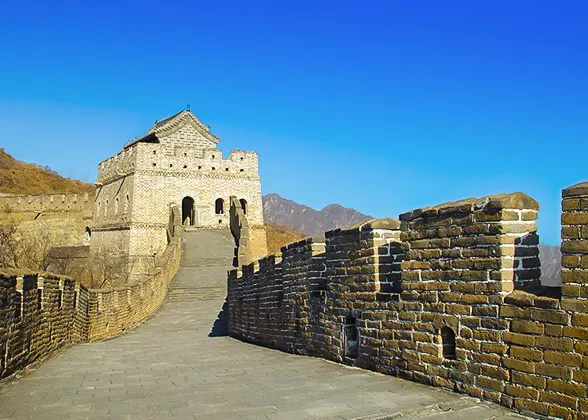
Travel to Mutianyu with Us
Basic facts of mutianyu great wall, how to tour mutianyu great wall.
The scenic area has two entrances: the south entrance and north entrance. One can start the visit from either of them.
Chairlift / Toboggan:
You can also take the toboggan down from Zhengguan Terrace (No. 6 Watchtower) near the South Entrance. It is very exciting to take toboggan, and a great choice for young people. The fare is listed below.
See more Visiting Mutianyu Great Wall: Toboggan, Cable Car, or Chairlift?
When is the Best Time for a Visit?
How to get to mutianyu from your hotel in beijing, where to eat, how about mutianyu great wall compared with badaling, you may like:.
Mutianyu Great Wall Travel Review
Great Wall of China in Huairou, Beijing
Which Section of Great Wall to Visit
6 Best Places to See Great Wall of China
Top 10 Places to Visit in Beijing
Where to Go in Beijing in Spring - Top 10 Destinations
8 Most Beautiful Places in Beijing in Autumn
12 Best Places to Visit near Beijing
Beijing - Badaling (Great Wall) High-Speed Train
- China Train
- Int’l Train from China
The Great Wall of China is a must-see attraction for tourists in China. The most visited section of the wall is the Great Wall at Badaling .
In response to the popularity of the site, a high-speed railway connecting Beijing downtown and the Great Wall at Badaling has put into service. These high-speed trains depart from Beijing North Railway Station or Qinghe Railway Station and end at Badaling Great Wall Railway Station , with the travel time of around 20 minutes.
Beijing – Badaling High-Speed Train Schedules
The high-speed train schedules in the table is only for your reference. To check up-to-date bullet train schedules between Beijing and Badaling Great Wall, pleae click here .
Beijing – Badaling Bullet Train Terminals
- Beijing North Railway Station (北京北站), Qinghe Railway Station (清河站)
- Badaling Great Wall Railway Station (八达岭长城站)
(Updated on April 24th, 2024)
Beijing North Railway Station
Beijing North Railway Station is one of the four major train stations in Beijing, serving bullet trains to Datong, Zhangjiakou, Hohhot and Badaling Great Wall, etc. Beijing North Railway Staton is about 8 kilometers (5 miles) from Tian'anmen Square, 10 kilometers (6 miles) from Beijing West Railway Station, 30 kilometers (19 miles) from Beijing Capital International Airport and 50 kilometers (31 miles) from Daxing International Airport.
Beijing North Railway Station is just beside Xizhimen Subway Station (西直门站), which is the transfer station for Beijing Subway Line 2, 4 and 13.
Qinghe Railway Station
Qinghe Railway Station is one of the terminal stations on Beijing–Datong High-Speed Railway, Beijing–Zhangjiakou High-Speed Railway and Beijing–Badaling Great Wall High-Speed Railway. It is about 16 kilometers (10 miles) from Tian'anmen Square, 25 kilometers (16 miles) from Beijing Capital International Airport.
Beijing North Railway Station is on line 13 on Beijing Metro network. Taking subway from Qinghe Train Station to the Forbidden City, Beijing West Railway Station and Beijing South Railway Station is within an hour.
Badaling Great Wall Railway Station
Badaling Great Wall Railway Station (Badalingchangcheng Railway Station) has been put into use, along with the opening of Beijing – Zhangjiakou High-Speed Railway. It is the deepest and largest underground station in the world. Badaling Great Wall Station is located right under Badaling Great Wall, with only 2-3 minutes' walk to Badaling Great Wall cable car station and around 800 meters to the climbing entrance.
Beijing–Badaling Regular Trains: S2 Trains
The S2 rail network runs from Huangtudian Railway Station (黄土店站), past Badaling Railway Station (八达岭站) and terminated at Yanqing Railway Station (延庆站). Please note that Badaling Railway Station is not Badaling Great Wall Station for high-speed trains.
Besides, non-bullet trains (S2 trains) between Beijing and the Great Wall at Badaling are still available. Tickets on non-bullet trains can only be bought at the train station.
Beijing to Badaling S2 Train Schedule
Badaling to beijing s2 train schedule, tips for taking s2 trains:.
1. S2 trains stop at Badaling Railway Station , which is a different train station from Badaling Great Wall Railway Station for high-speed trains. Badaling Railway Station is about 800 meters from the Great Wall. It takes 15-20 minutes walking from the station to the entrance of the Great Wall.
2. Yanqing Railway Station is locate in Yanqing District, a suburban district of Beijing. Yanqing Olympic Village , a Beijing Winter Olympic venue, is under construction and will be completed in 2020. Bus lines from Yanqing Station to the Olympic Village are under planning.
3. Huangtudian Railway Station is located at downtown Beijing. It is close to Huoying Subway Station along subway line 8 and line 13.
4. Ticket for S2 trains cannot be booked online in advance. They can only be purchased at the train station. Usually, tickets are always available on this route. But during peak season and holidays, it is advised to get to the station early to buy tickets.
- 2-Week Private China Tour: Beijing–Xi'an–Lhasa-Shanghai
- 12-Day China Silk Road Tour from Xi'an to Kashgar
- 11-Day China Classic Tour
- 14-Day China Natural Wonders Discovery
- 15 Best Places to Visit in China (2024)
- Best (& Worst) Times to Visit China, Travel Tips (2024/2025)
- How to Plan a 10-Day Itinerary in China (Best 5 Options)
- 8 Days in China: Top 15 Tours and Itineraries (2024/2025)
- China Weather in January 2024: Enjoy Less-Crowded Traveling
- China Weather in February 2024: Places to Go, Costs, and Crowds
- China Weather in March 2024: Destinations, Crowds, and Costs
- China Weather in April 2024: Where to Go (Smart Pre-Season Pick)
- China Weather in May 2024: Where to Go, Crowds, and Costs
- China Weather in June 2024: How to Benefit from the Rainy Season
- China Weather in July 2024: How to Avoid Heat and Crowds
- China Weather in August 2024: Weather Tips & Where to Go
- China Weather in September 2024: Weather Tips & Where to Go
- China Weather in October 2024: Where to Go, Crowds, and Costs
- China Weather in November 2024: Places to Go & Crowds
- China Weather in December 2024: Places to Go and Crowds
Get Inspired with Some Popular Itineraries
More travel ideas and inspiration, sign up to our newsletter.
Be the first to receive exciting updates, exclusive promotions, and valuable travel tips from our team of experts.
Why China Highlights
Where can we take you today.
- Southeast Asia
- Japan, South Korea
- India, Nepal, Bhutan, and Sri lanka
- Central Asia
- Middle East
- African Safari
- Travel Agents
- Loyalty & Referral Program
- Privacy Policy
Address: Building 6, Chuangyi Business Park, 70 Qilidian Road, Guilin, Guangxi, 541004, China

IMAGES
VIDEO
COMMENTS
The Great Wall at Badaling is located 72 kilometers northwest of Beijing city center, taking 1½ hours to get there by taxi.You can also get to the Great Wall at Badaling by S2 train and will be able to get there in a bullet train by 2020.. Option 1. By Taxi (1½ hours, $36) It costs about 240 yuan ($36) with the toll fee included each way to get to the Great Wall at Badaling scenic area from ...
Though the Great Wall is over 6,000 kilometers long, the best 10 sections to visit are around Beijing's north and east: 1) the best-restored, Mutianyu, 2) the most beautiful, Jinshanling, 3) the wildest, Jiankou, 4) Simatai, 5) Huanghuacheng, 6) Gubeikou, 7) Juyongguan, 8) Huangyaguan, 9) Shanhaiguan, and by far the most crowded 10) Badaling ...
The downtown Beijing to Great Wall distance is about 60 - 130 km (35 - 80 mi), so you can get to most of them from Beijing by public transport, private car, or private tour. Public transport is a nice choice for budget travelers. For example, you can take bus line 877, high speed train or S2 train to Badaling directly; bus 916 Express to ...
The best way to get to the Great Wall from Beijing is by bus or to hire a car. The nearest is the Juyongguan Great Wall, 60 kilometers away from the downtown; the two best-known sections, Badaling and Mutianyu, are 70 kilometers (43 miles) and 80 kilometers (50 miles) away respectively. All of the above can be visited in one day.
How to Visit the Great Wall . Most visitors go to the Great Wall as part of a half or full day trip from Beijing. Visitors can choose from over 12 well-known sections and access them through a group tour, private driver, private tour, public transportation (sometimes combined with taxis), or by driving their own car.
The Best Times to Visit: Spring and Fall. The best times to visit the Great Wall (around Beijing) are spring and autumn to avoid the summer heat and crowds, and winter freezing conditions. Spring (April-May) in Beijing's mountains is cool/warm and the green plants and flowers make the Great Wall beautiful. Fall (September-November) is the ...
There are more than 10 sections of Great Wall located in the northern area about 60~160km from central Beijing. Mutianyu is the best option if you travel with kids, or want to enjoy a leisure and scenic hike. If you are a hiker, choose 1 or 2 sections among Jinshanling, Simatai and Gubekou to hike 1 or 2 days.
A. Jiankou to Mutianyu. B. Jinshanling to Simatai west. C. Gubeikou to Jinshanling Hike. These hikes are hard to decide as they are all great and offer an excellent view of the Great Wall. However, if you like a stricter hike, Jiankou to Mutianyu with 11kms beats the Jinshanling.
The longest fully-restored section of the Great Wall is the one at Mutianyu, known in China as "Admire Fields Valley". At around 73 kilometers from the center of Beijing, it takes around 1.5 hours to drive there and is open all year round. With 23 original-style restored watchtowers, the Great Wall at Mutianyu lies in the Huairou County to ...
Explore the Great Wall at your leisure for a couple of hours. Enjoy a post-hike lunch at a local restaurant. Visit Beijing's Royal Summer Palace with your private guide and stroll through its grounds. Get dropped off at your hotel. Price: 2 People: $188 USD per person. 3 People: $148 USD per person.
Here is a guide on how to board the train: First take either the Line 8 or Line 13 subway to Huoying Station, exit from Gate G4 (霍营站) Then, proceed to Huangtudian Station (黄土店站) to catch the S2 train. Get off at Badaling Great Wall Station. The journey to the Great Wall takes around 50 minutes to 1.1 hours.
In terms of visiting the Great Wall from east to west, the top 8 recommended sections are Simatai, Jinshanling, Gubeikou, Mutianyu, Jiankou, Huanghuacheng, Juyongguan, and Badaling. These fortified walls serve as a stronghold in protecting the capital of China, Beijing.
11:00-14:00: Visit the Great Wall. It takes around 2-3 hours to hike on foot; one can also take cable cars or slides. 14:00-14:30: Have some food in the nearby KFC. You can also feed yourself before climbing. 14:30-14:50: Walk to the parking lot and find bus 877. 14:50-16:20: Take bus 877 back to downtown Beijing.
Visiting the Great Wall of China from Beijing, to Badaling. BEIJING TO BADALING BUS: You can take the Public bus here for just $2/¥12 and it takes less than 2 hours each way. From Jishuitan subway station take Exit A , Deshengmen arrow tower on your left. Bus 877 (or 879) leaves exactly behind the tower.
How to Get There. tourists explore the wall from Beijing. The most popular section (Badaling) is 42 miles (70 kilometers) from the city. This section boasts impressive views, and with crowds come ...
China, Asia. Coiling its way through 23 degrees of longitude, the Great Wall (长城, Chángchéng) stands as an awe-inspiring monument to the grandeur of China's ancient history. With sections dating back 2000 years, the wall (or, more accurately, walls, because they belong to several different eras) wriggle haphazardly from their scattered ...
Tip 2: Best time to hike the Great Wall. In Beijing, all the officially administered sections of the Great Wall are open to tourists all year round. The ideal months for the Great Wall hike fall on spring, early summer, and autumn: later March, April, May, June, September, October and early November.
RELATED READING: 144 Hours of Visa-Free Travel in Beijing and Hebei. The Great Wall from Beijing: For the Wild at Heart. If you're an avid hiker looking for a lesser-visited section of the wall, then Huanghuacheng, the "Yellow Flower Wall" might be the place for you. The Huanghuacheng section of the Great Wall is further away from the ...
The Great Wall of China, the largest man-made project in the world, is a series of ancient fortifications built in northern China. Although named the 'wall', it is an integrated defense system including not only lofty and solid walls, but also massive signal towers, barriers, barracks, garrison stations, and fortresses along the walls, together forming an insurmountable line, for thousands of ...
The Great Wall of China is one of the greatest sights in the world. A Great Wall tour is a must for most first China trips. Along this super-long wall, Beijing is the top destination for seeing well-maintained and abundant Great Wall relics of the Ming Dynasty (1368-1644).There are eight sections close to Beijing: Badaling, Mutianyu, Jinshanling, Jiankou, Simatai...
6 Things to Do on Mutianyu Great Wall of China. - Last updated on Jan. 03, 2024 by Brenda Lian -. 6 best places to see Great Wall of China are Mutianyu, Badaling, Simatai, Jinshanling and Jiankou in Beijing; and Gansu for Jiayuguan, Yumenguan and Dunhuang Great Wall.
The Great Wall of China. No visit to Beijing is complete without a trip to the Great Wall of China.Spanning over 13,000 miles, this ancient fortification winds its way through the mountains and ...
It only takes about 2.5 hours and costs CNY 65 for a single journey. However, the Mutainyu Special Line only departs at 8:30 and 12:00. The Great Wall of Mutianyu, 65km from downtown Beijing, can be visited by joining our small group Mutianyu tours, or booking a ticket with us beforehand.
The Great Wall of China is a must-see attraction for tourists in China.The most visited section of the wall is the Great Wall at Badaling.. In response to the popularity of the site, a high-speed railway connecting Beijing downtown and the Great Wall at Badaling has put into service. These high-speed trains depart from Beijing North Railway Station or Qinghe Railway Station and end at Badaling ...